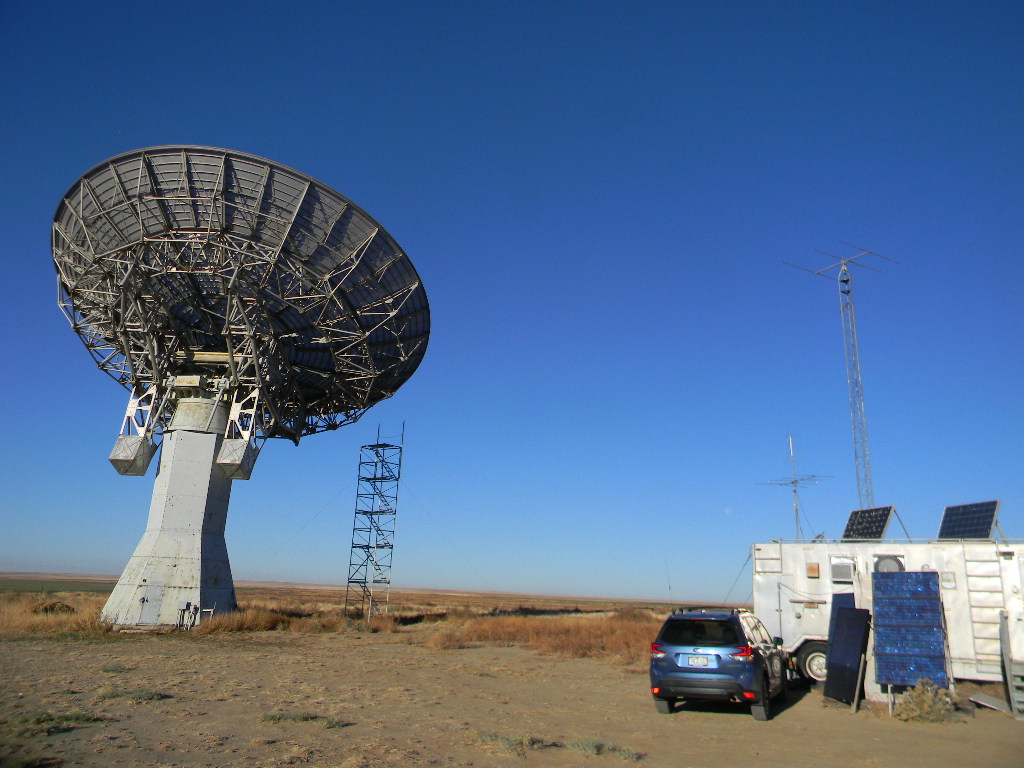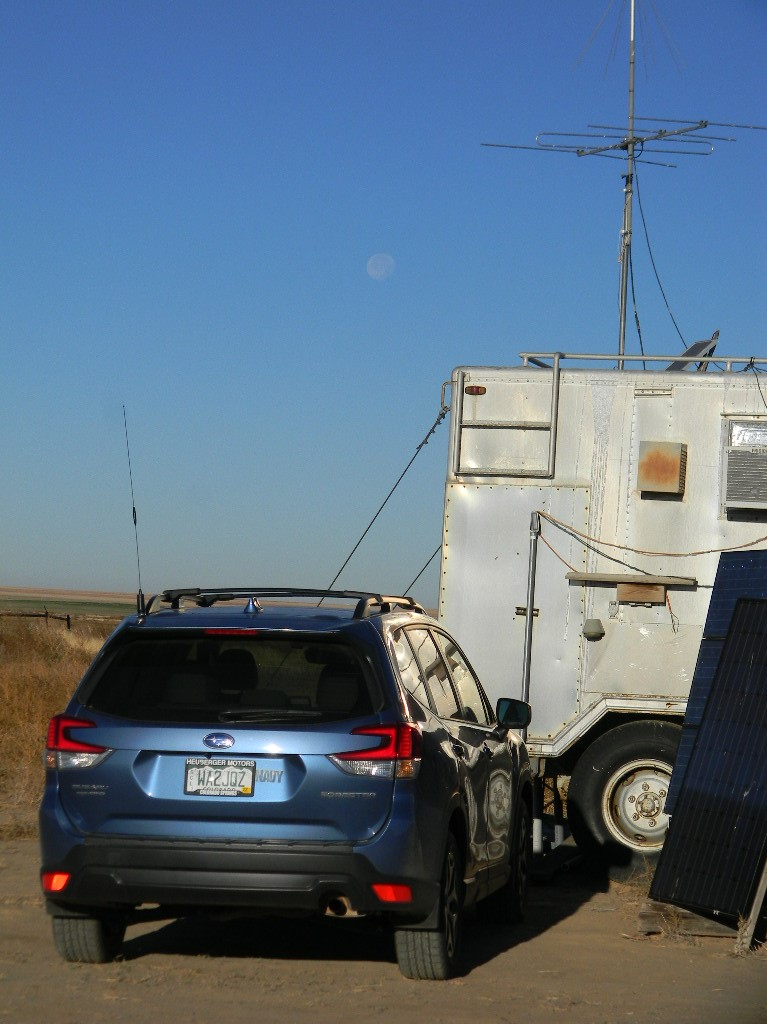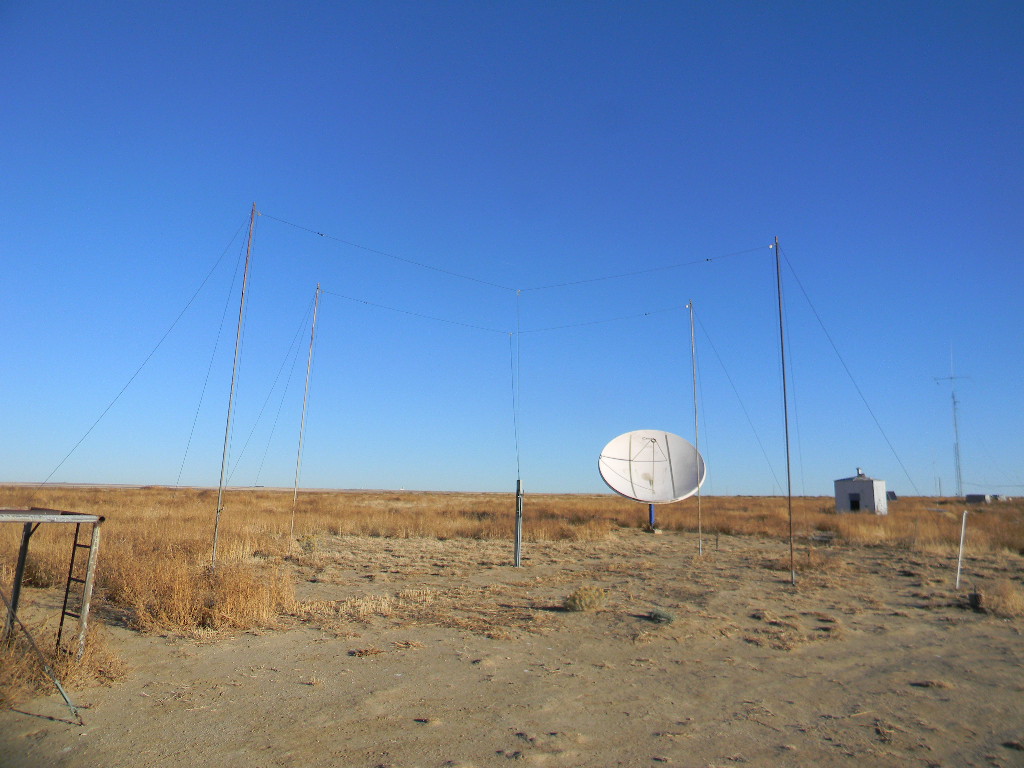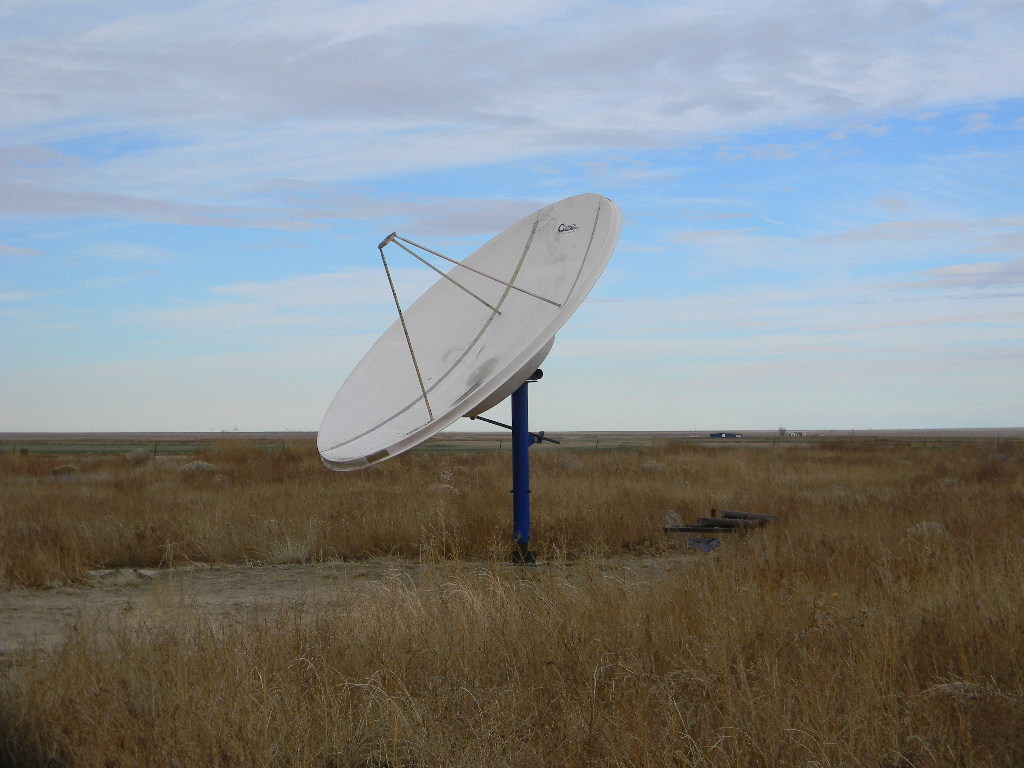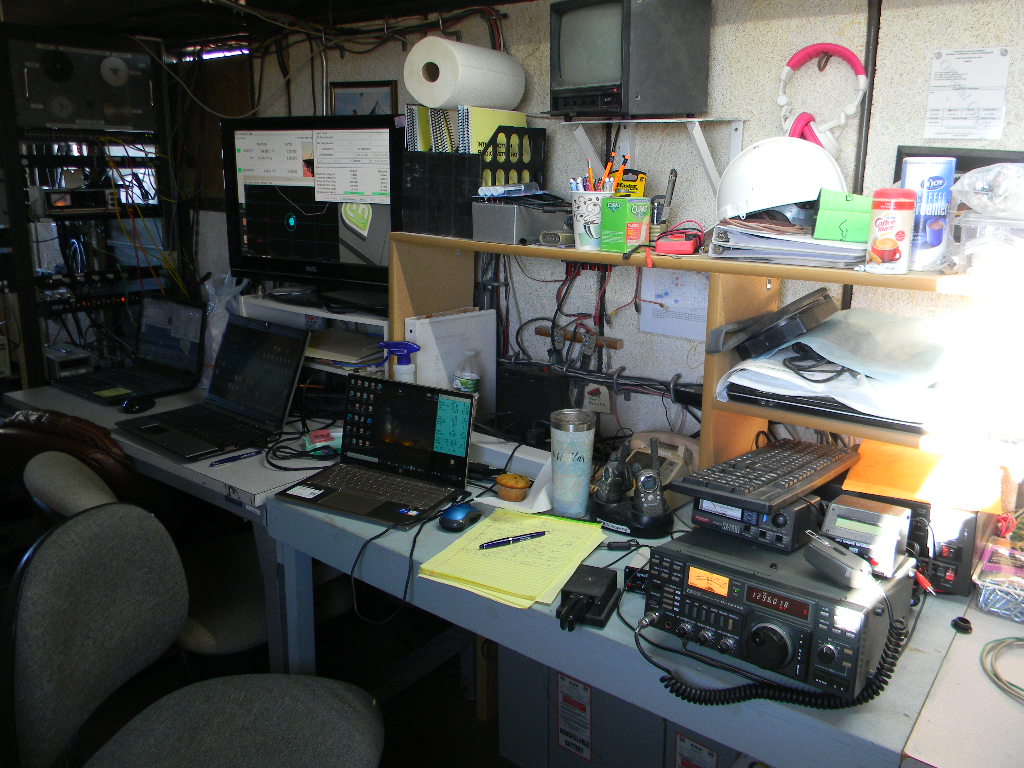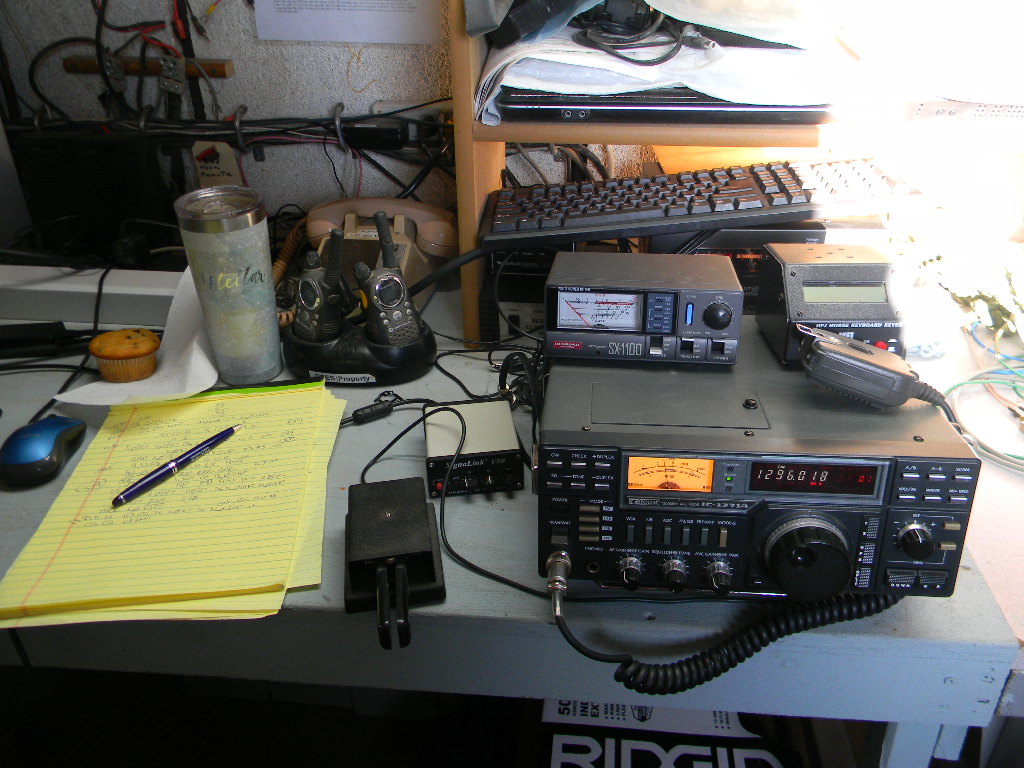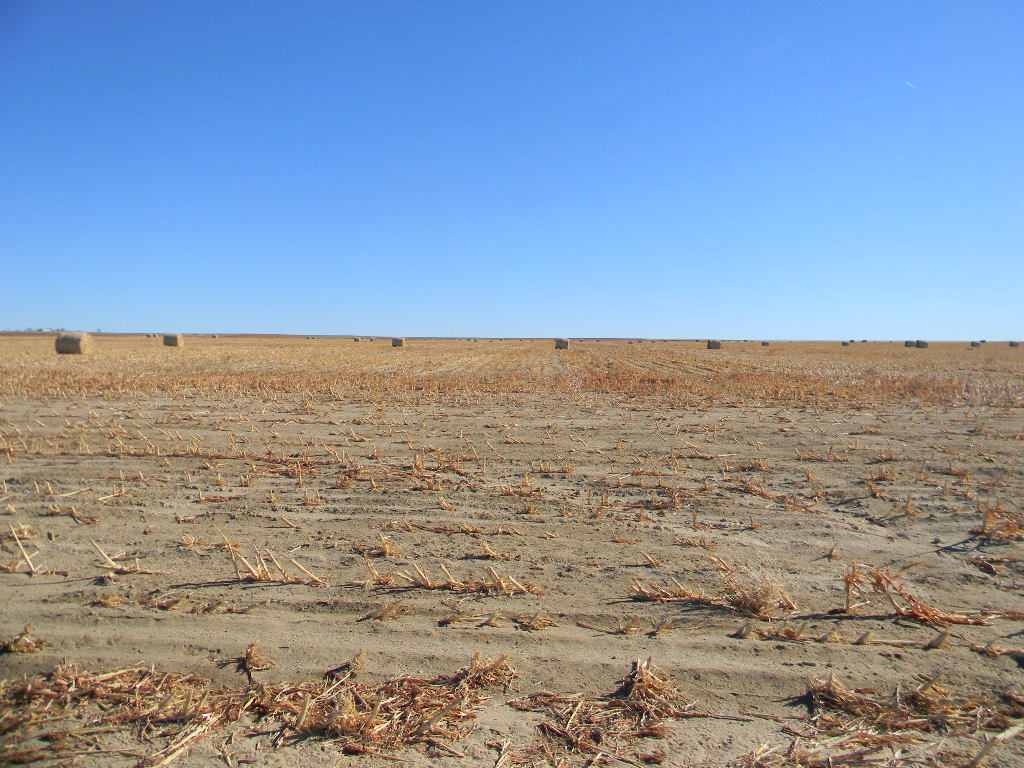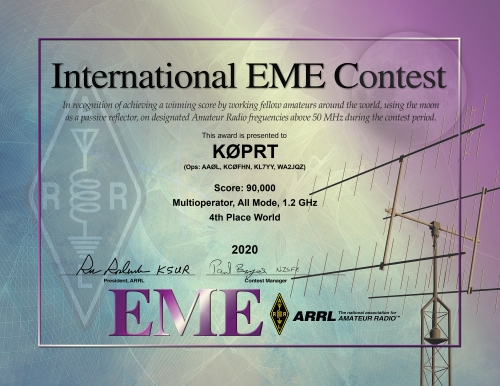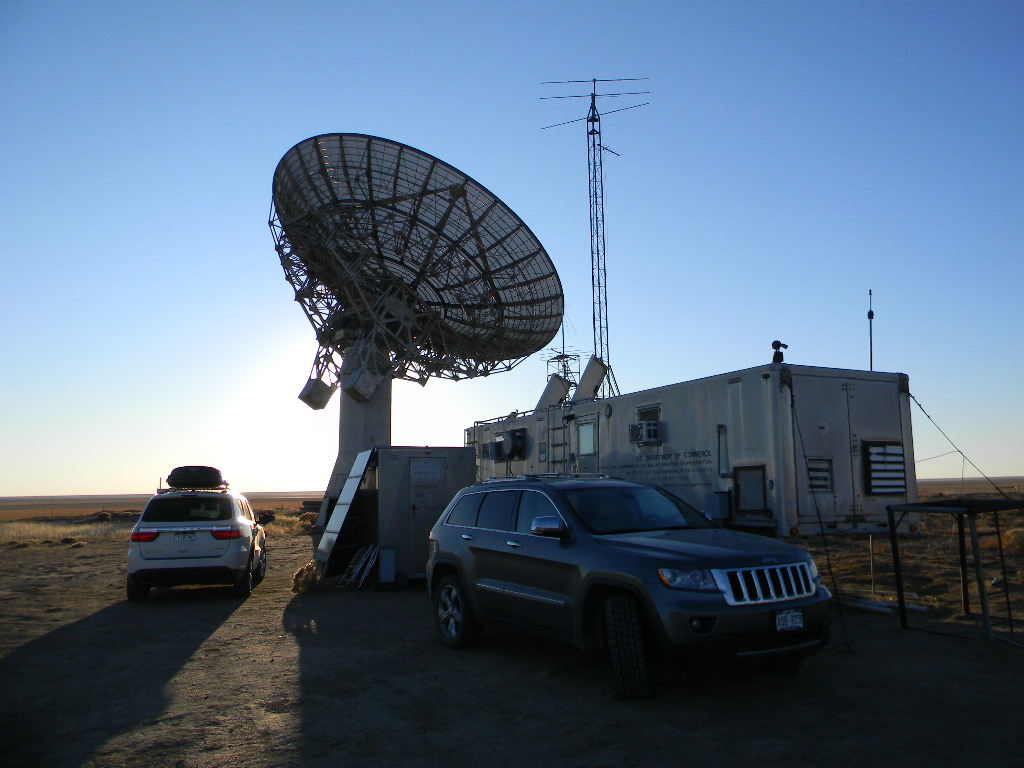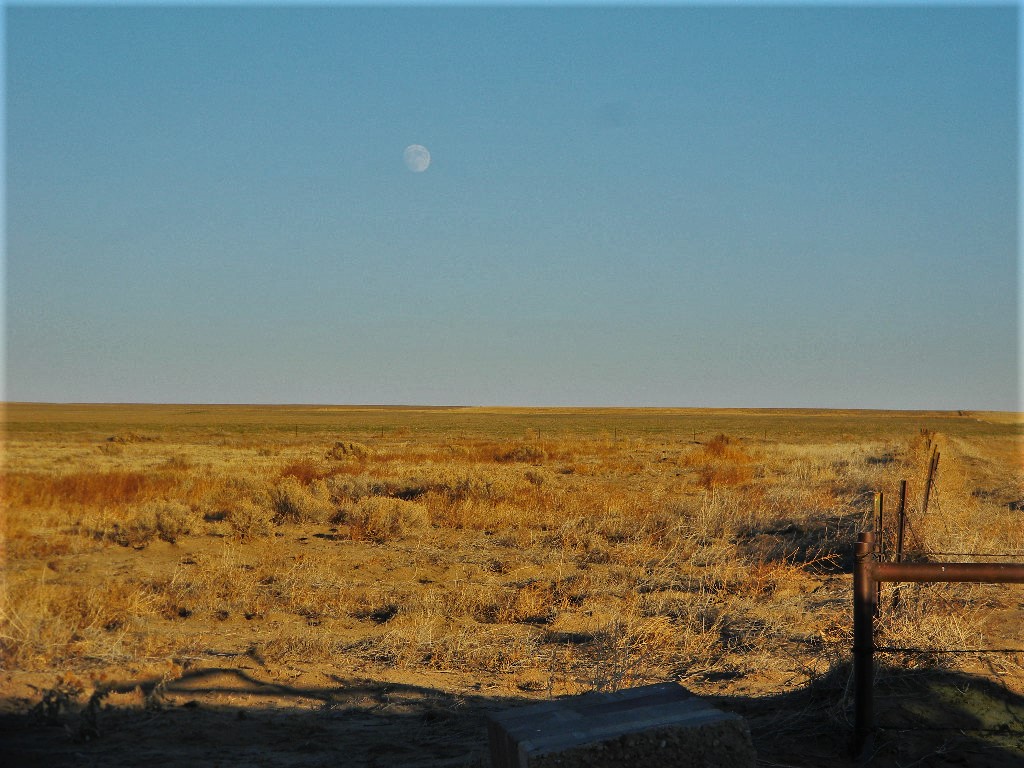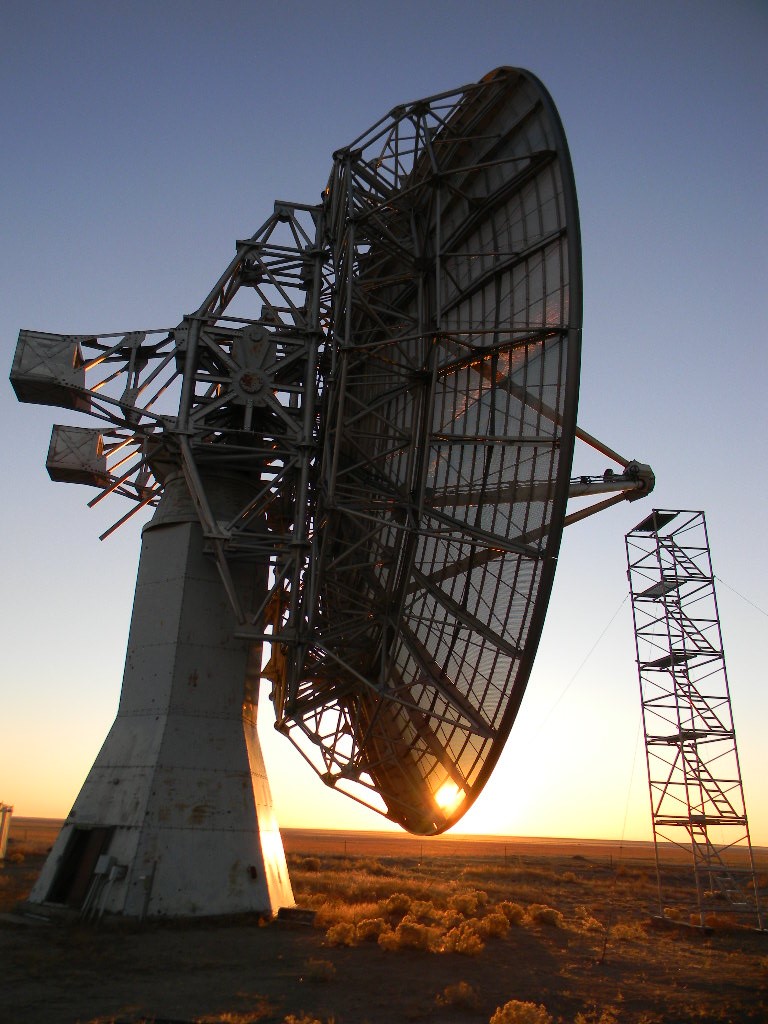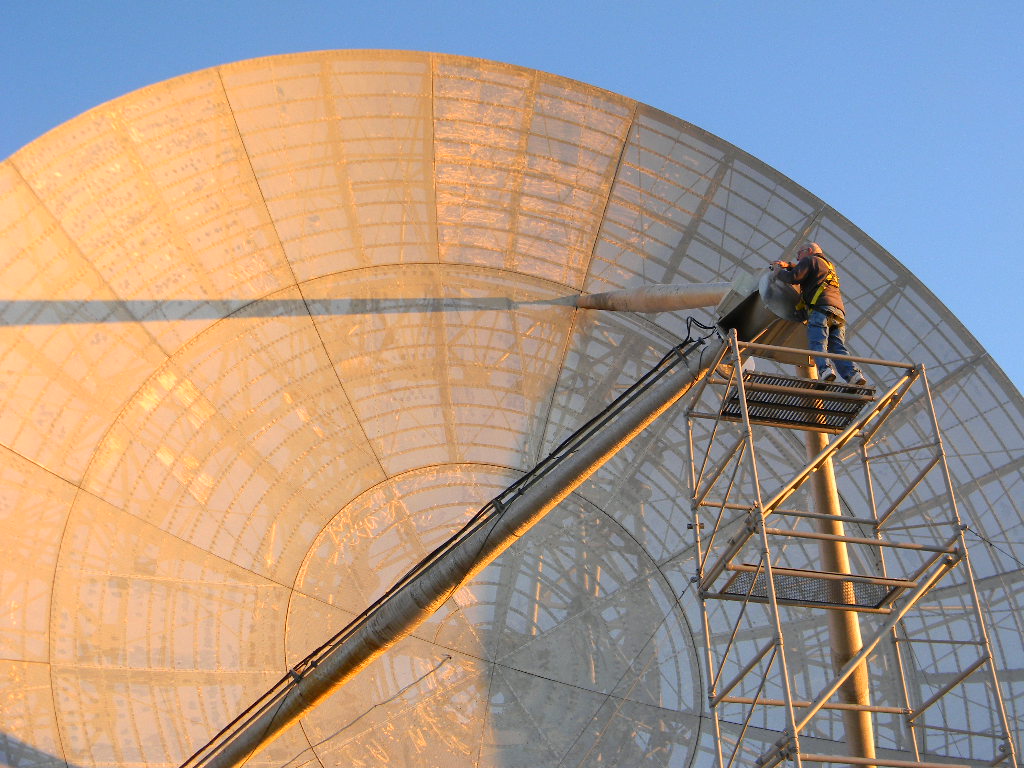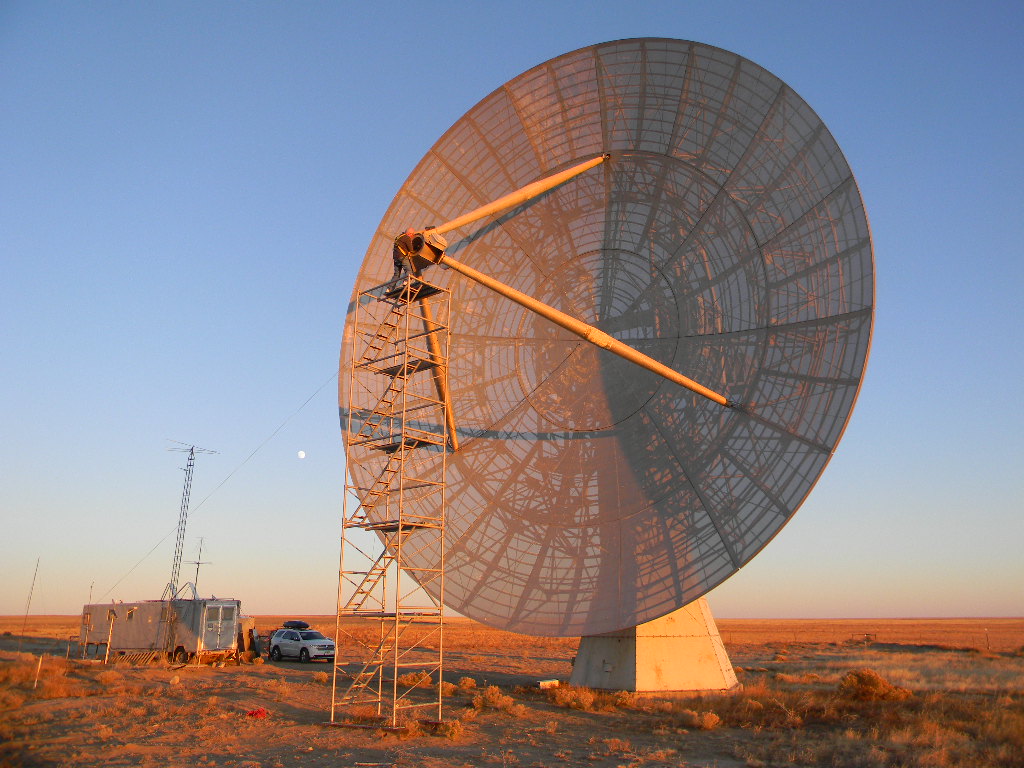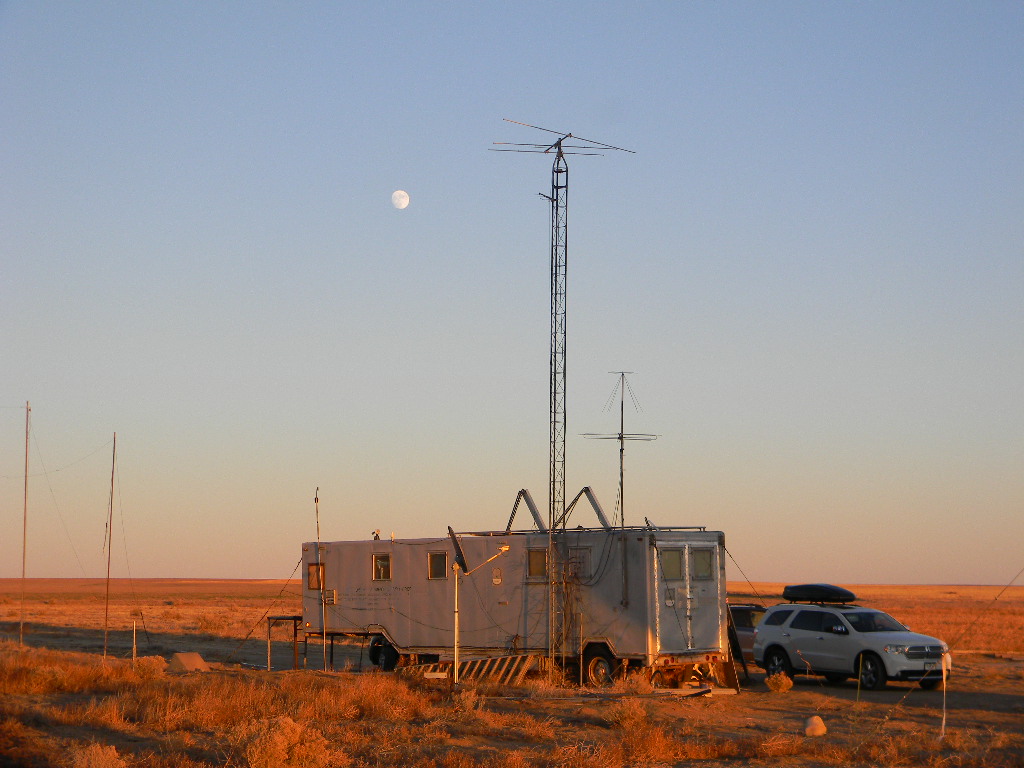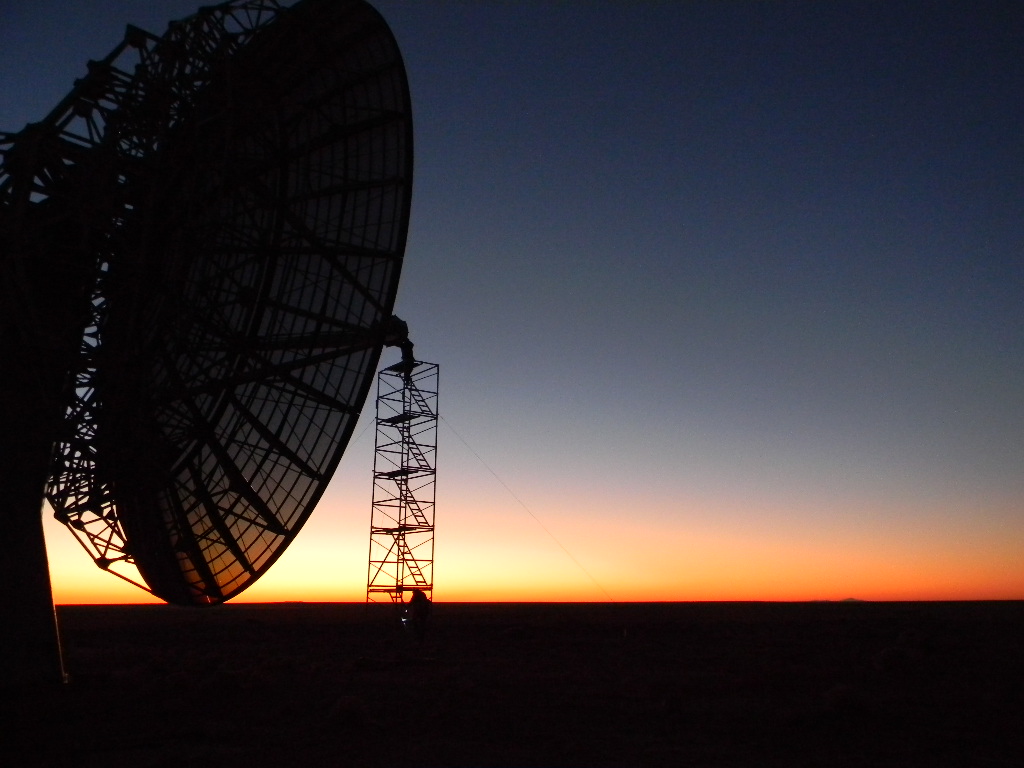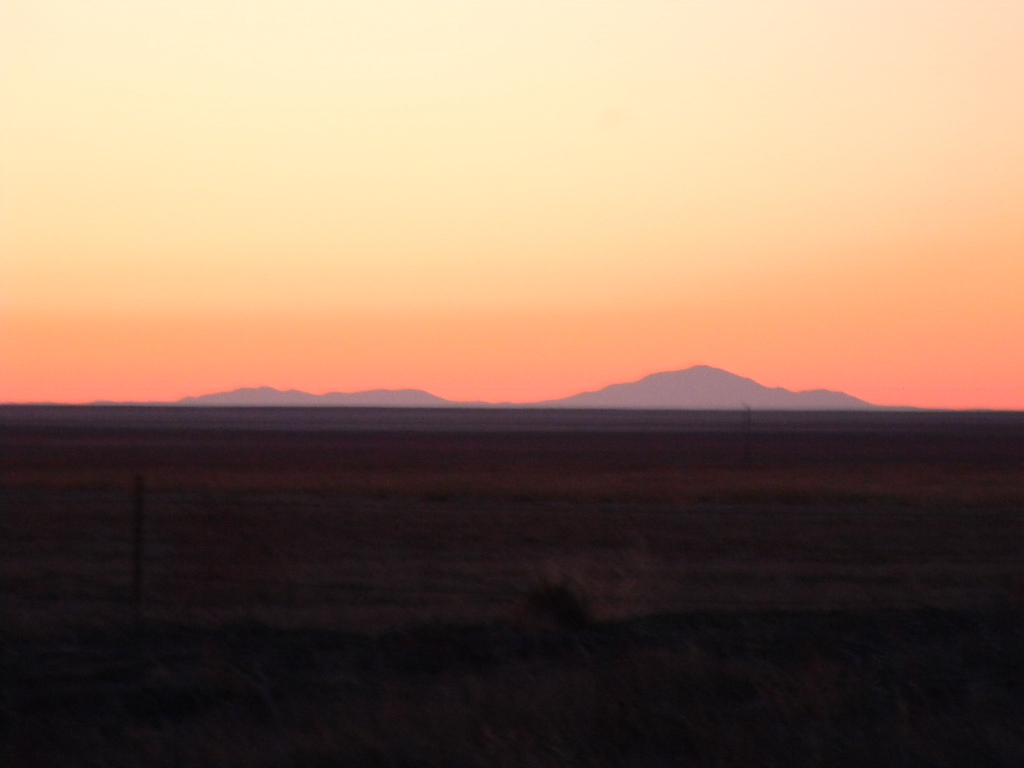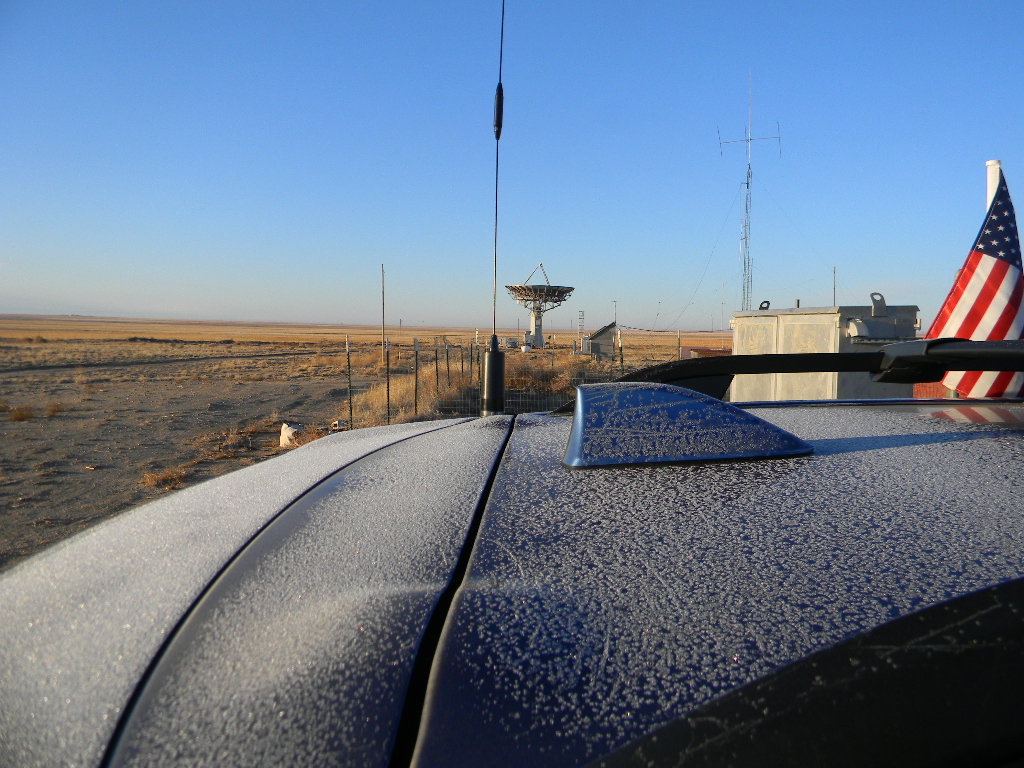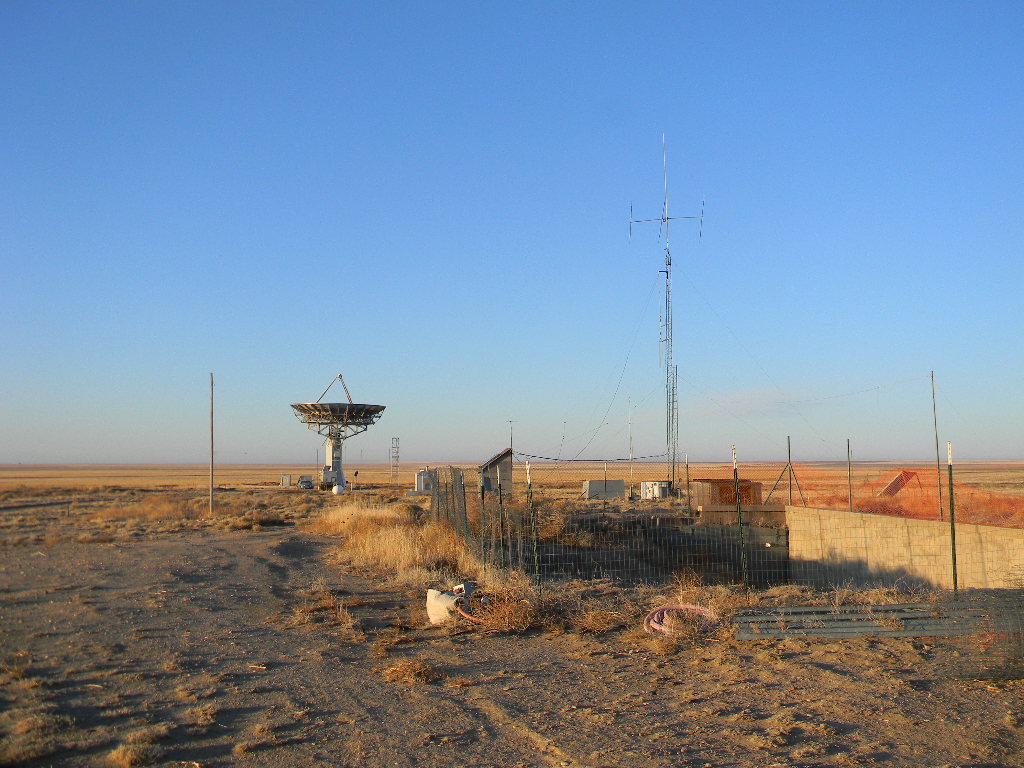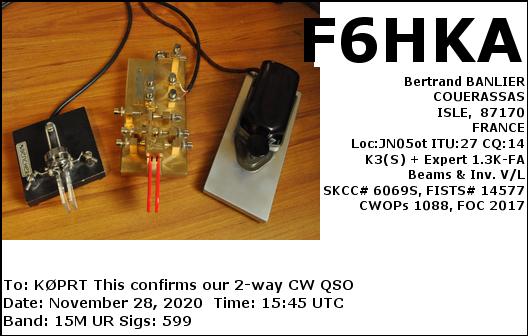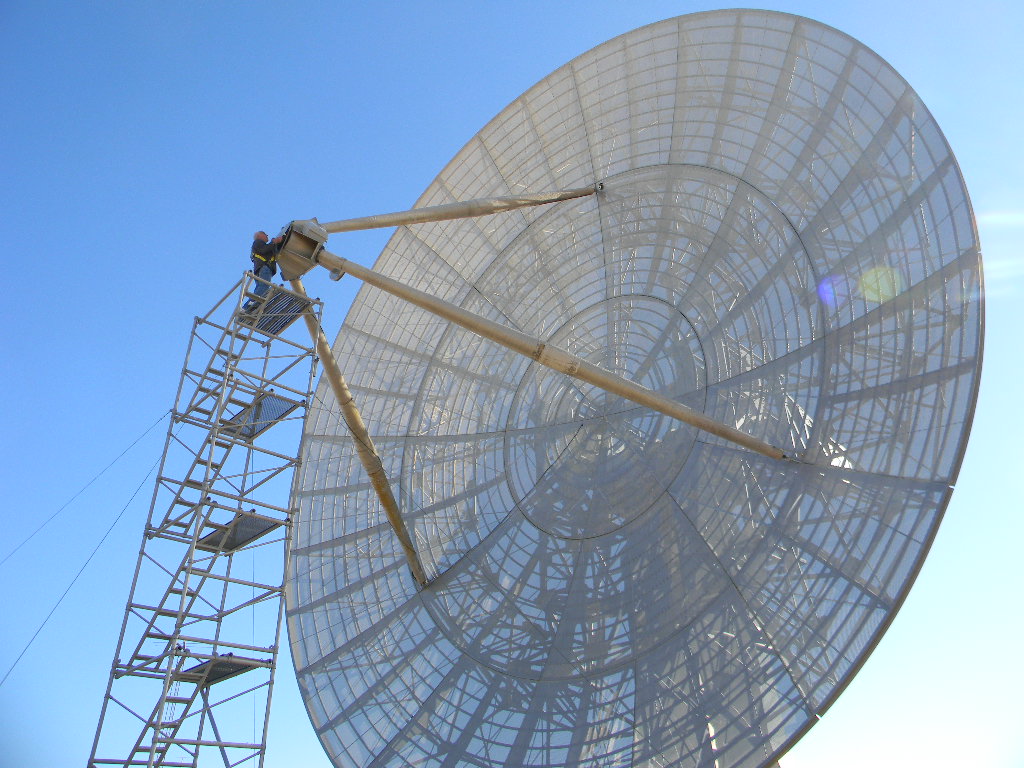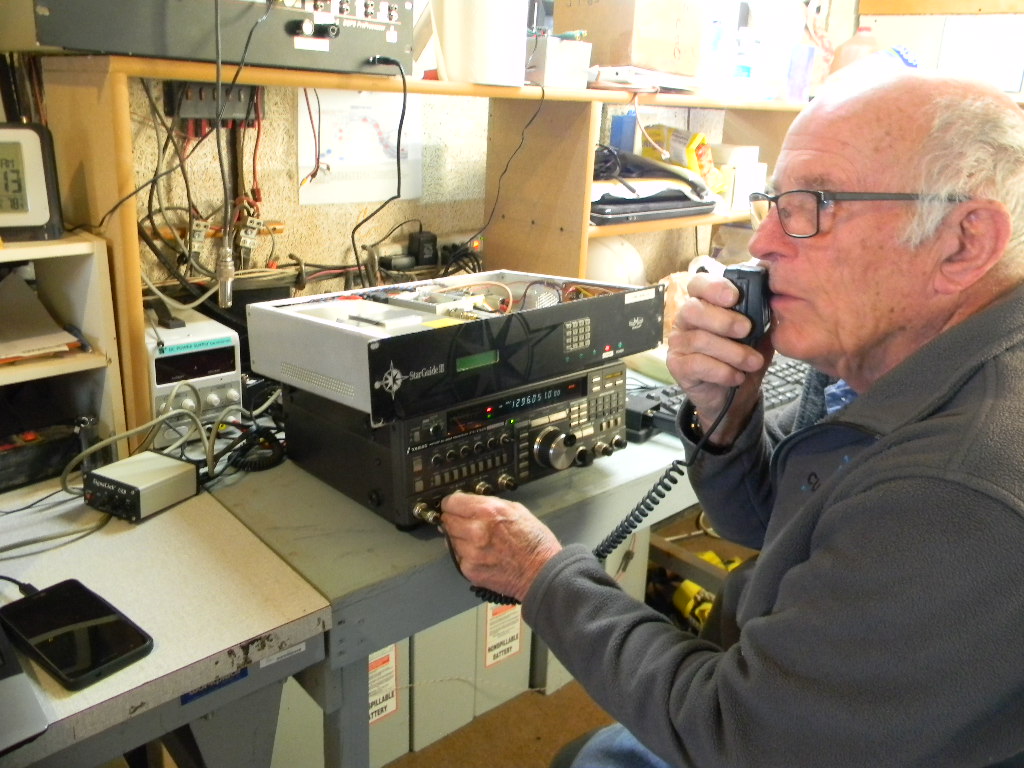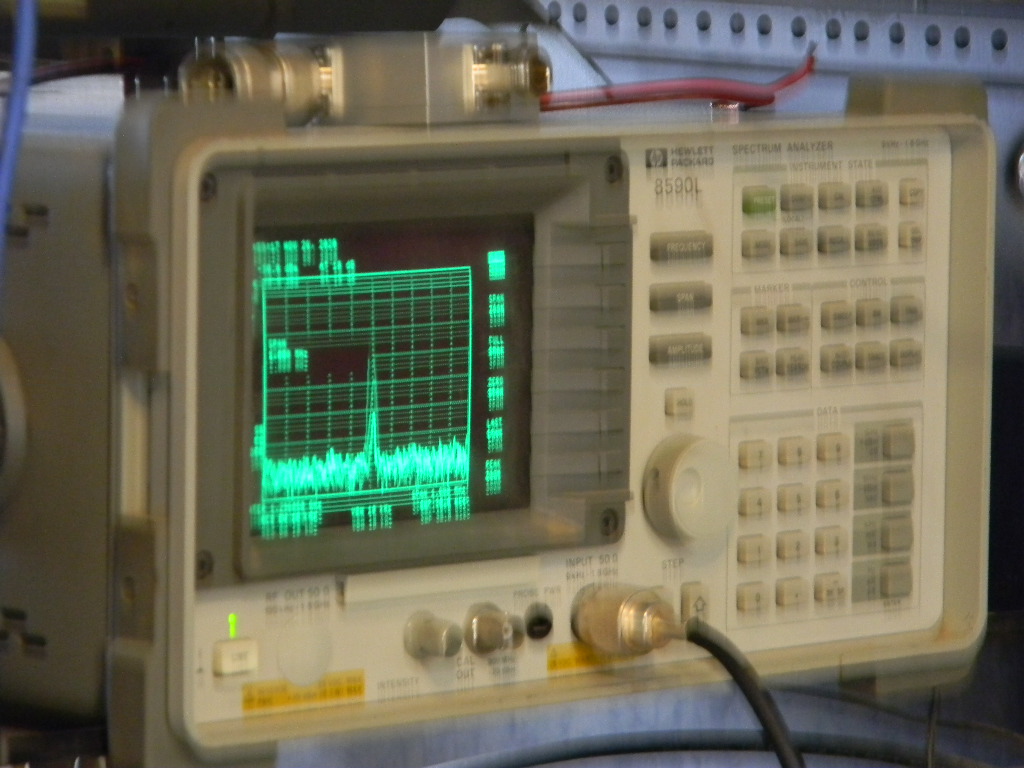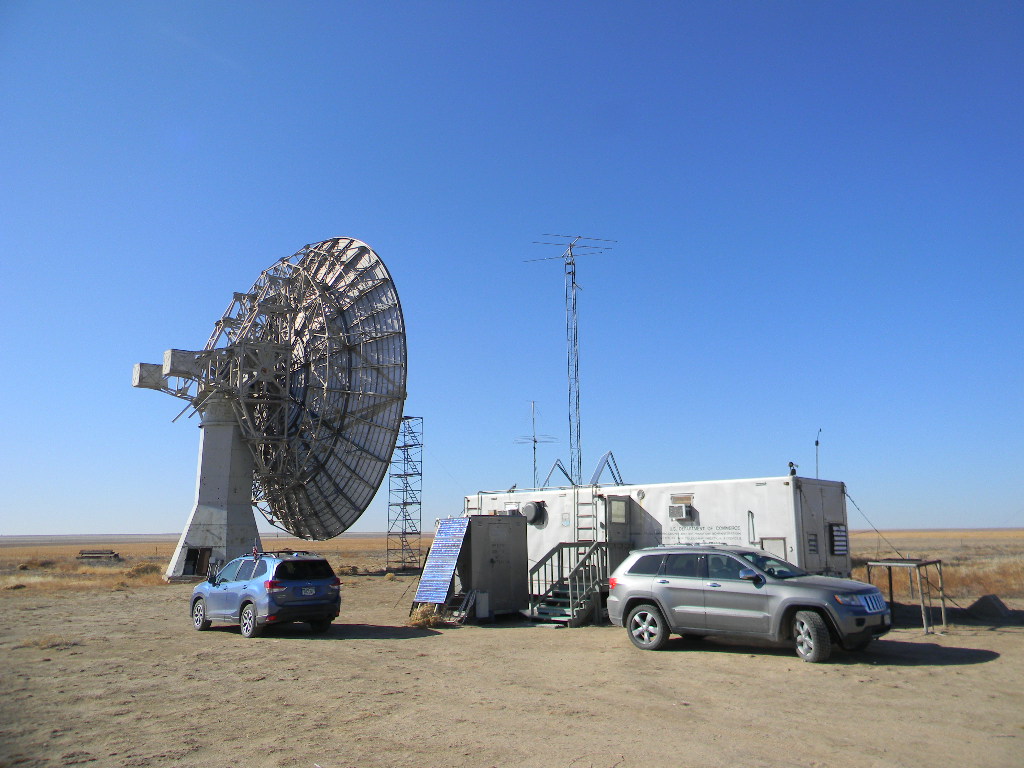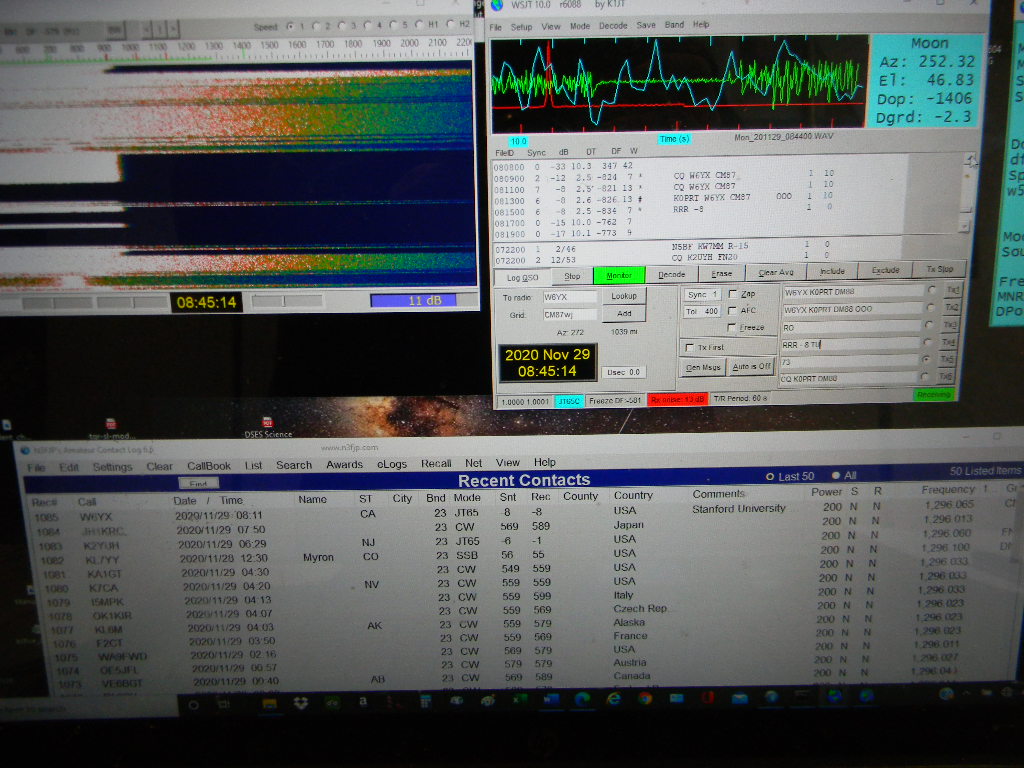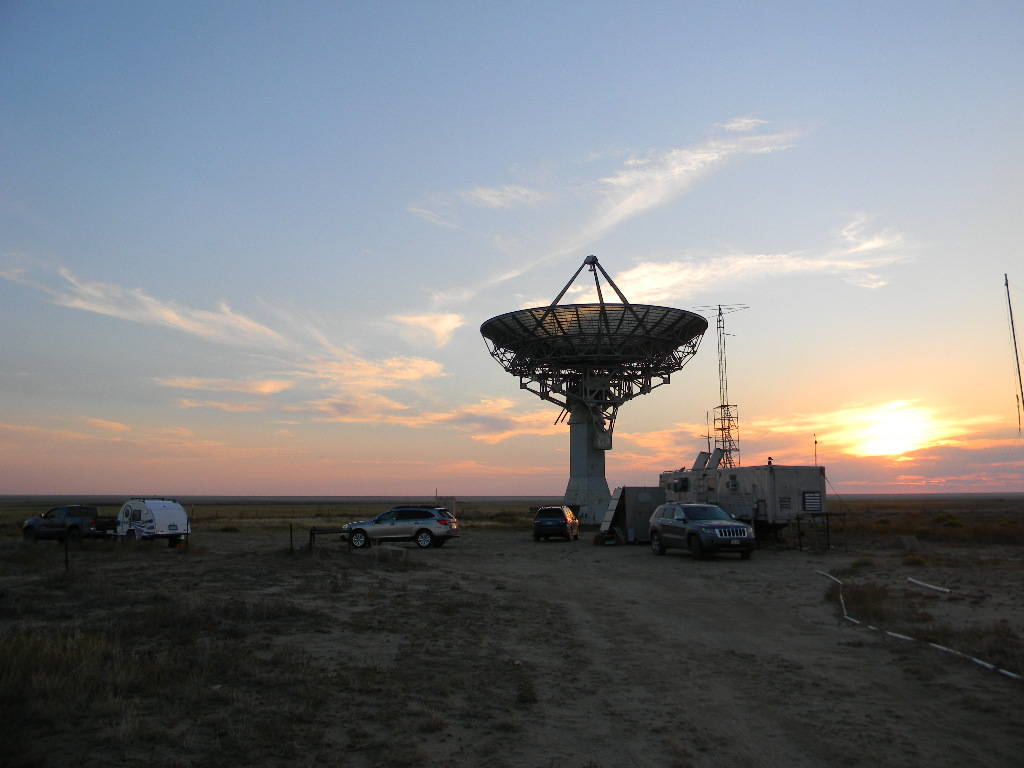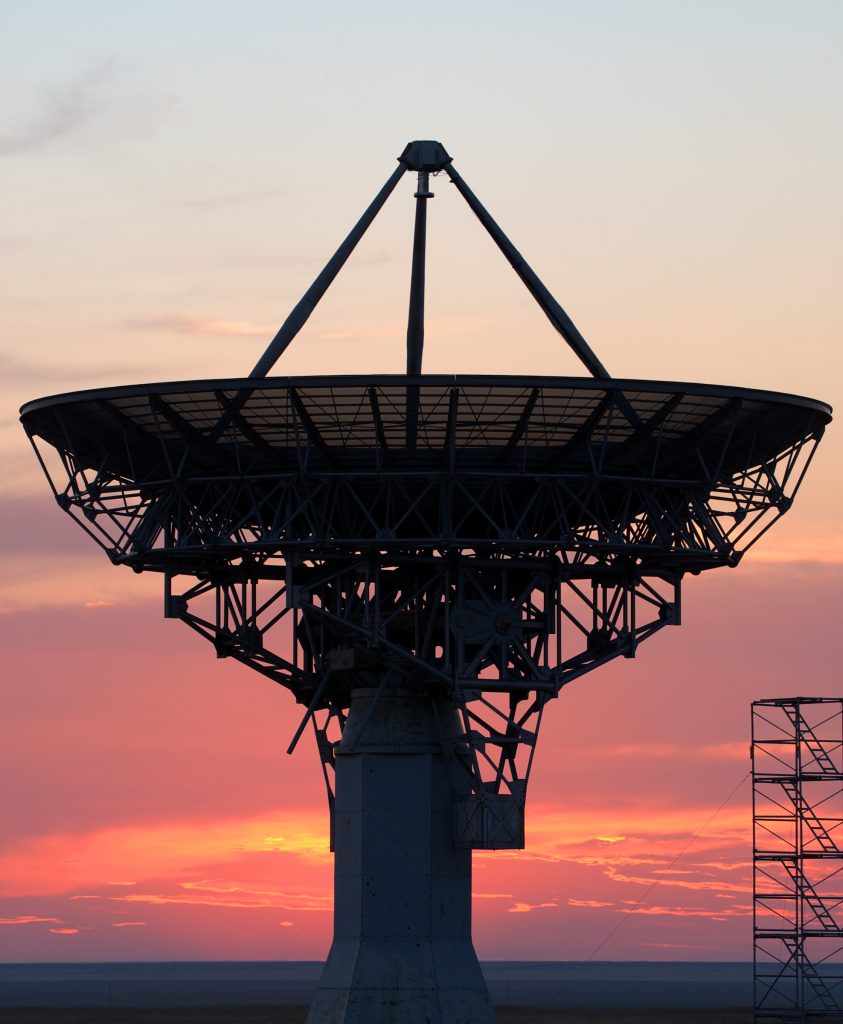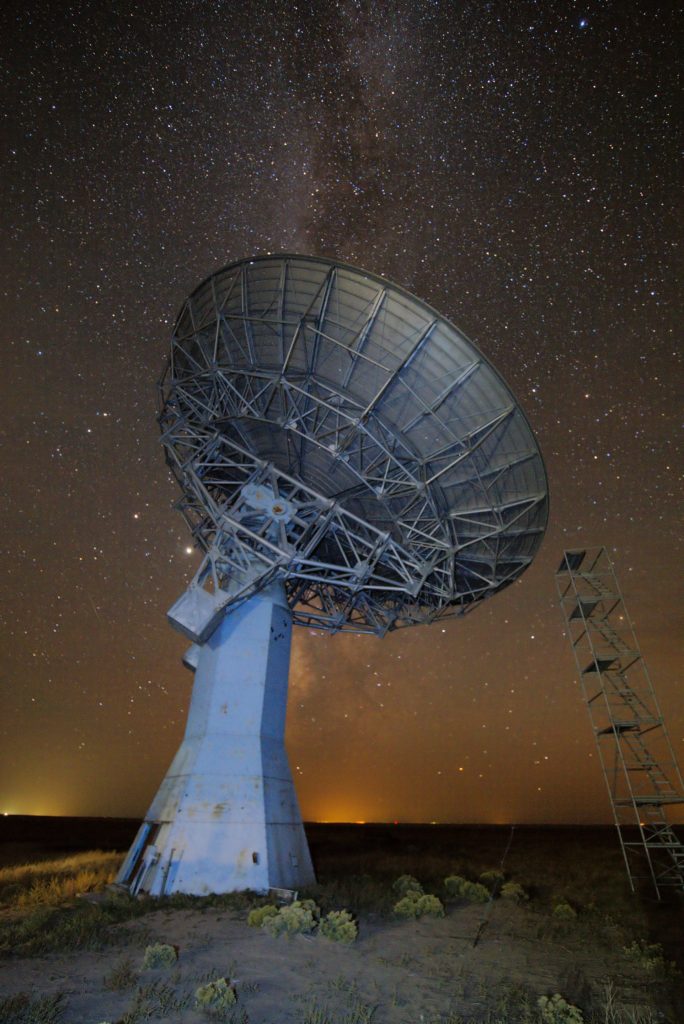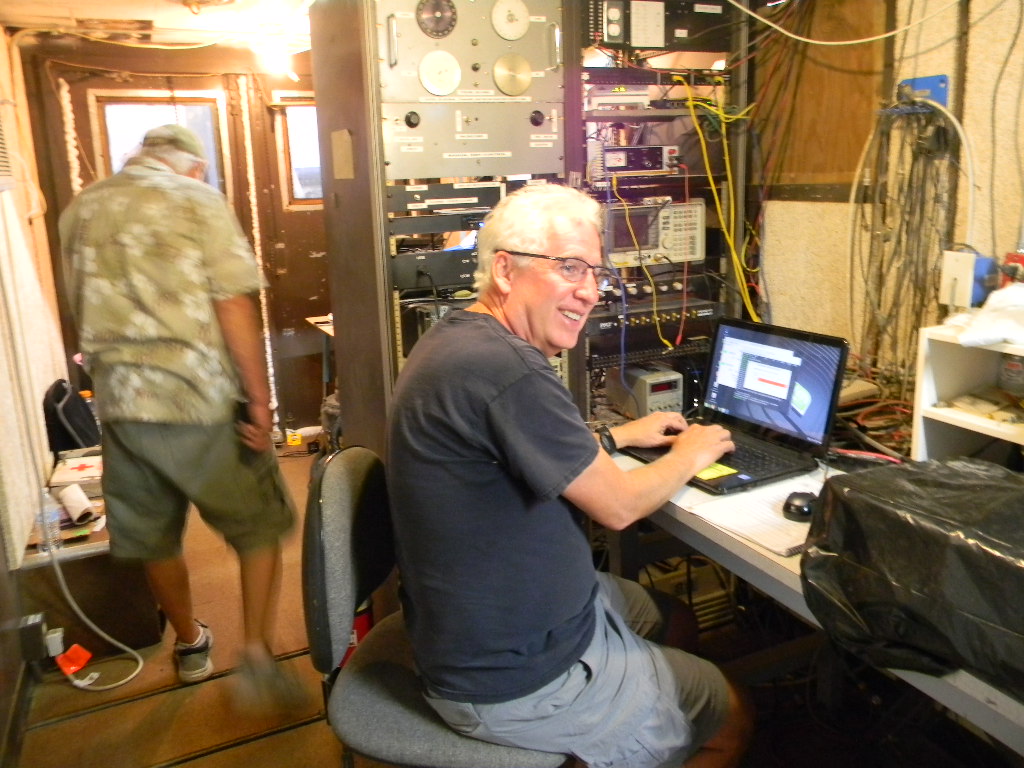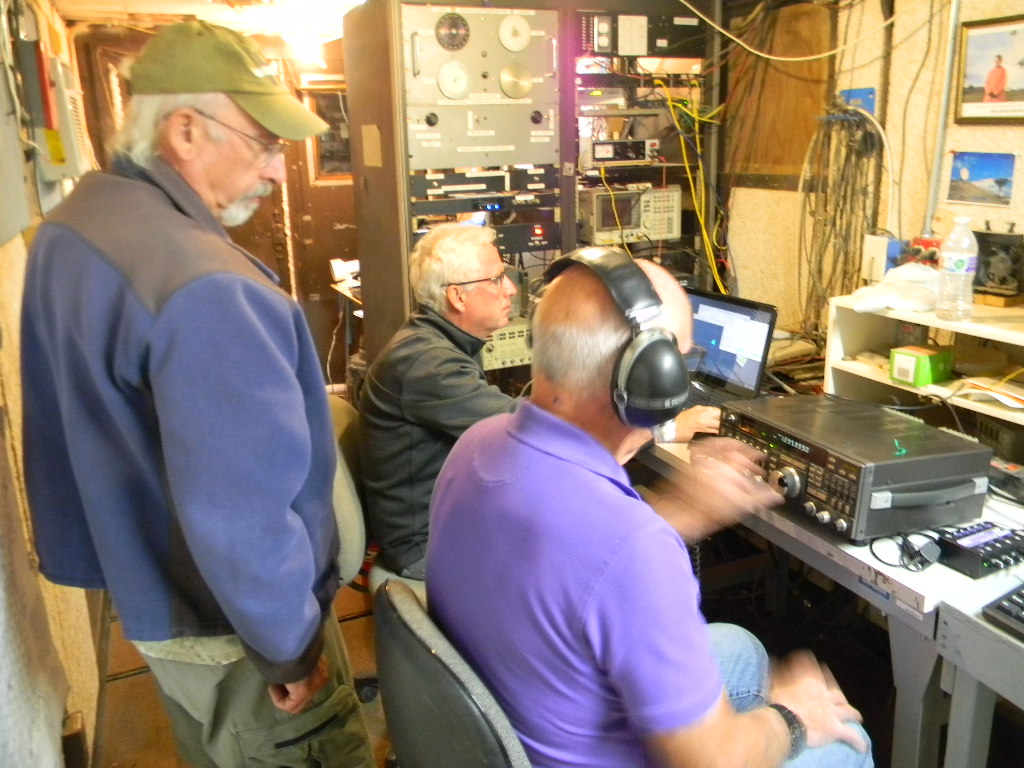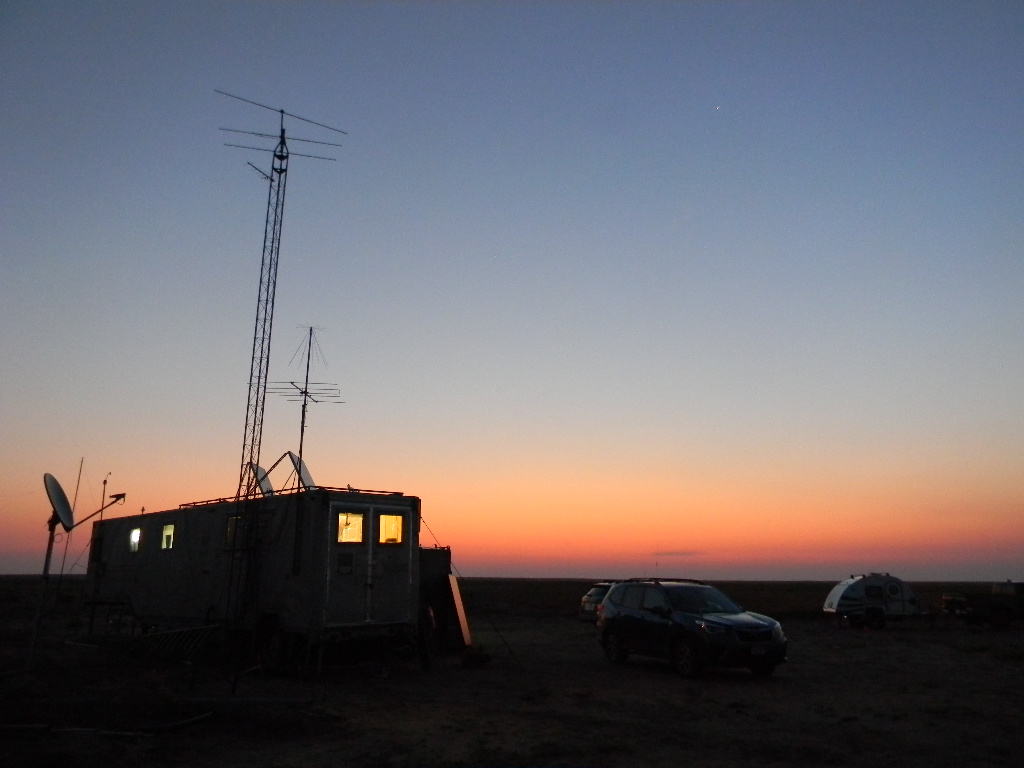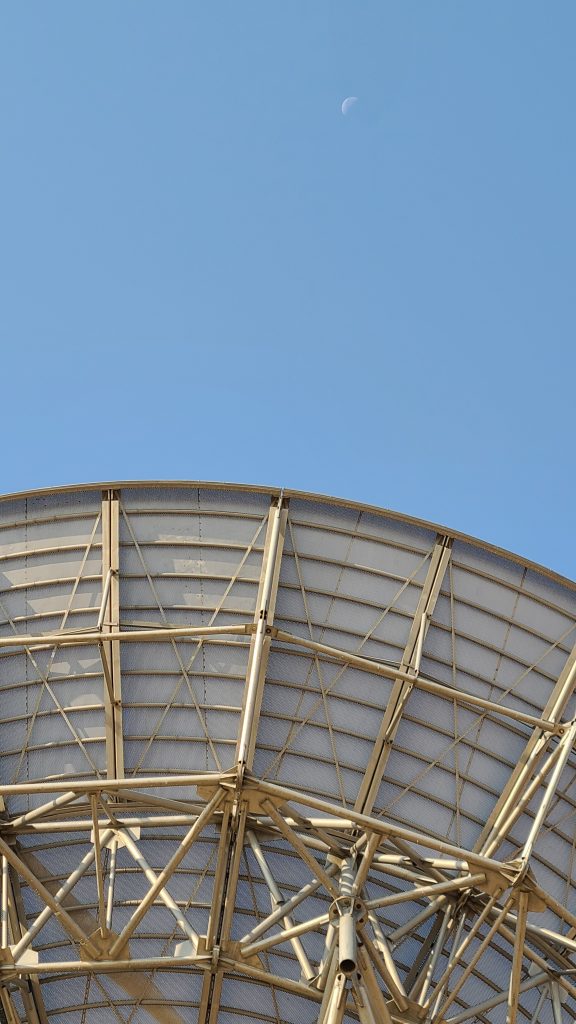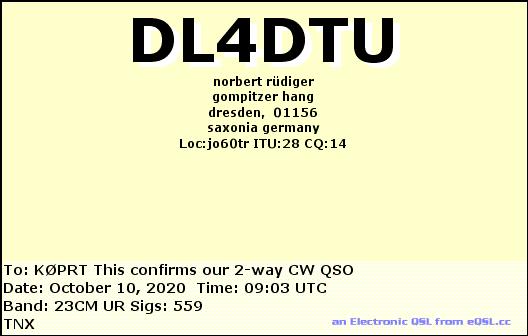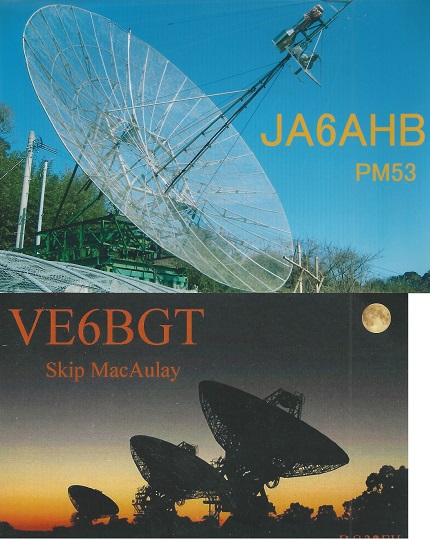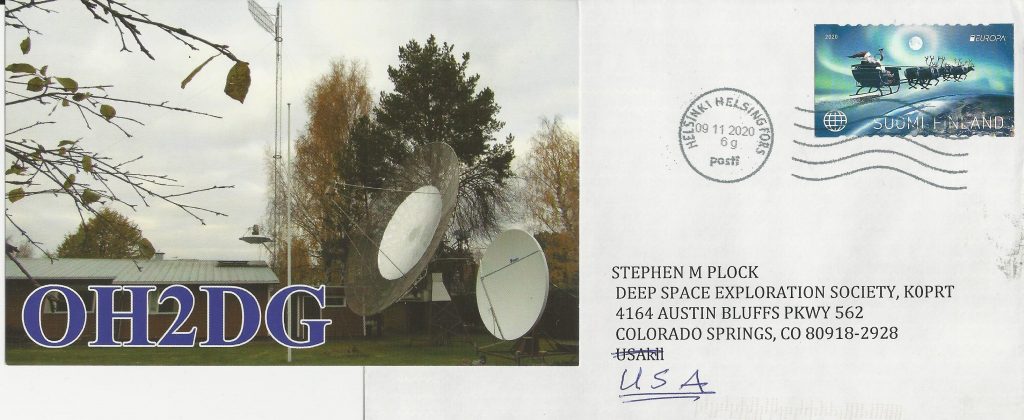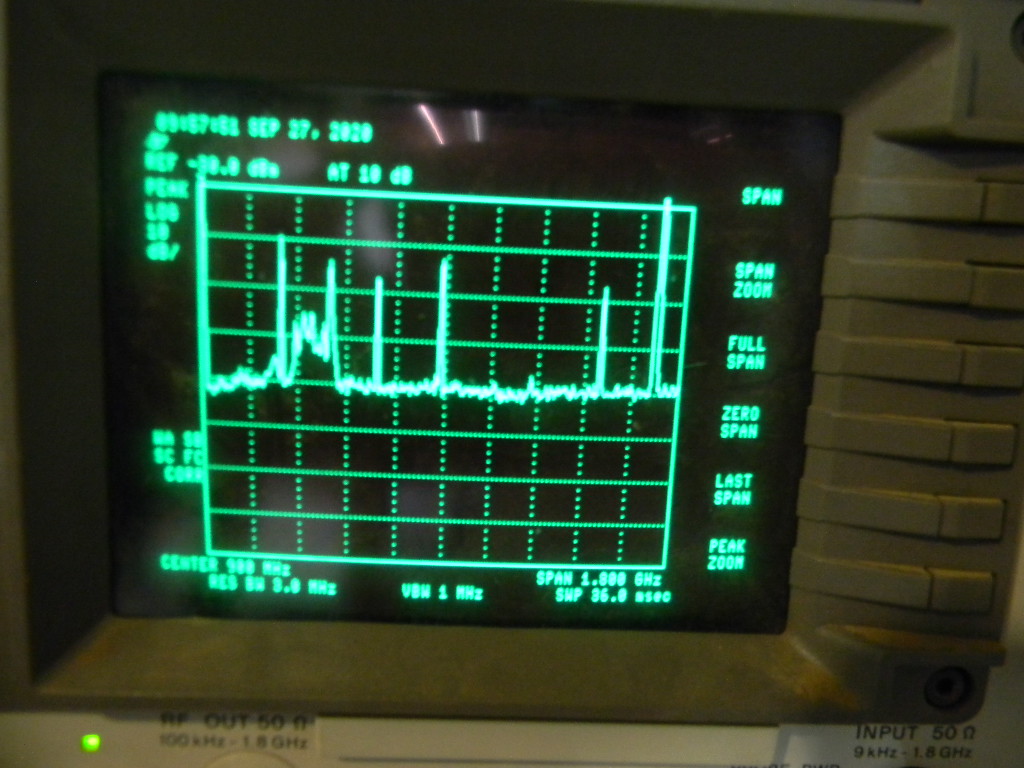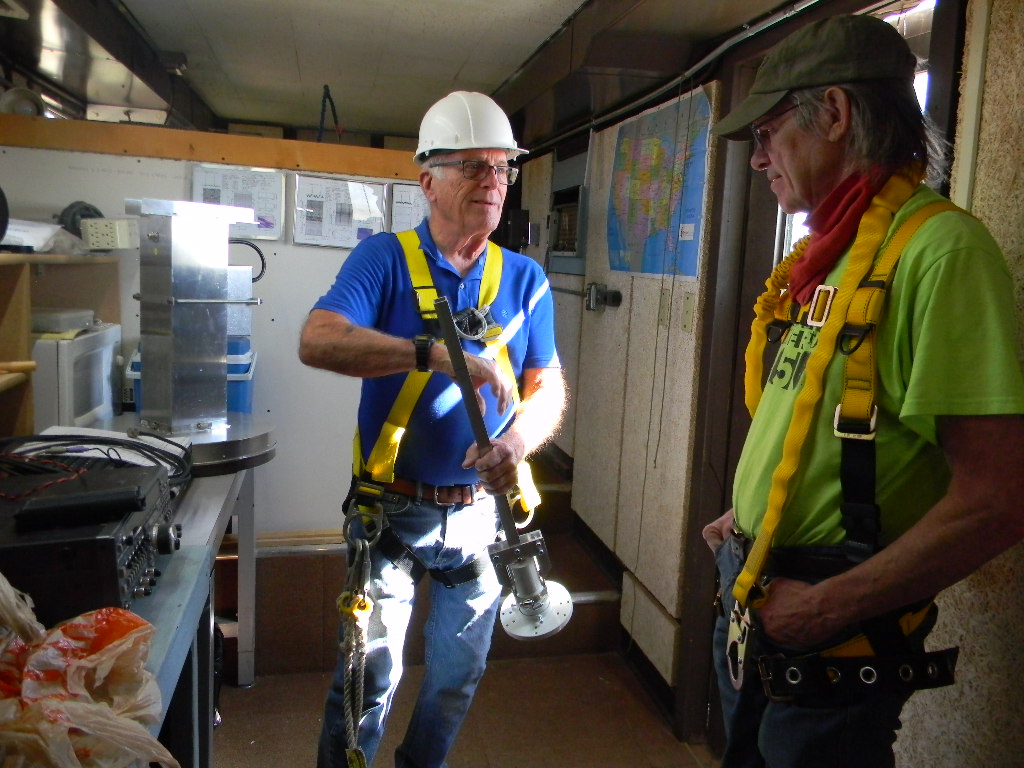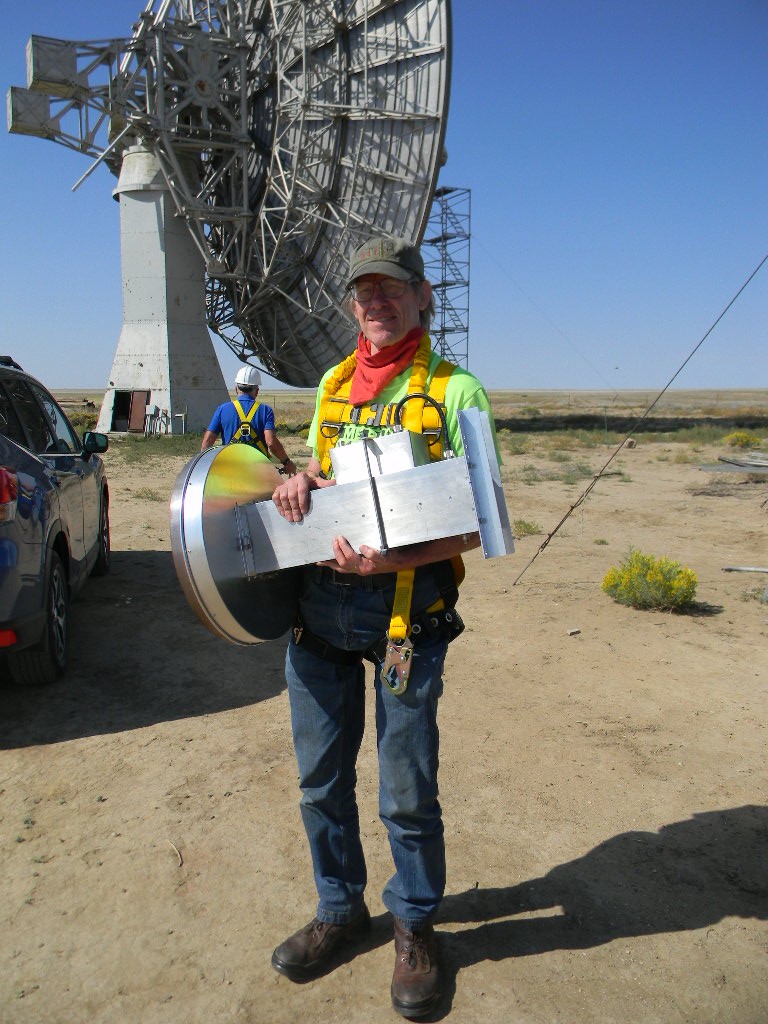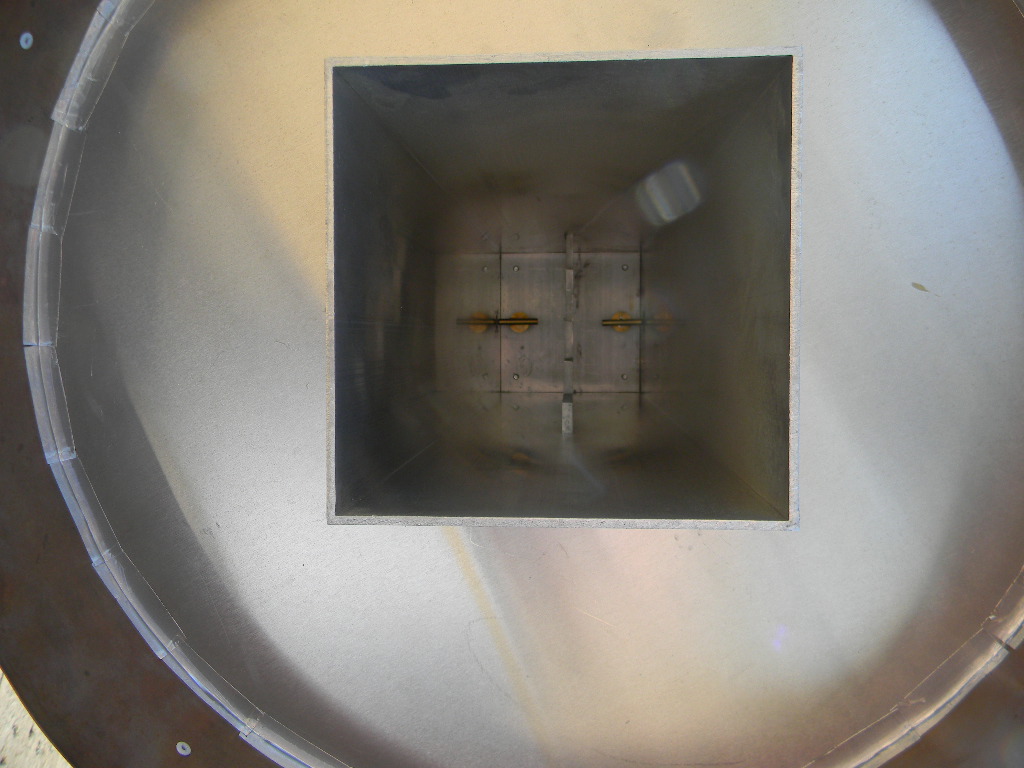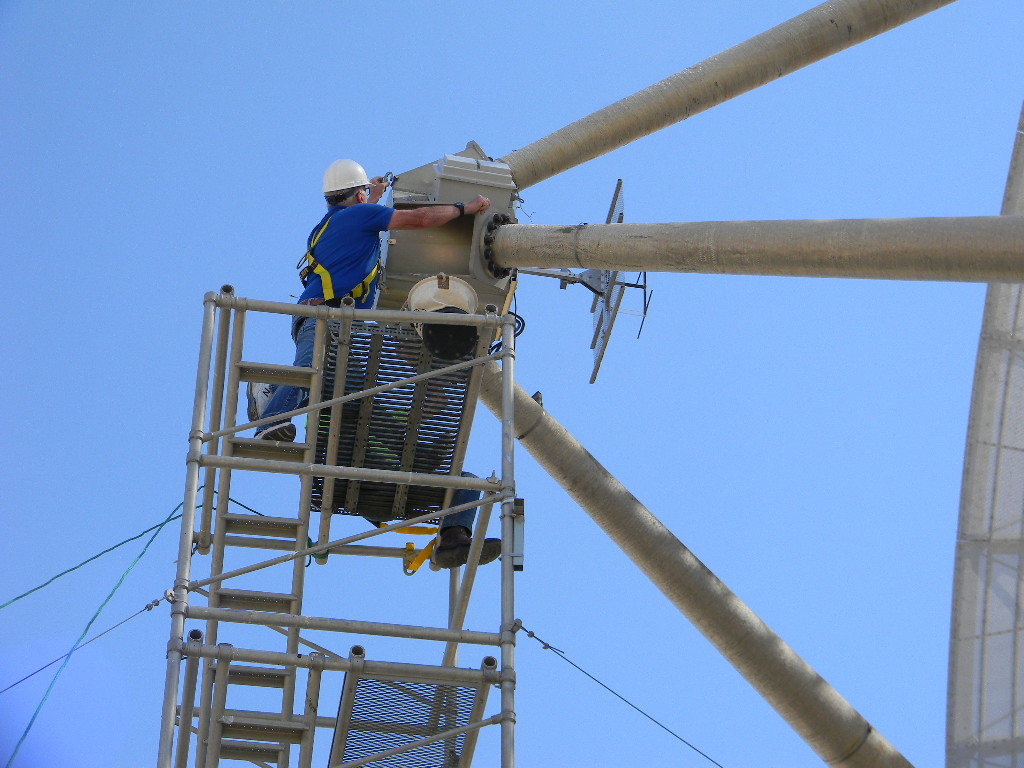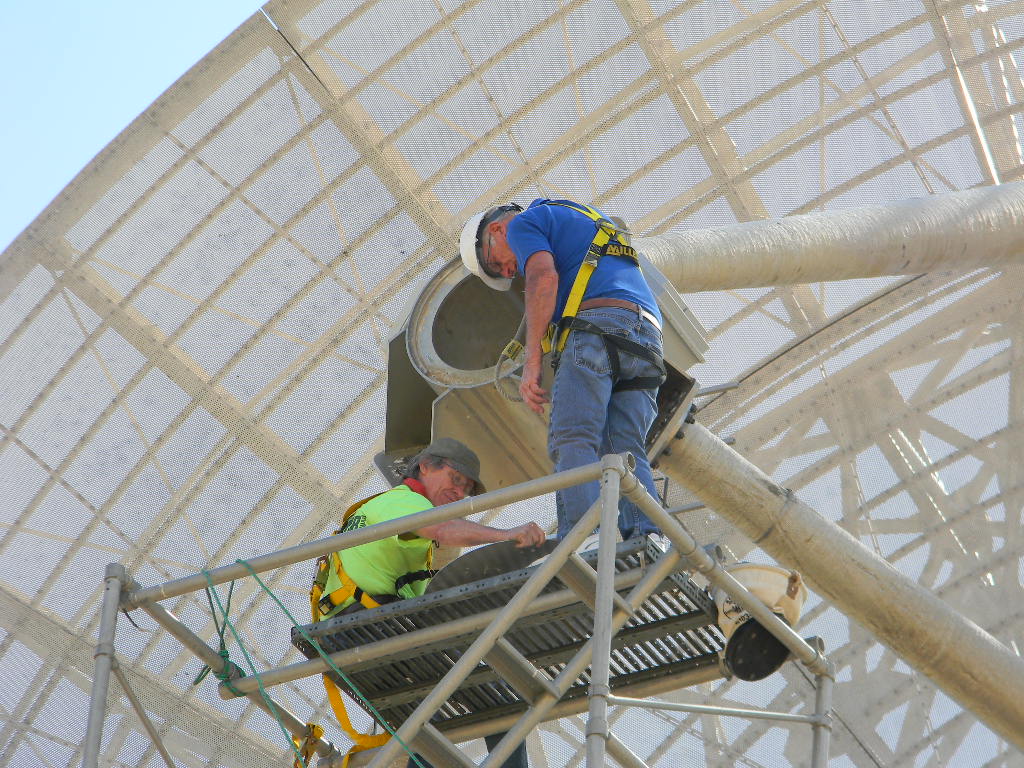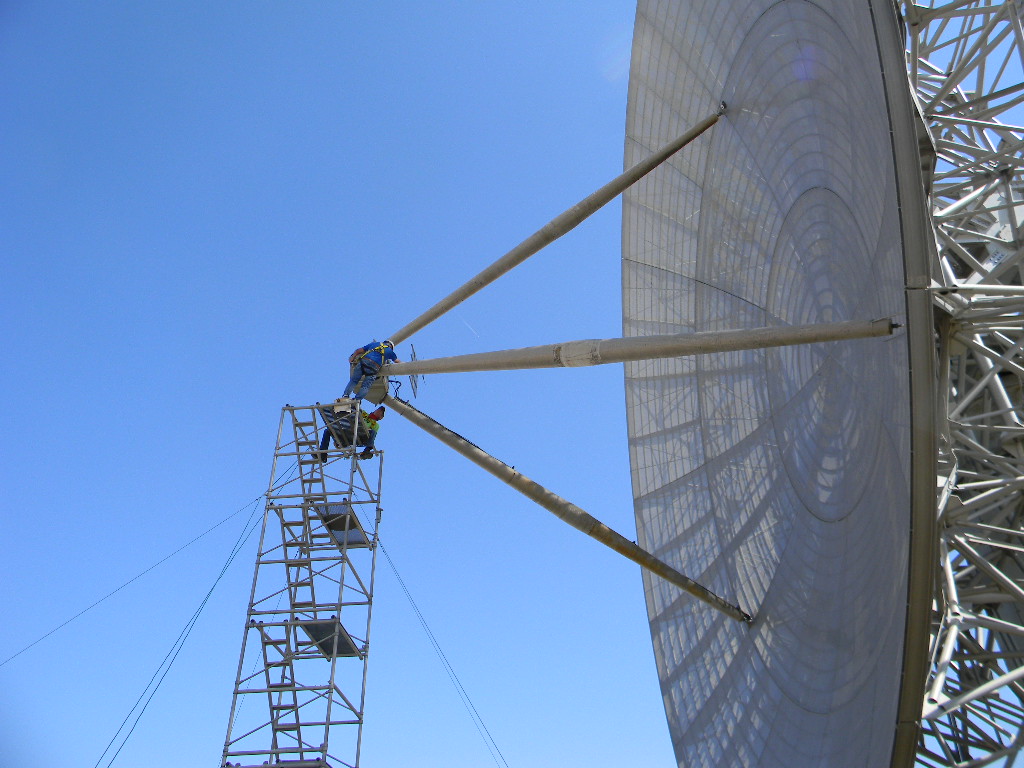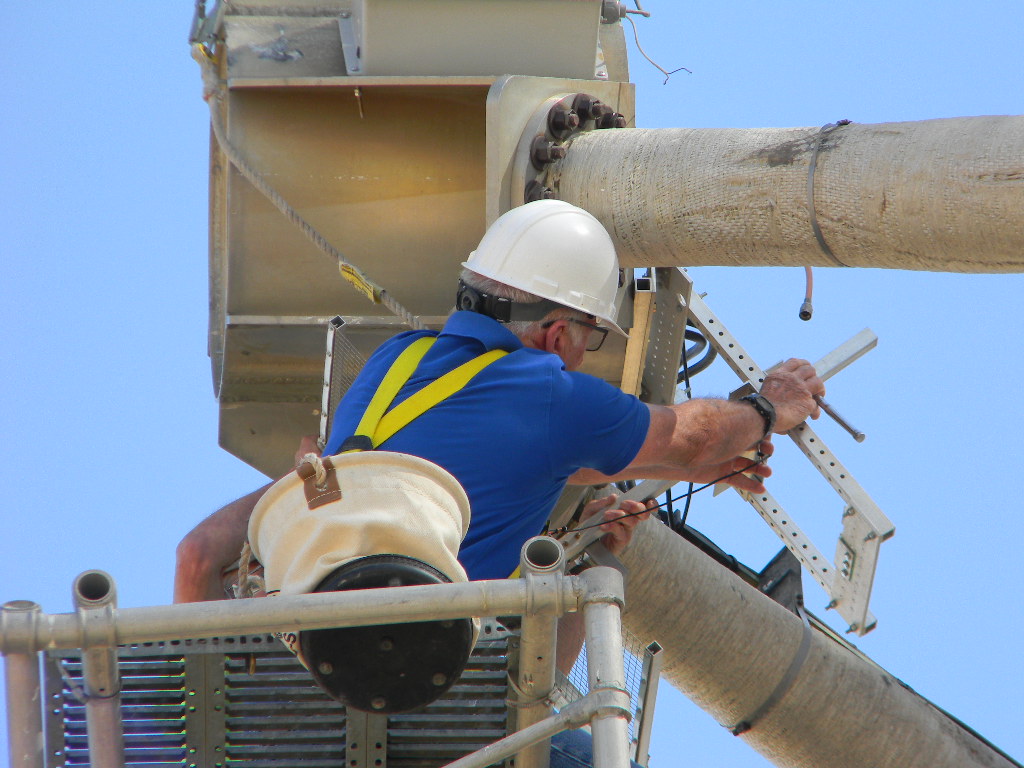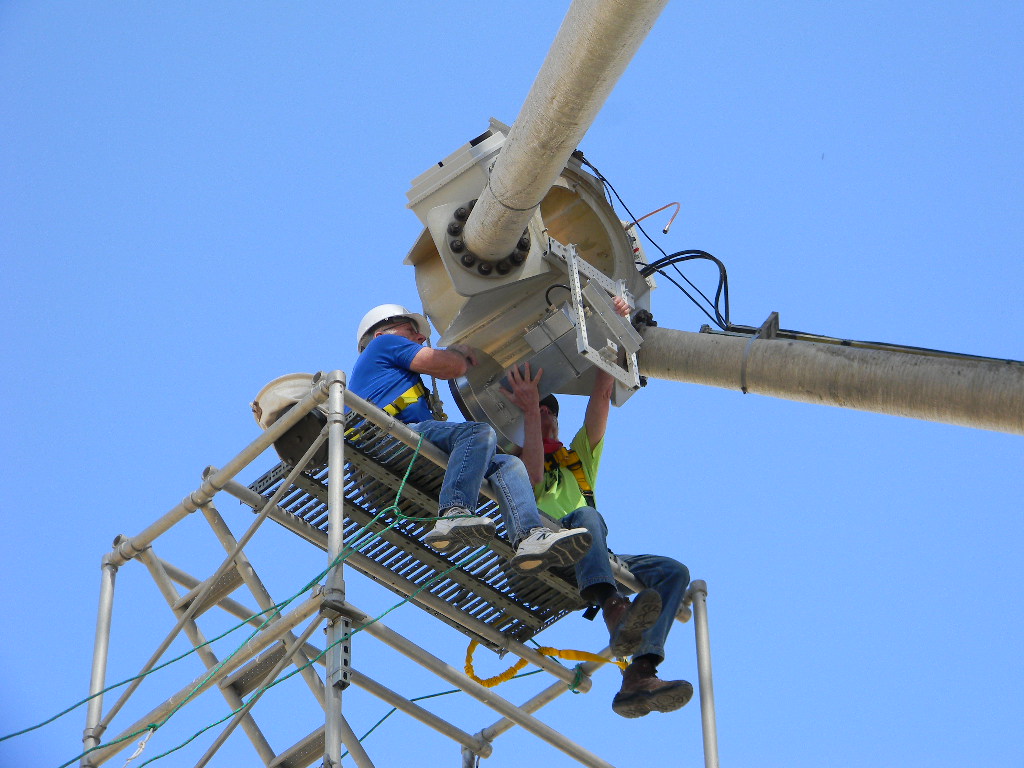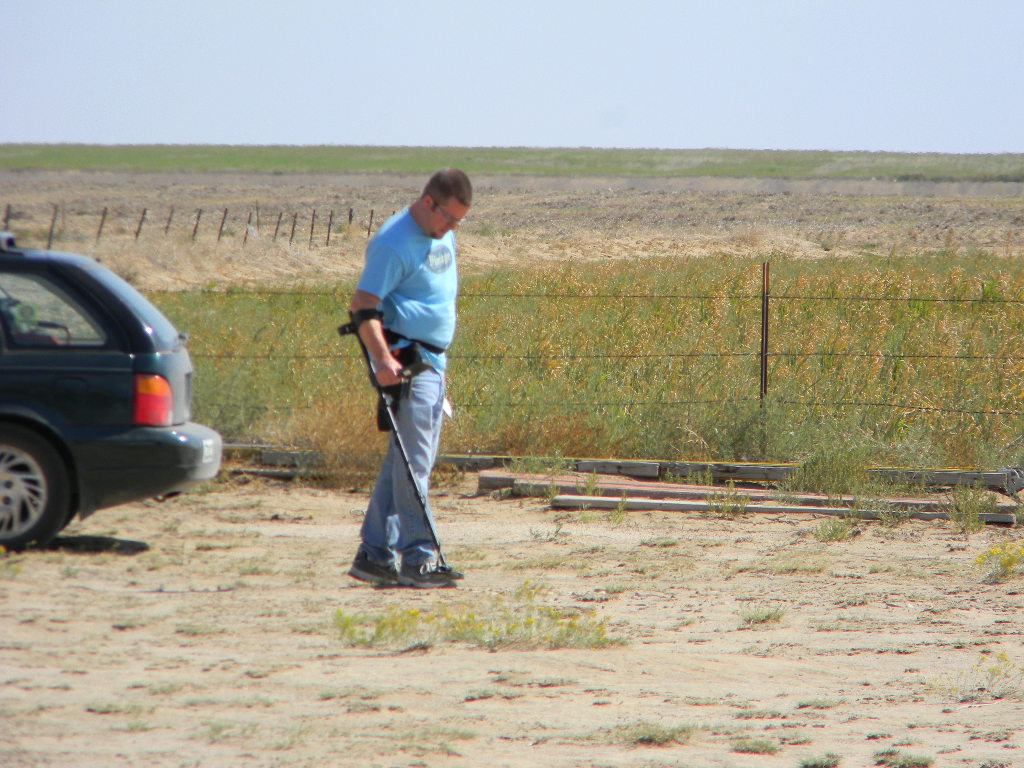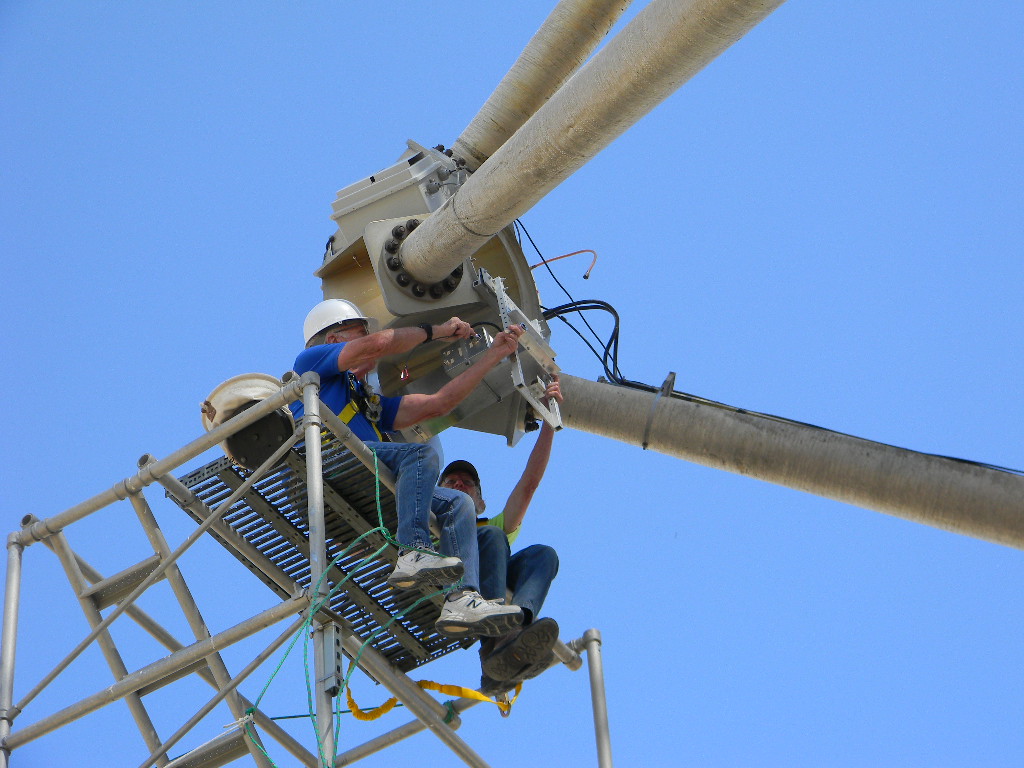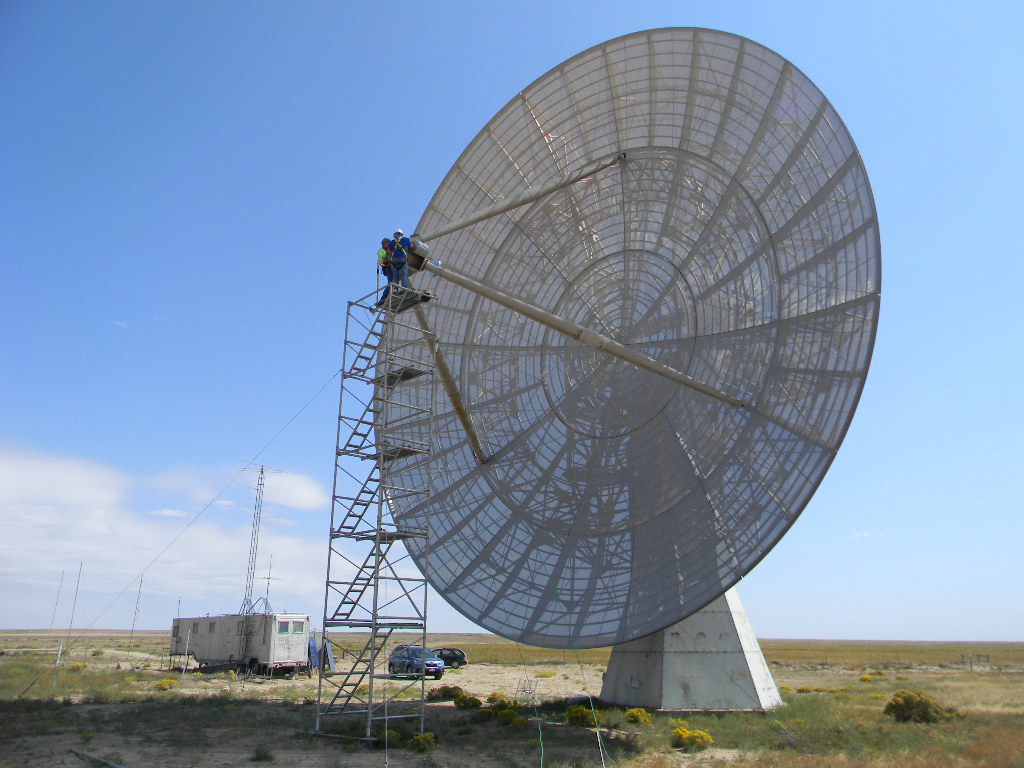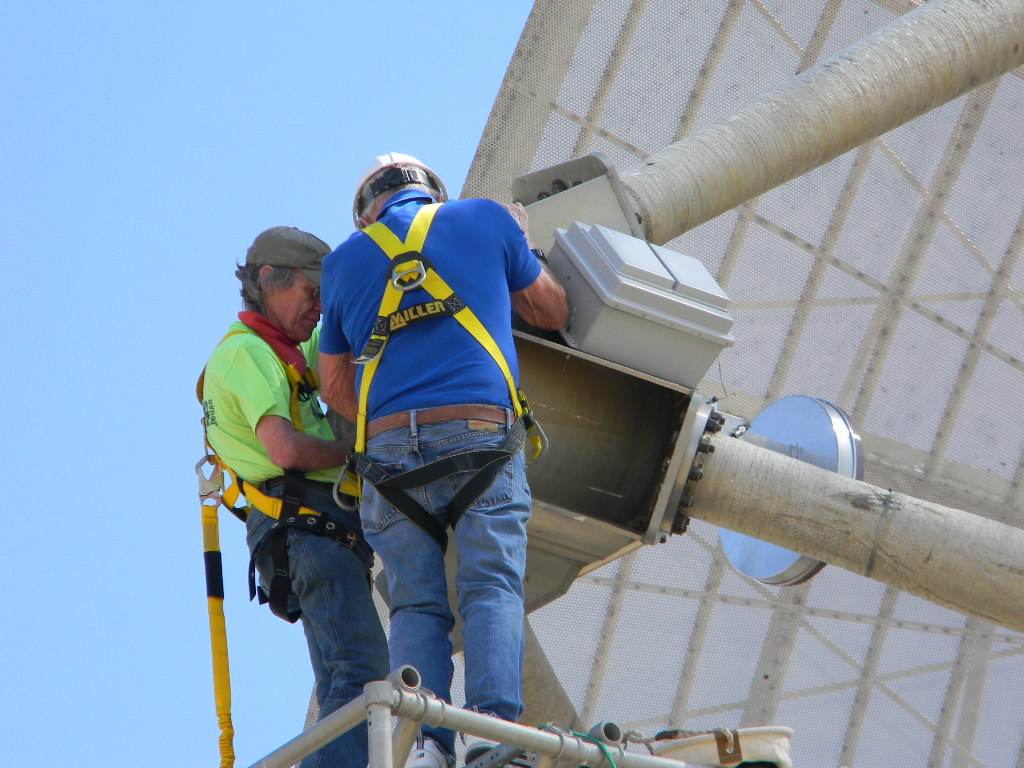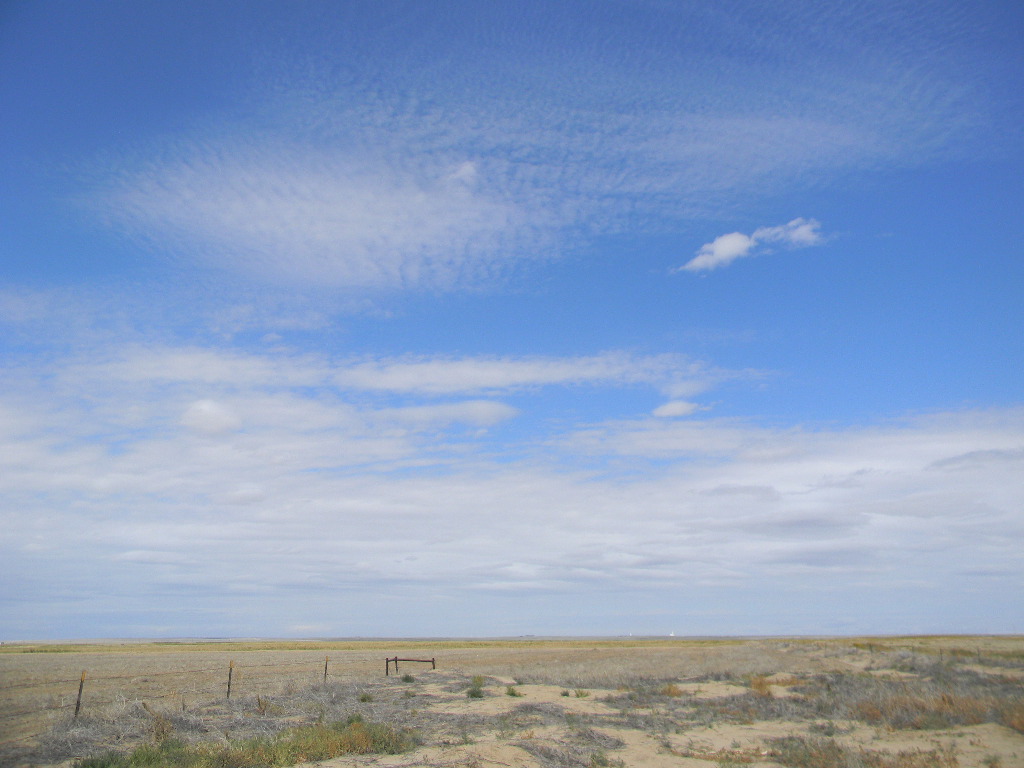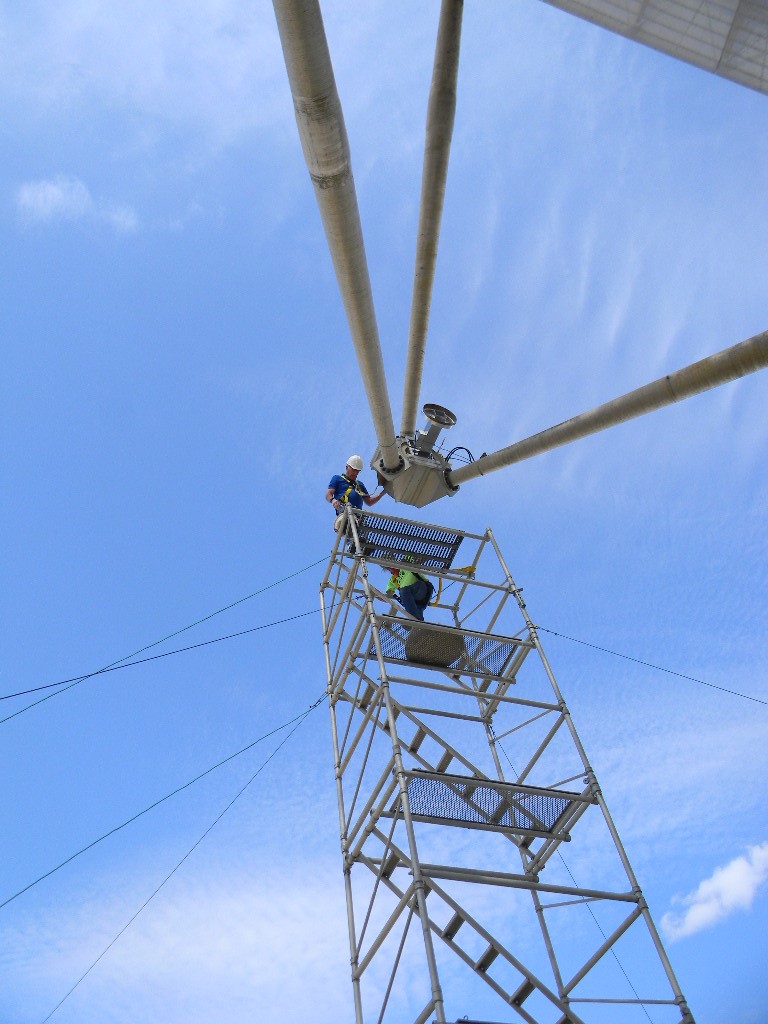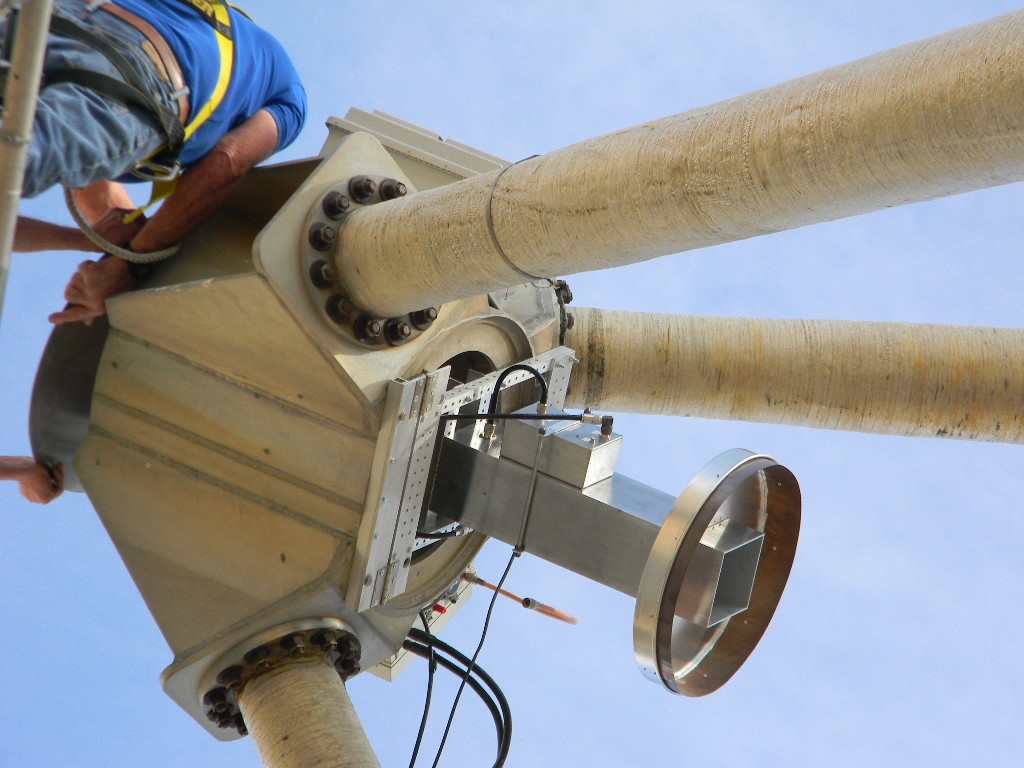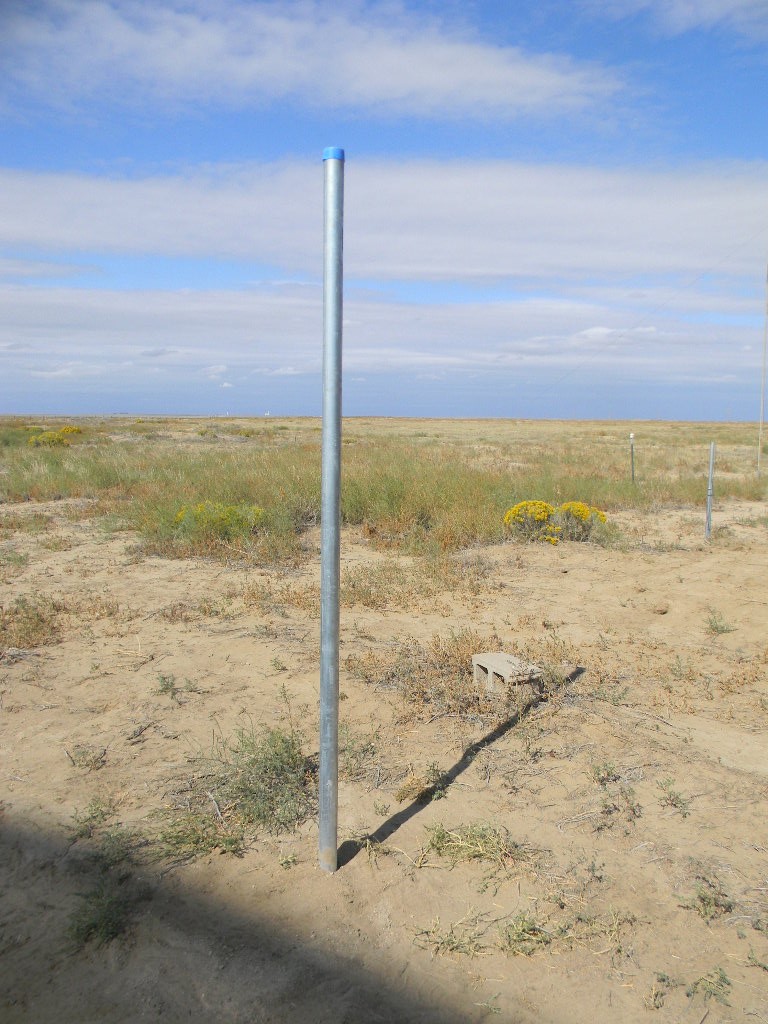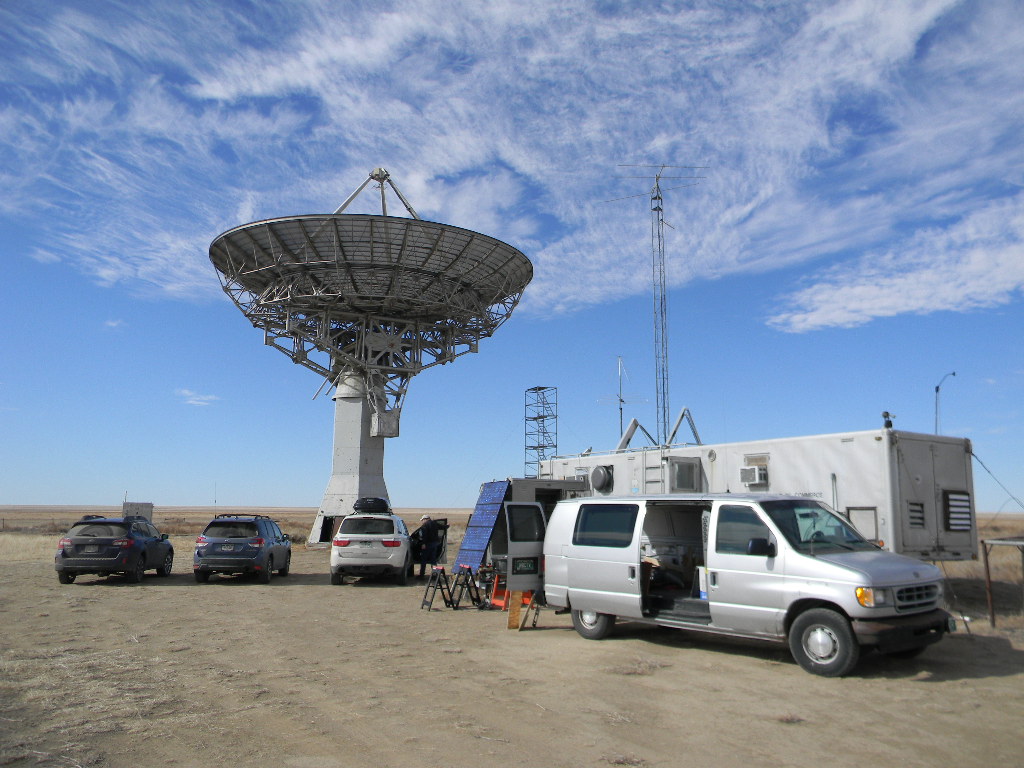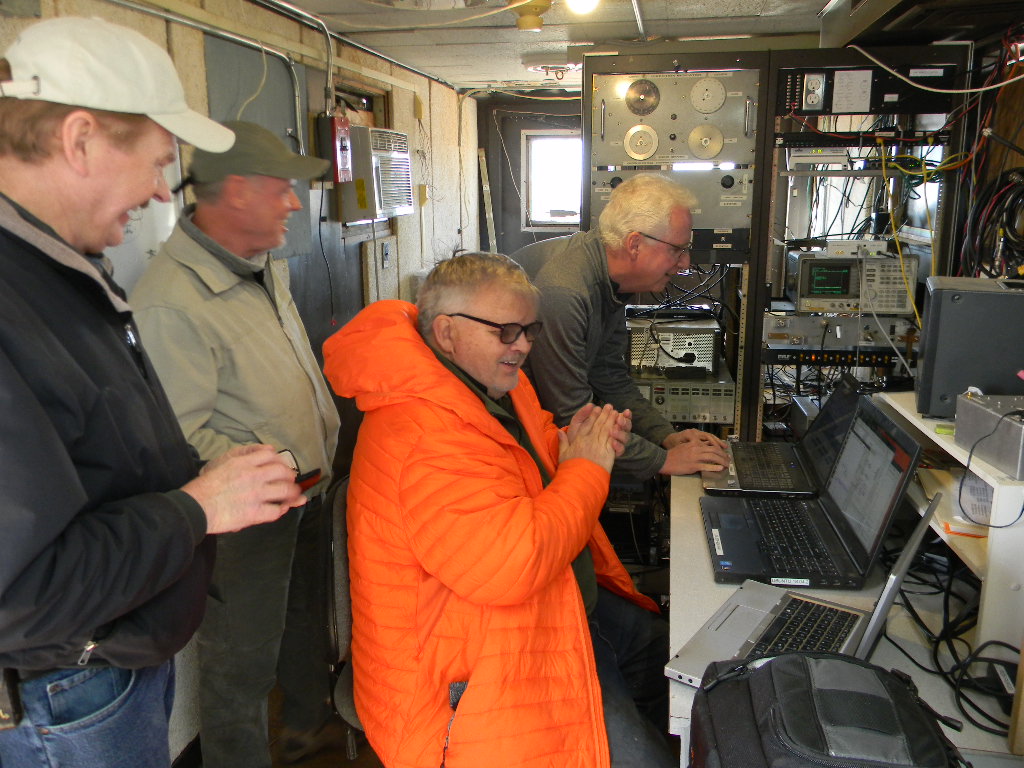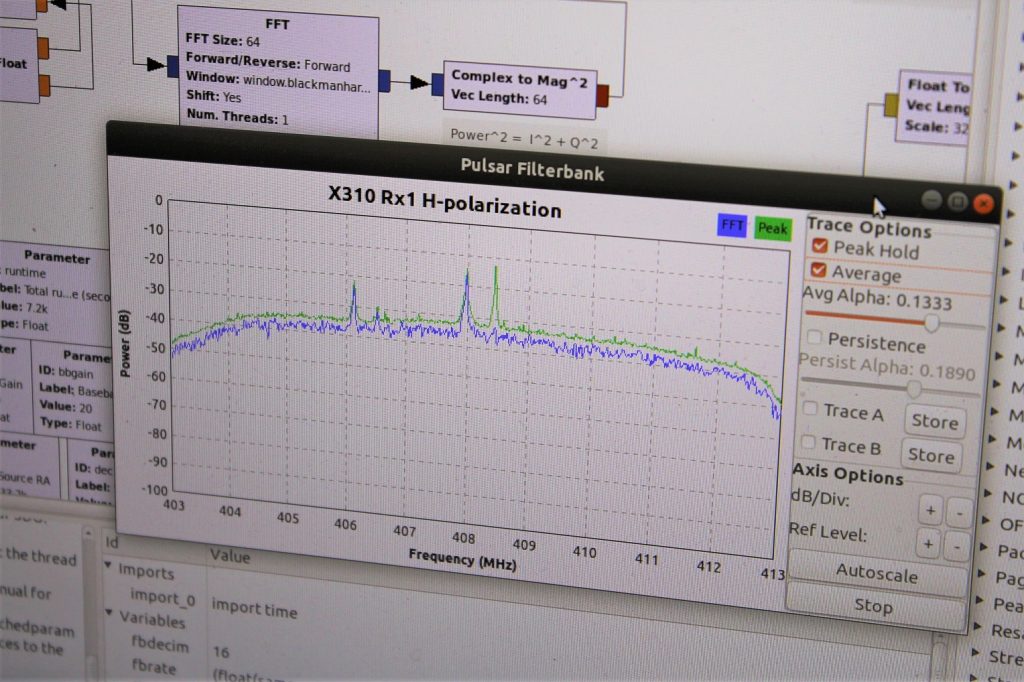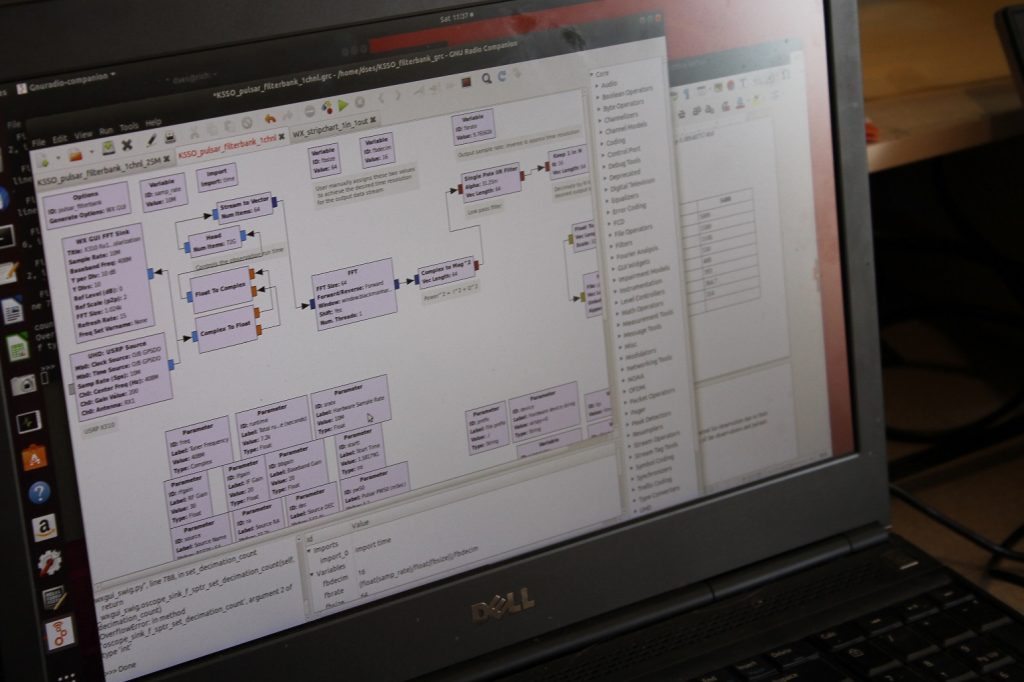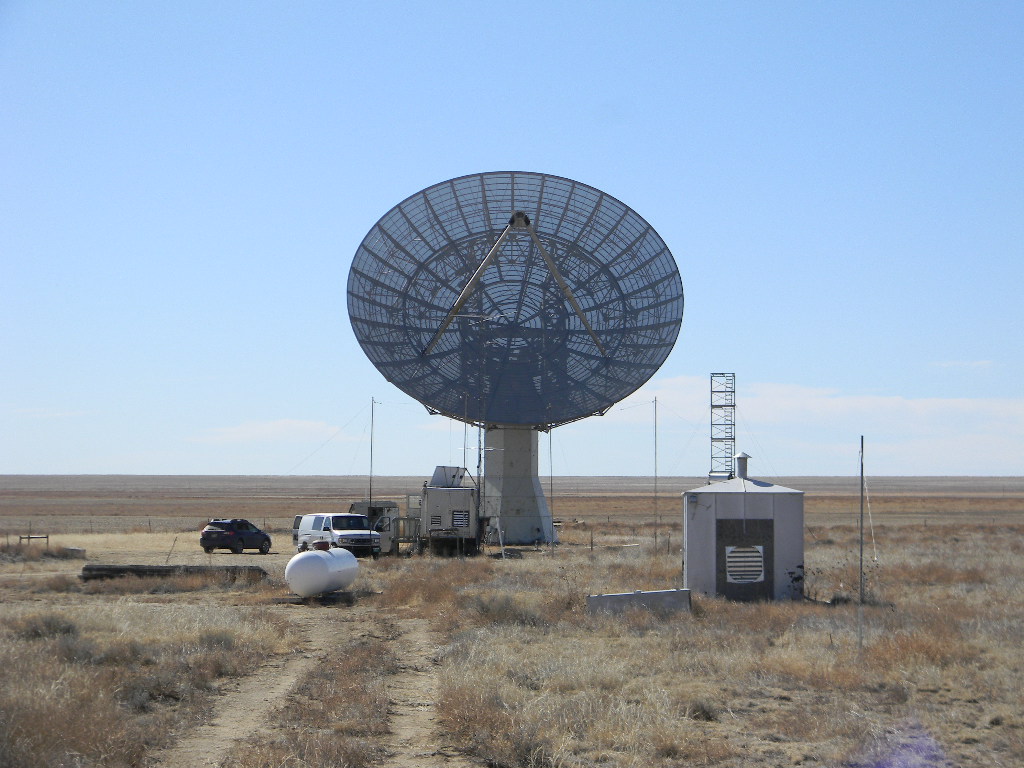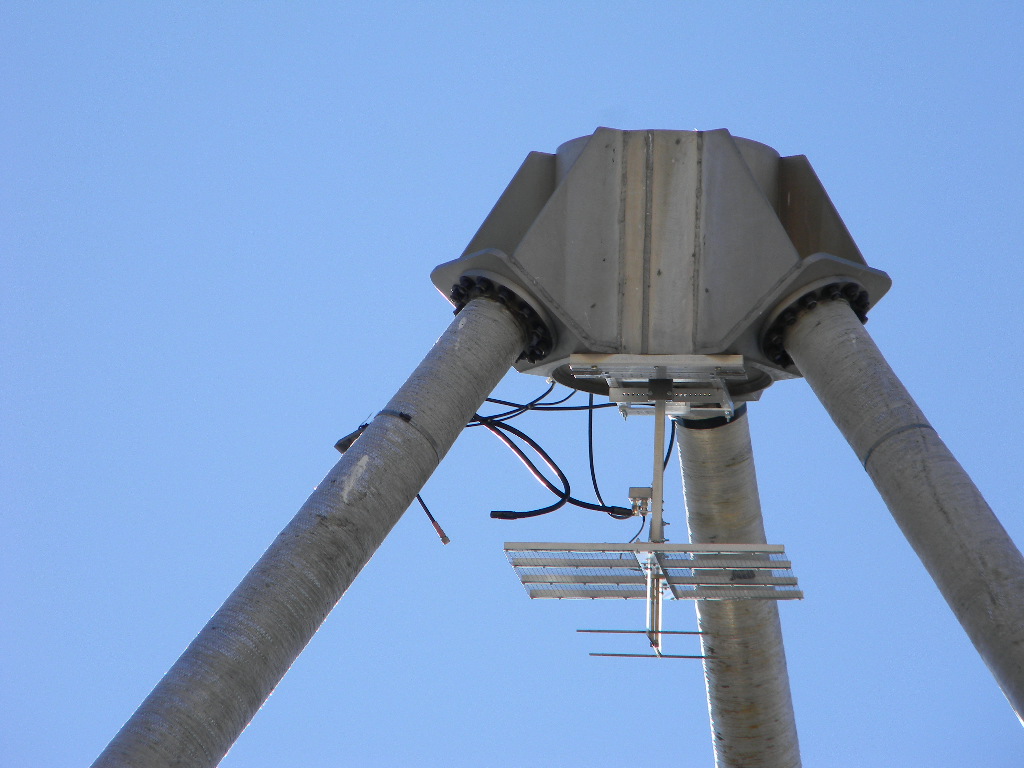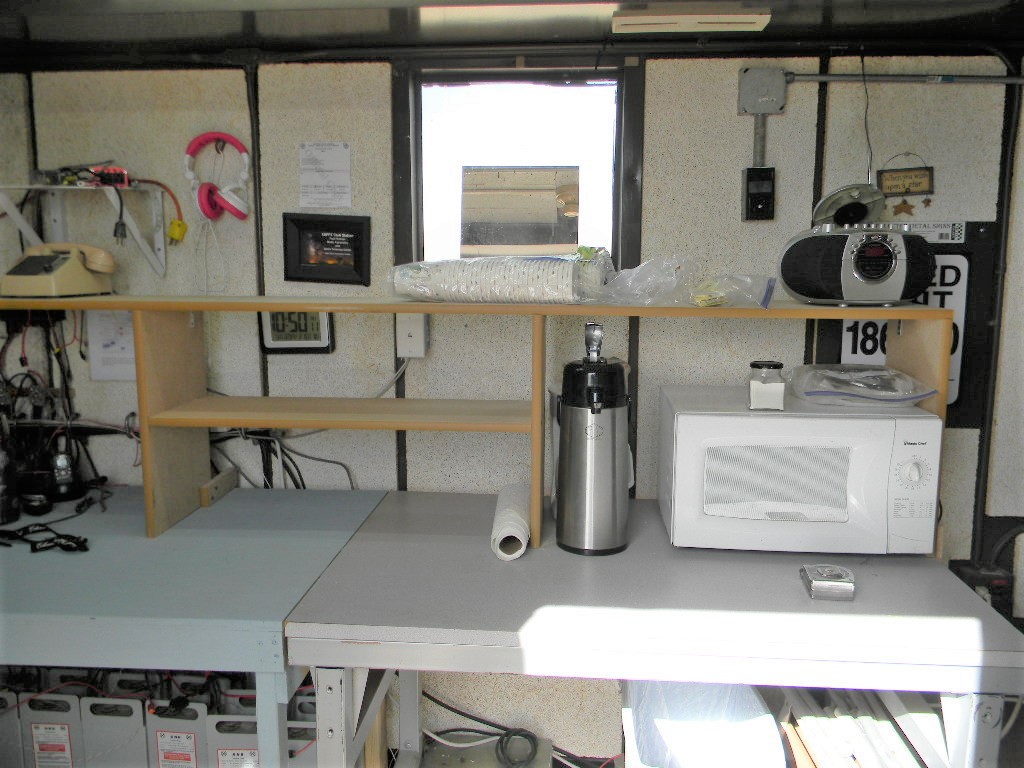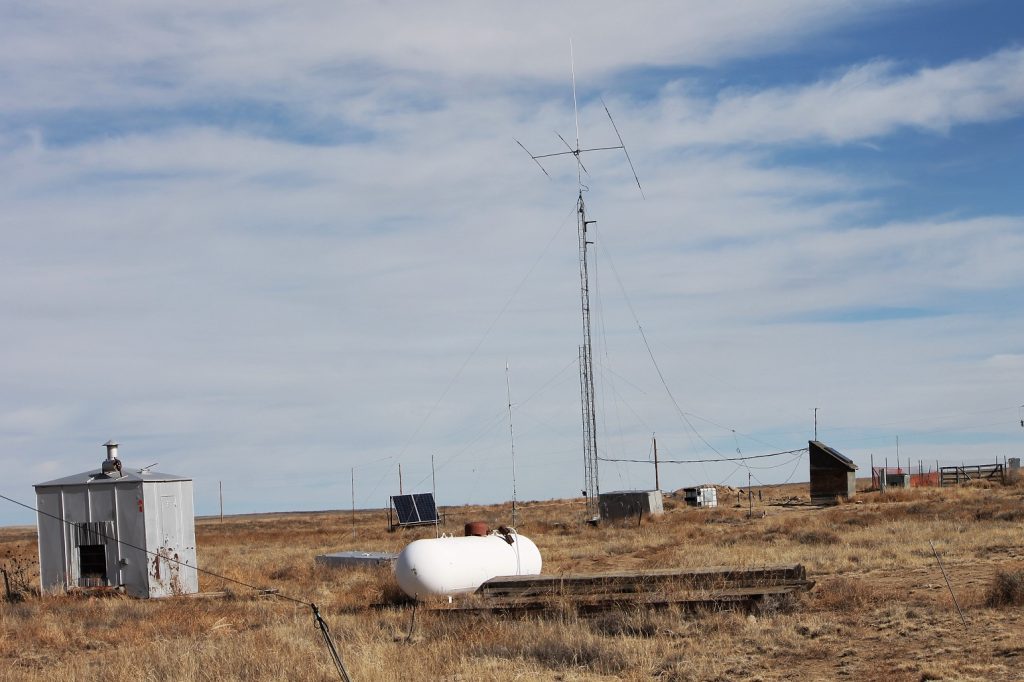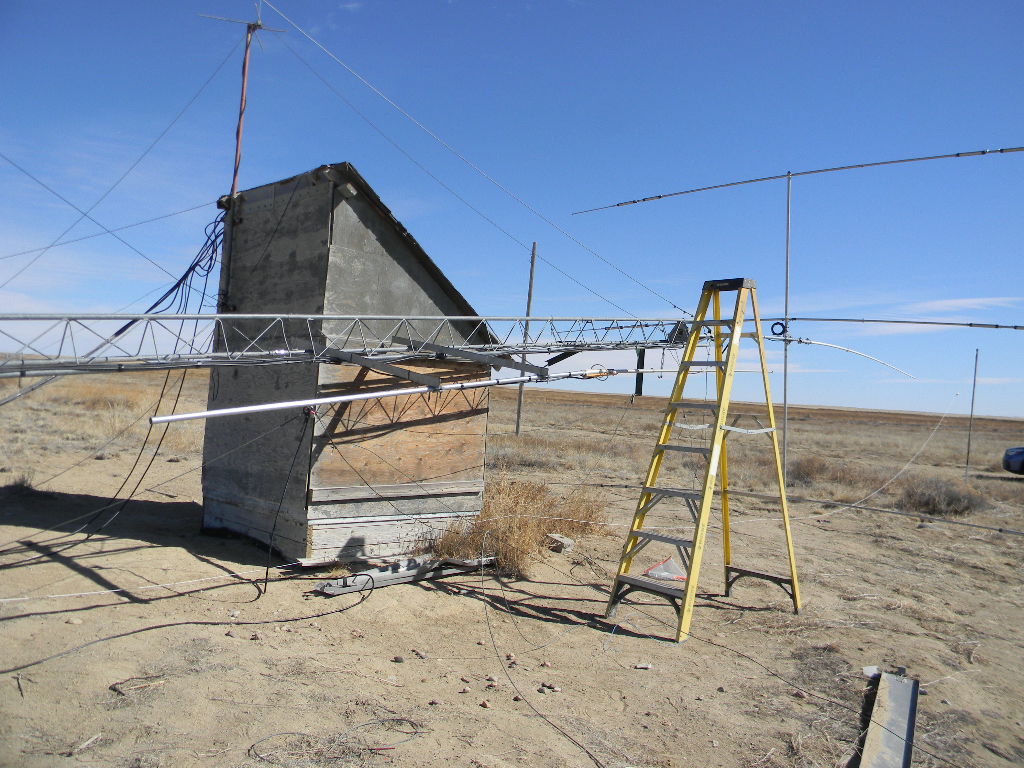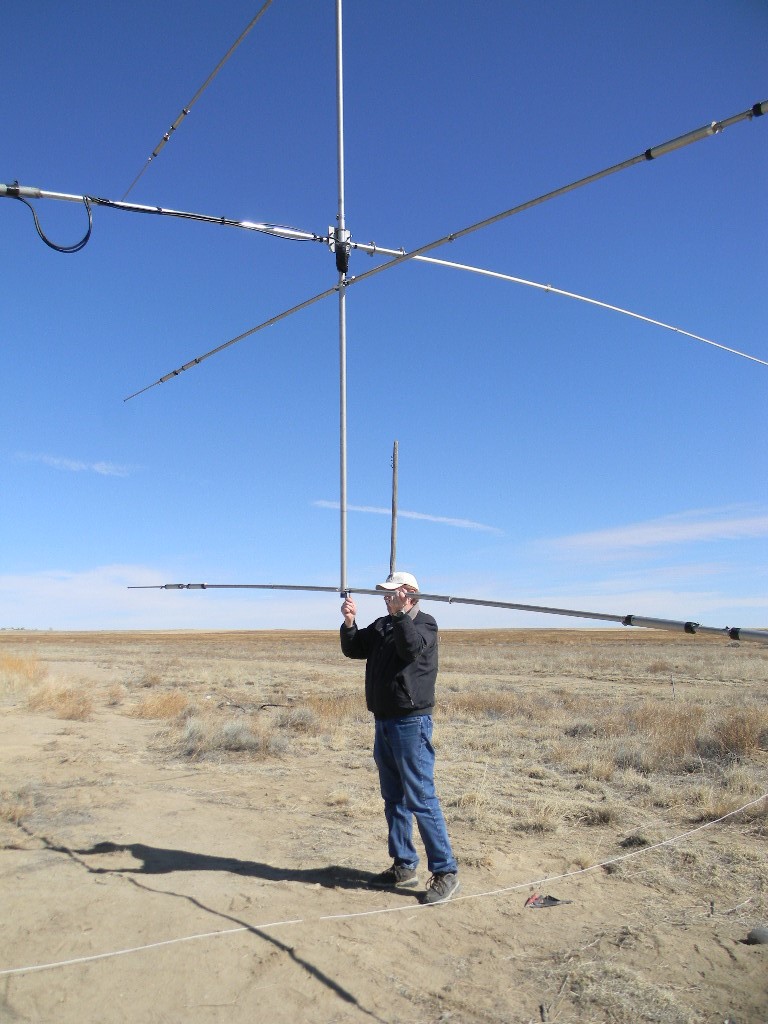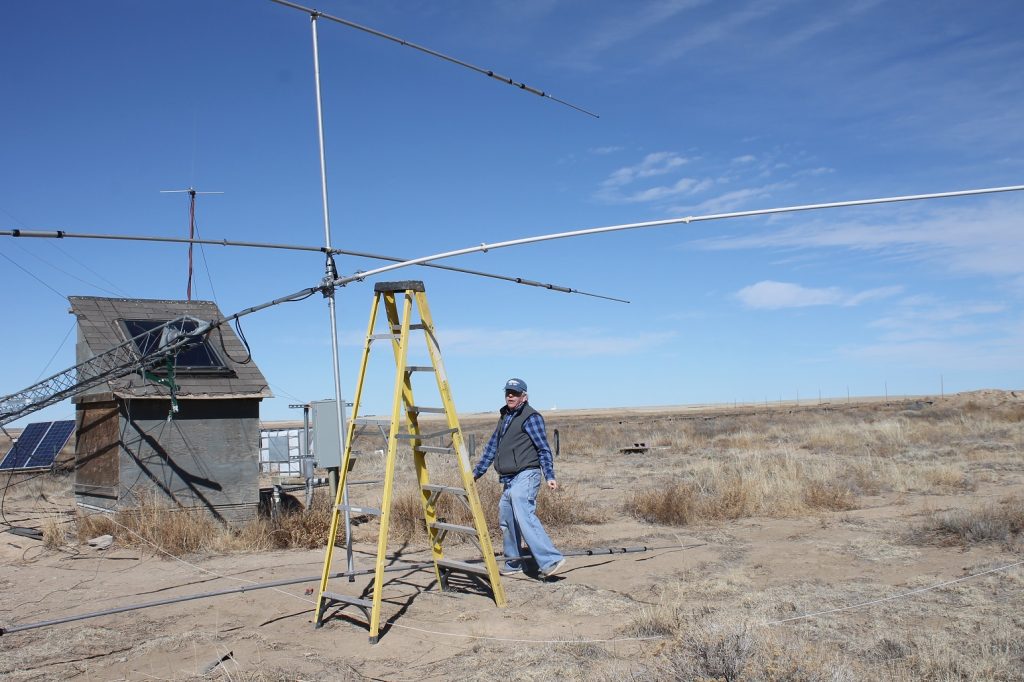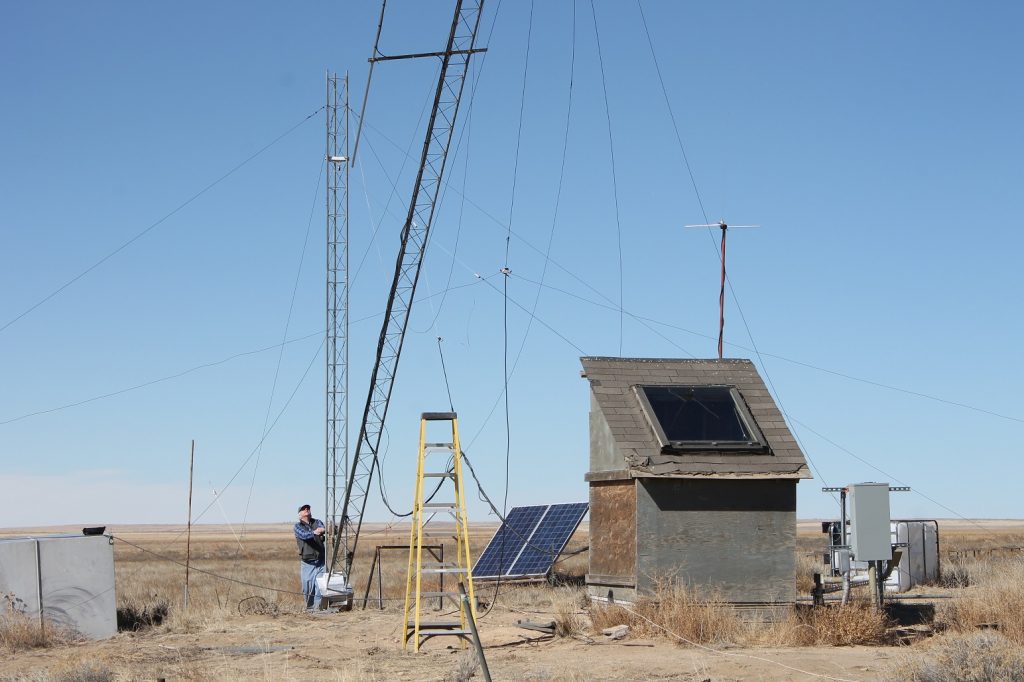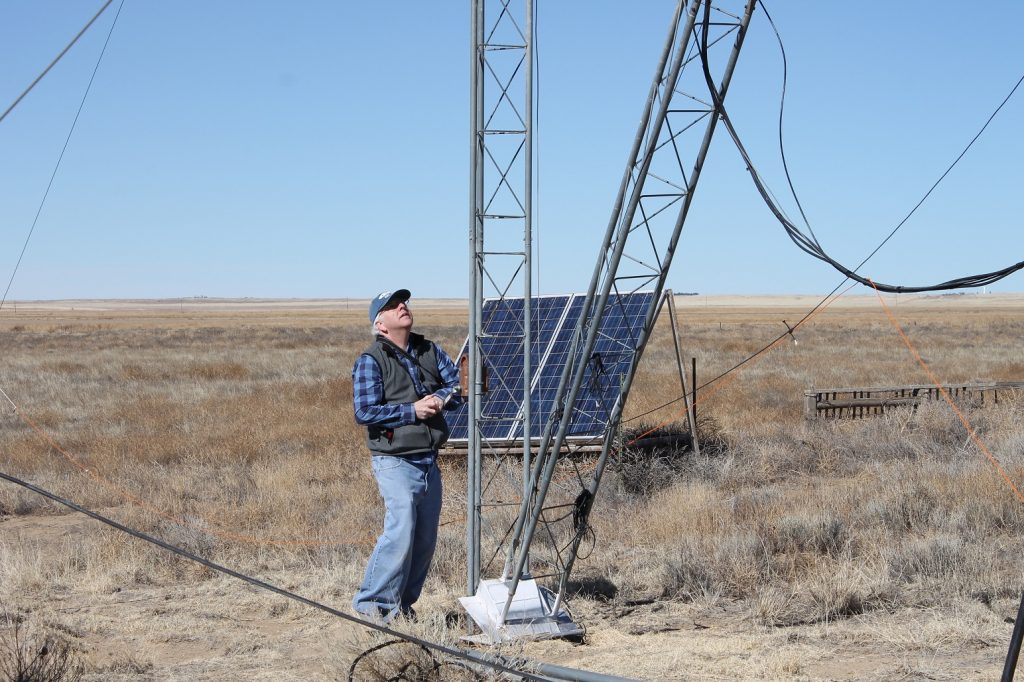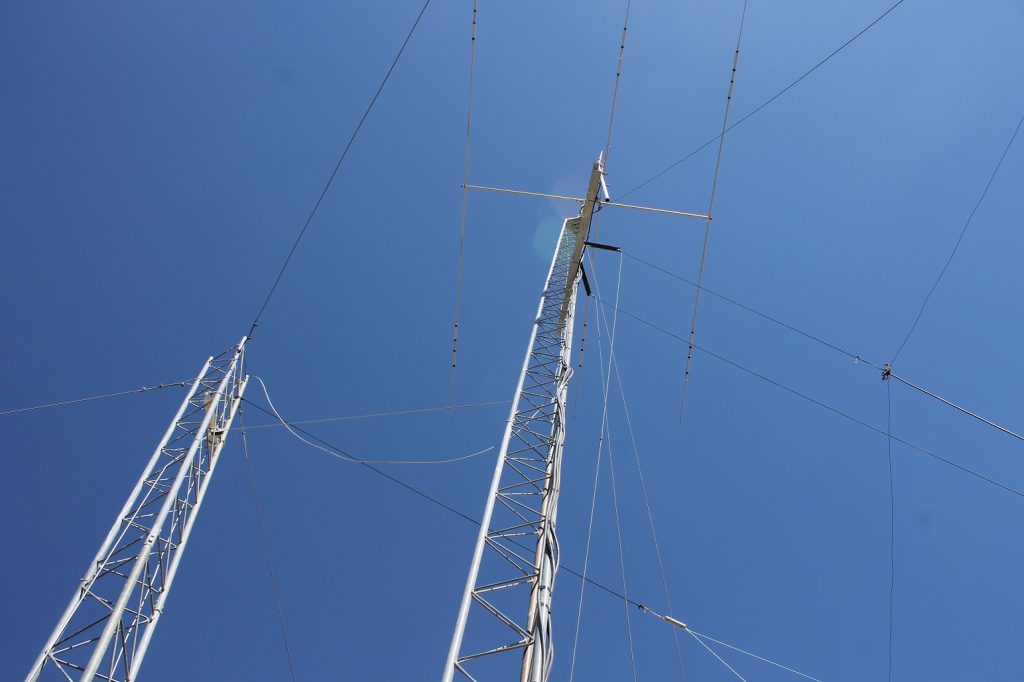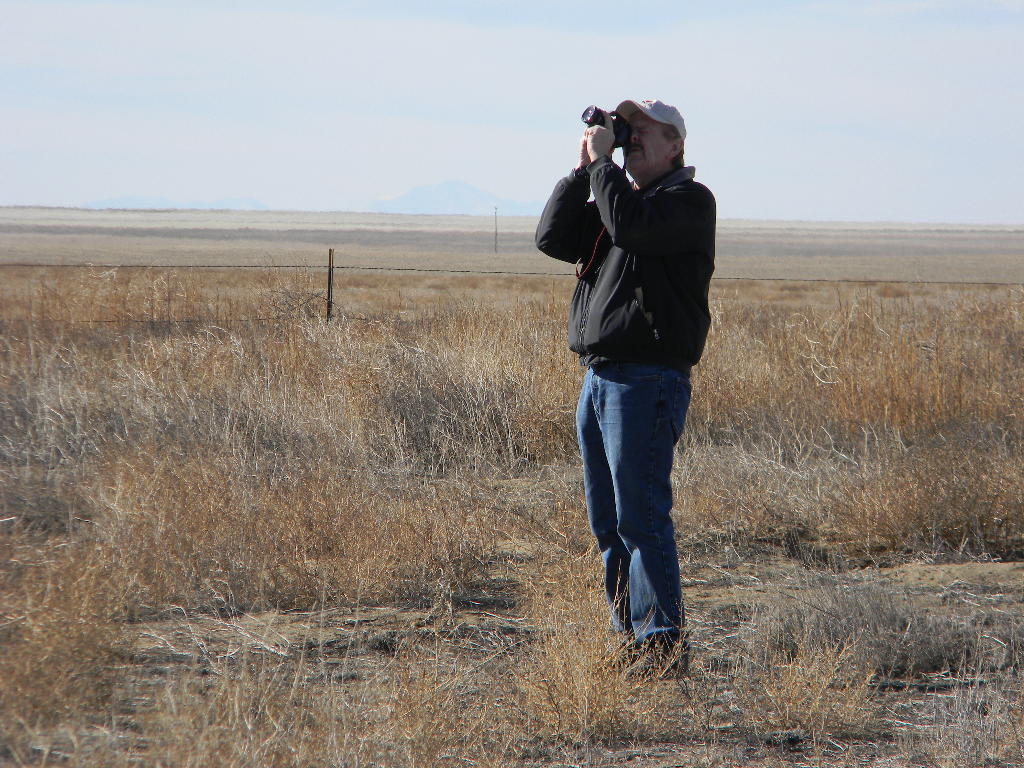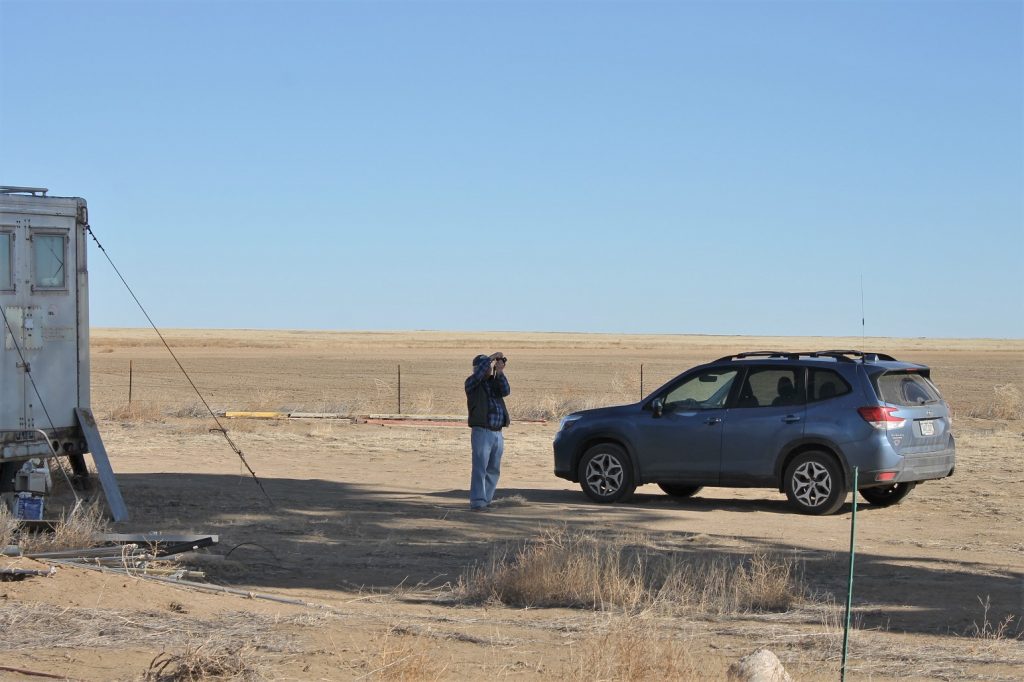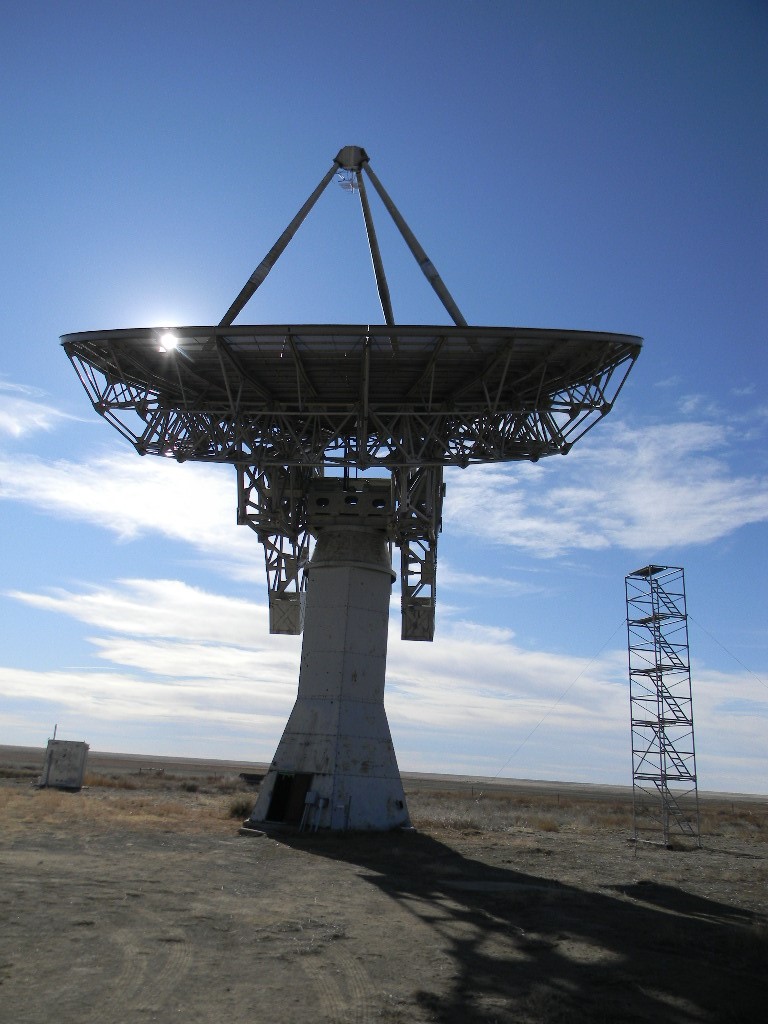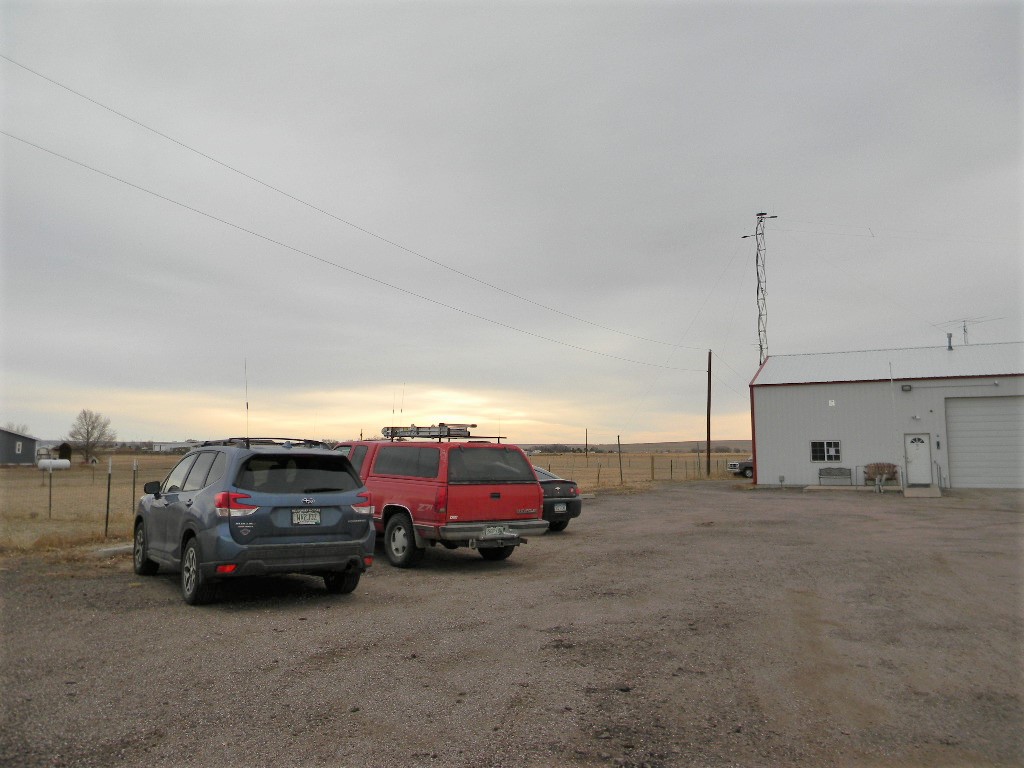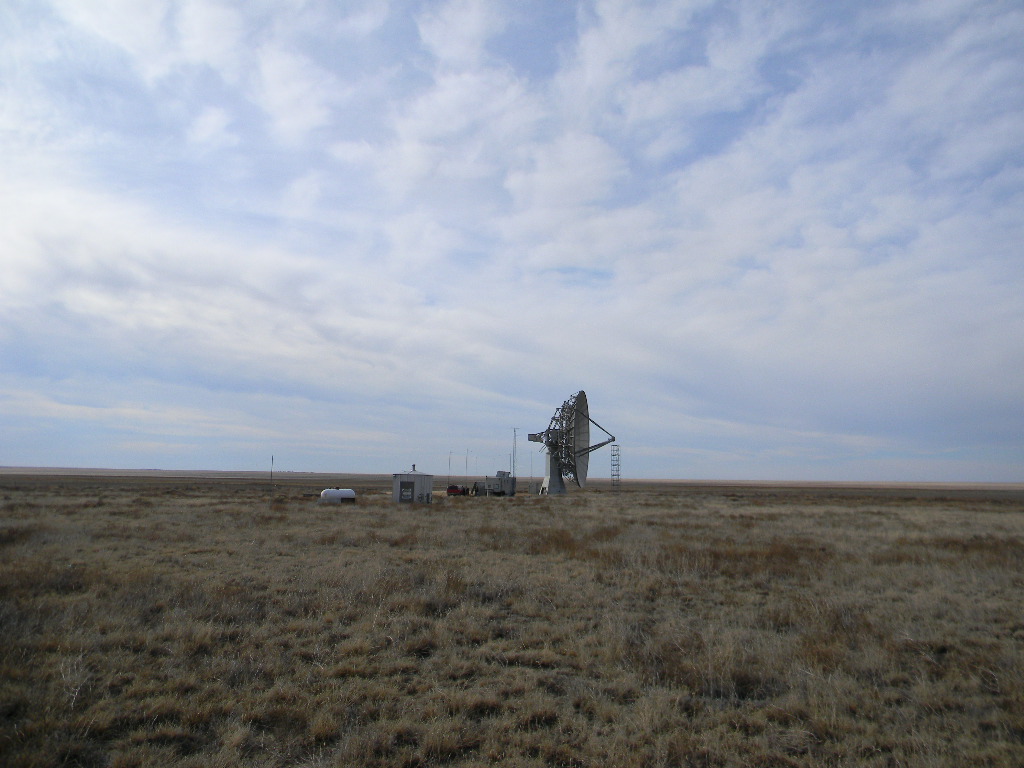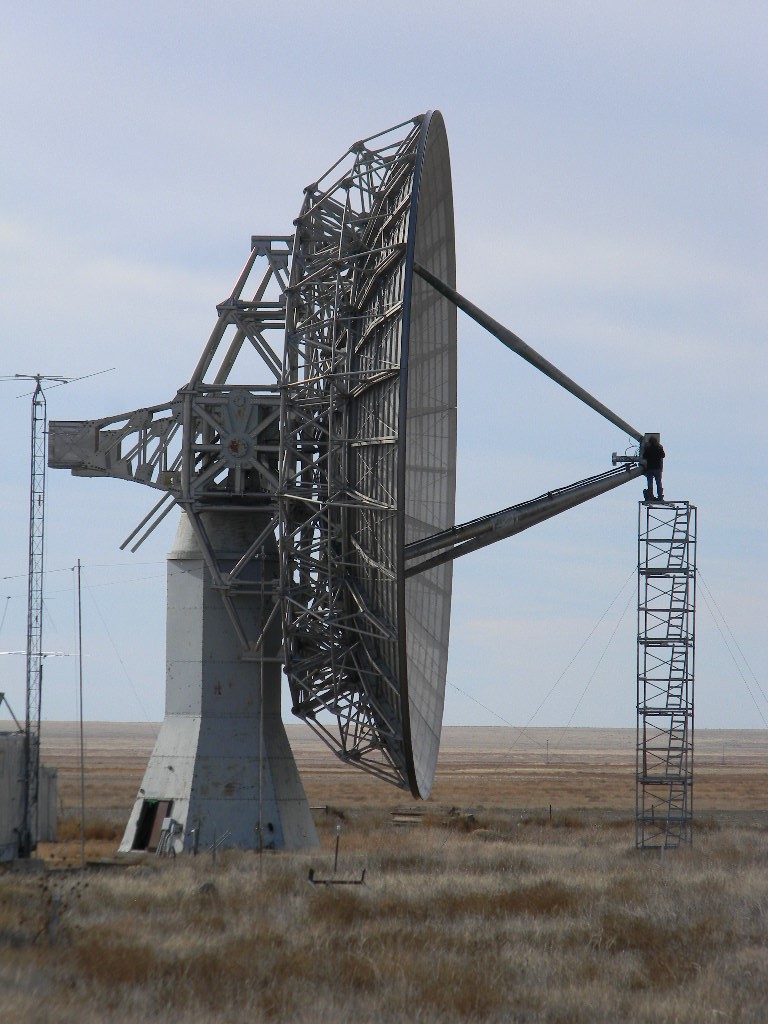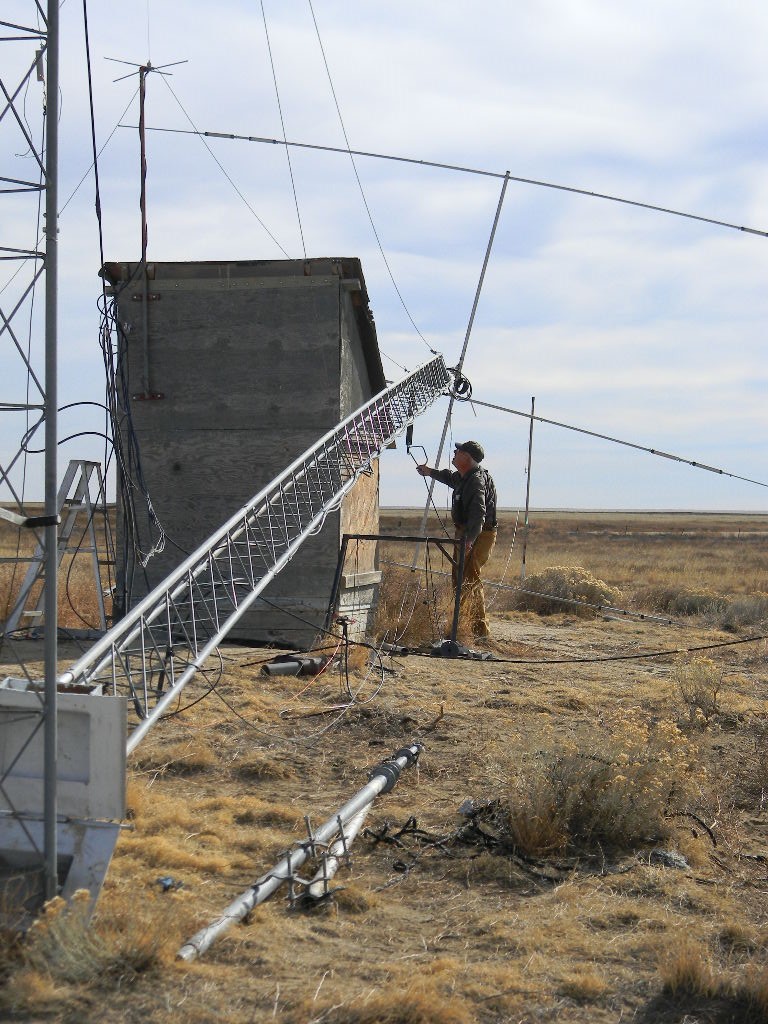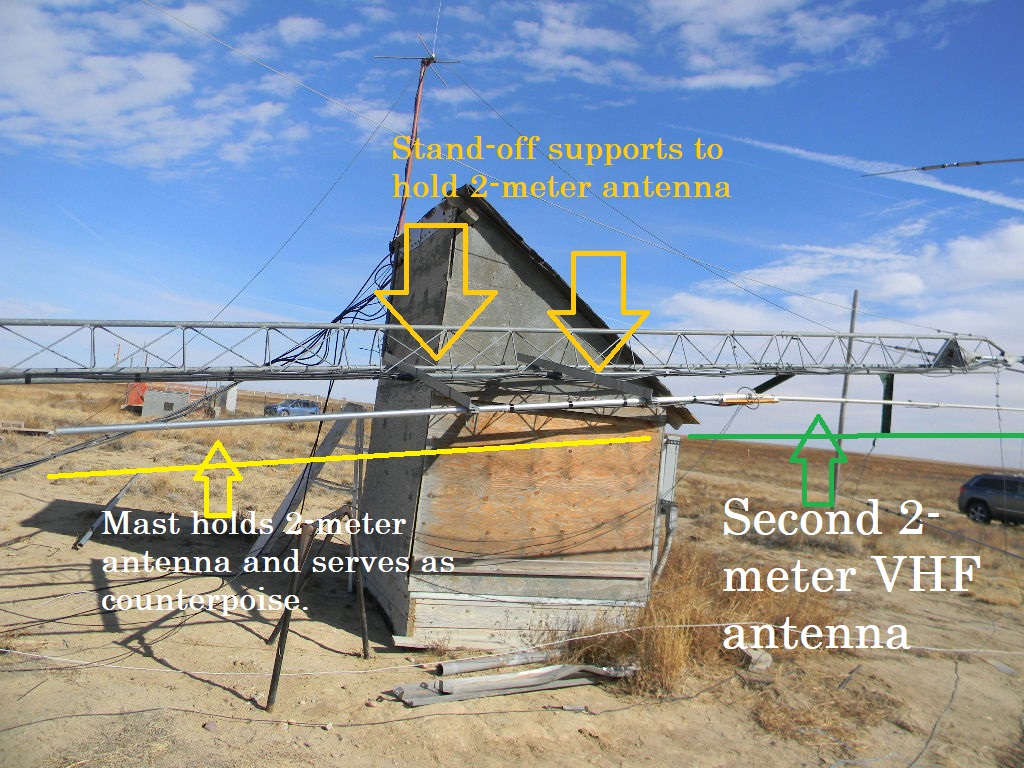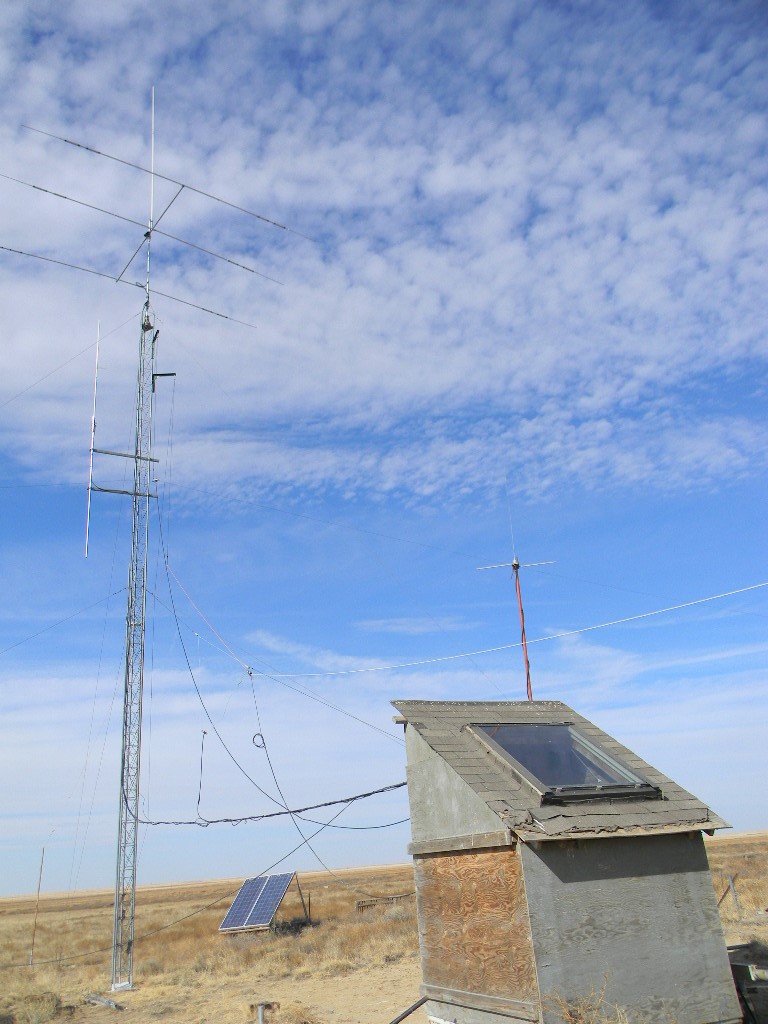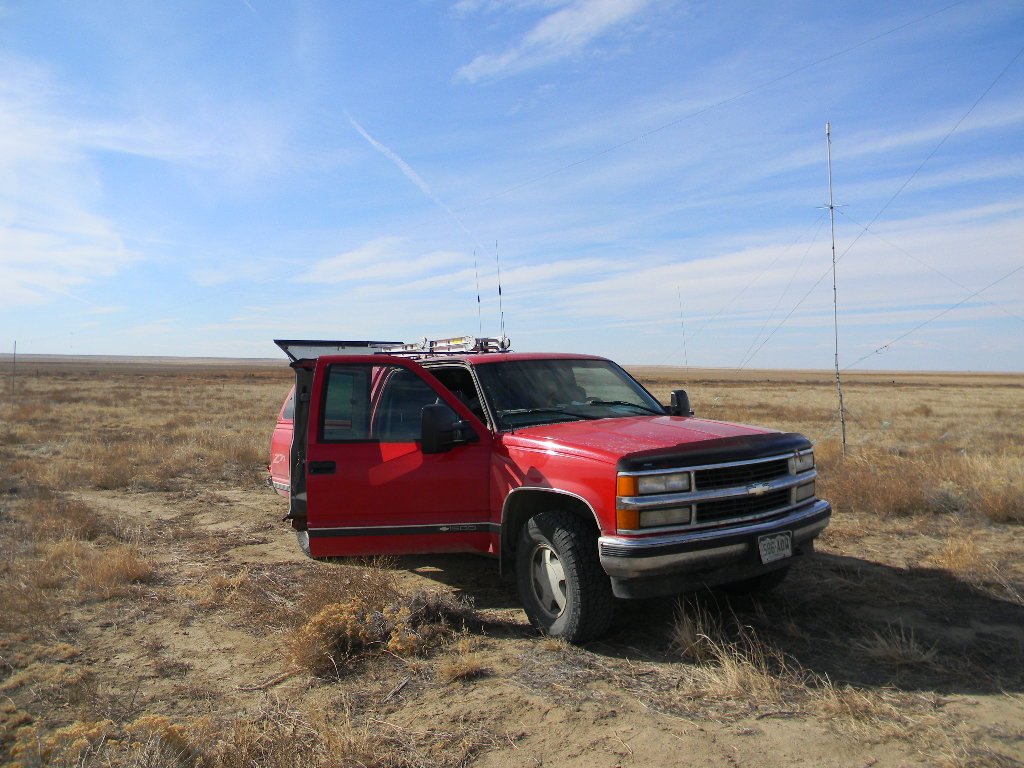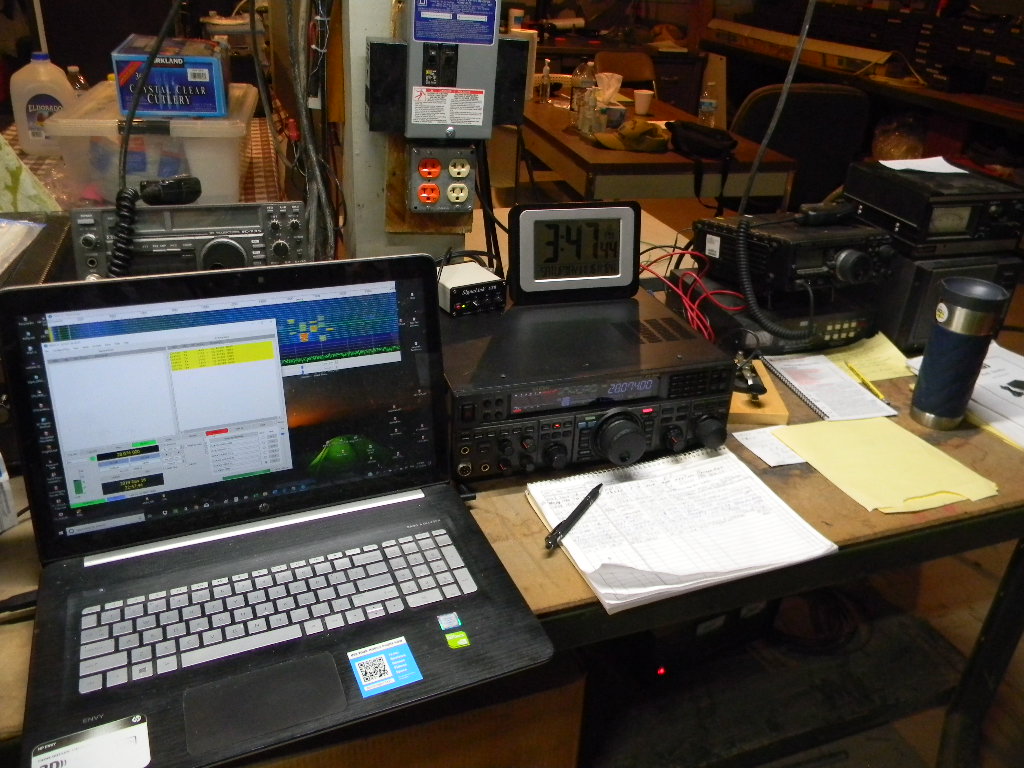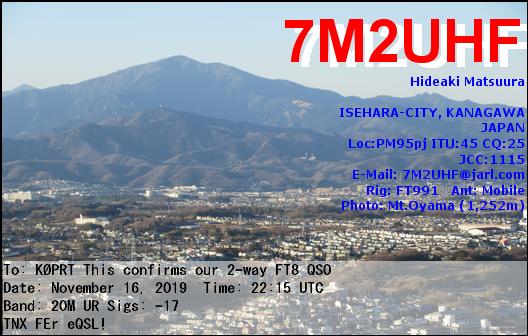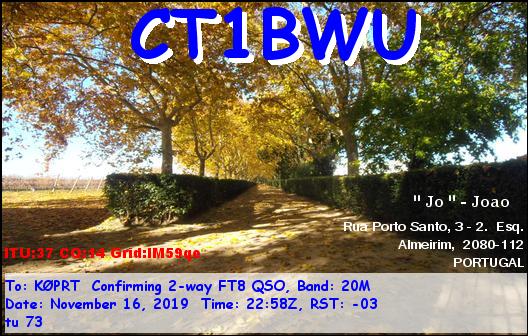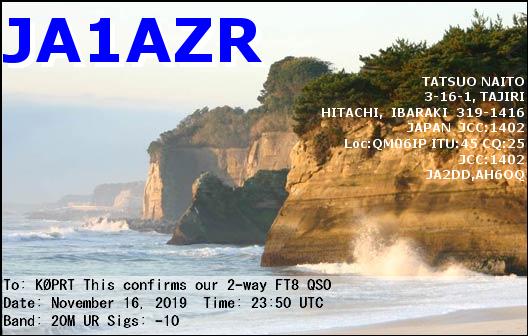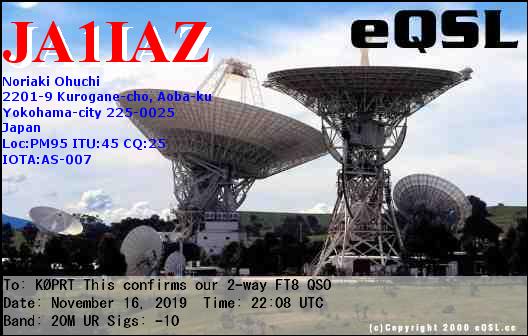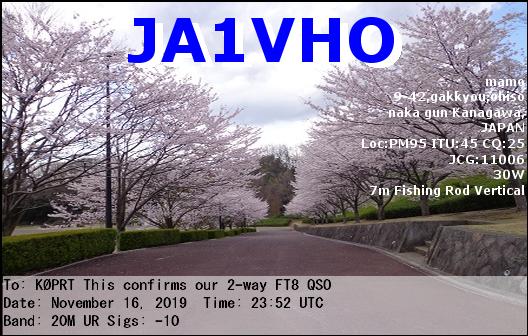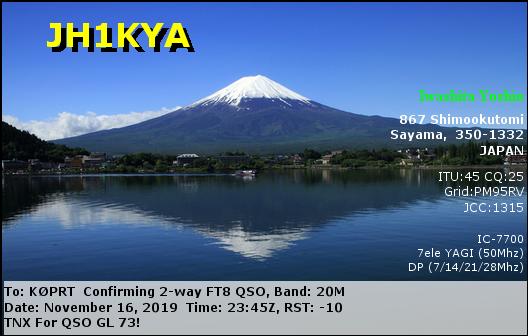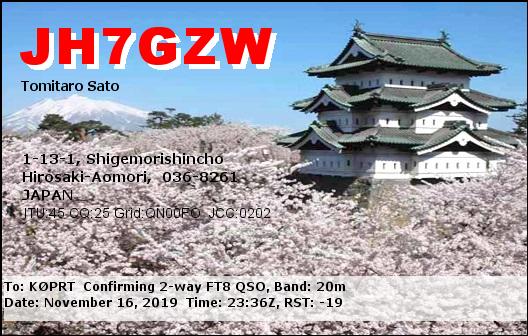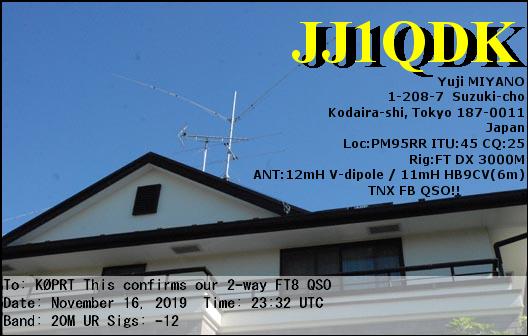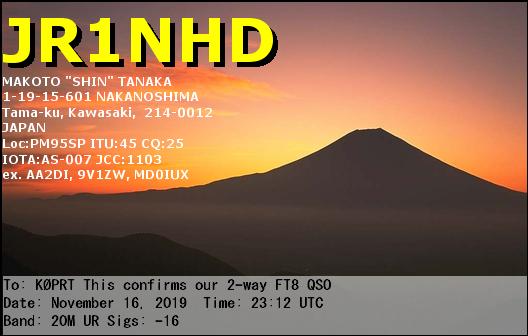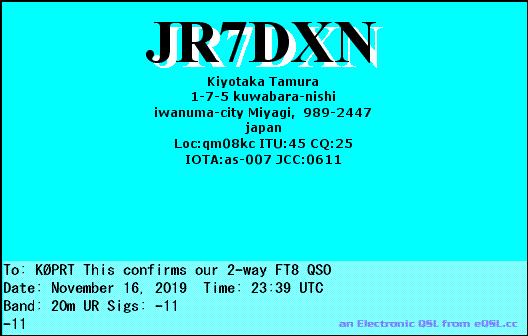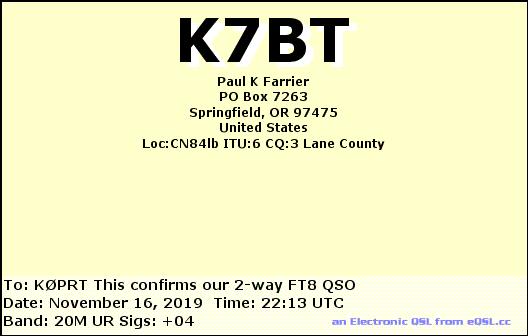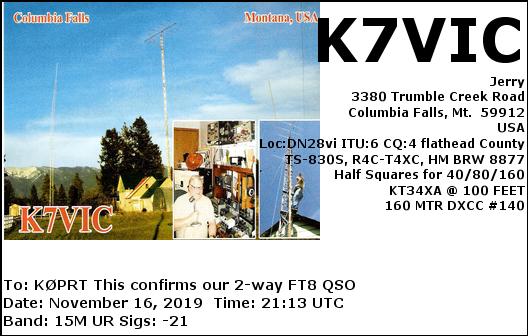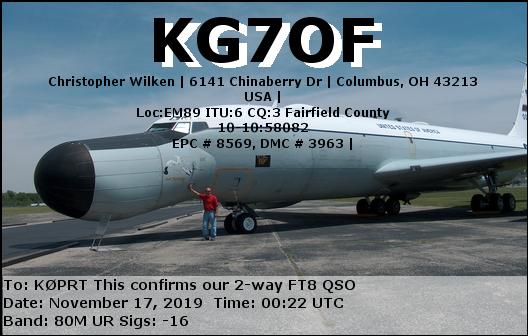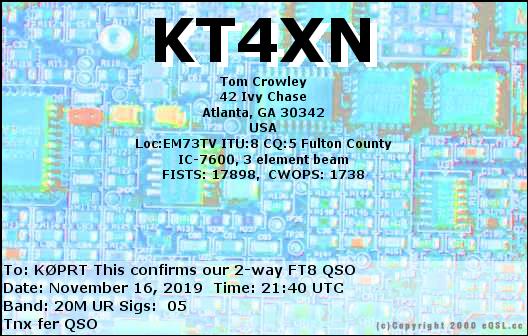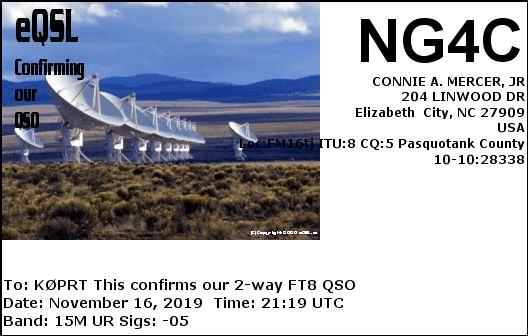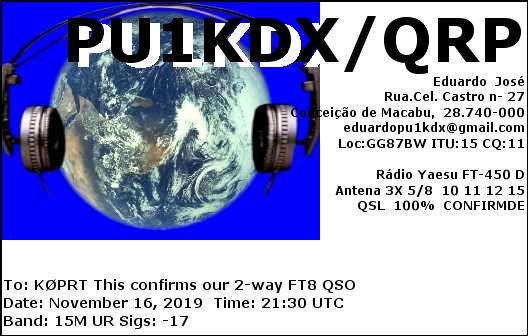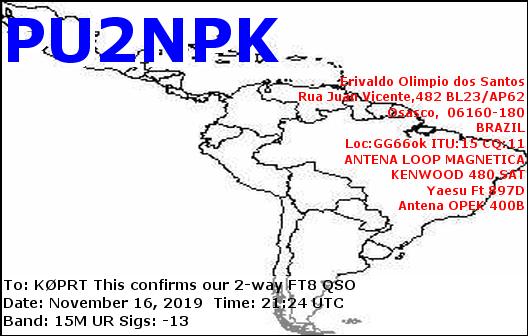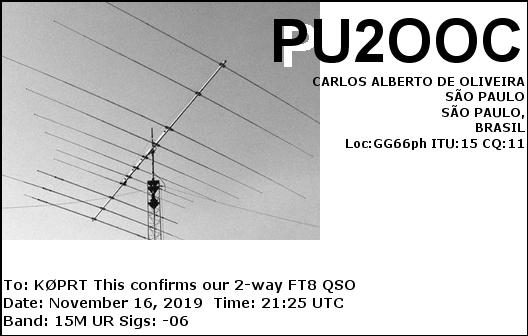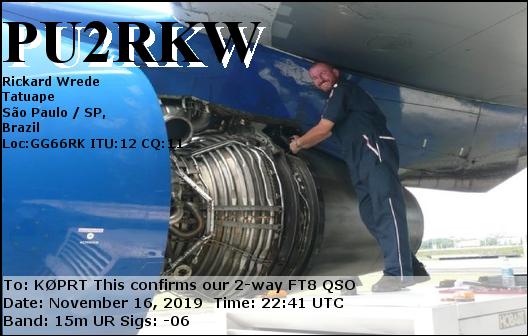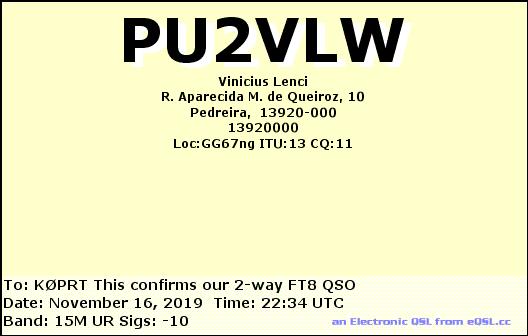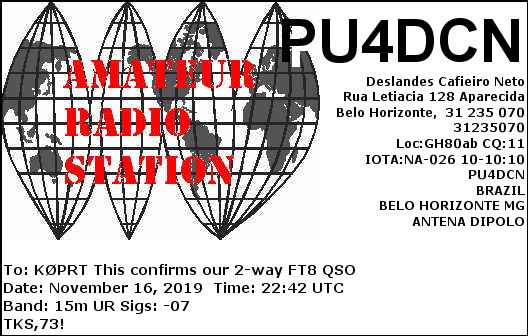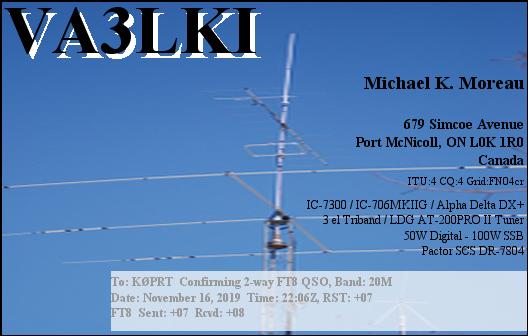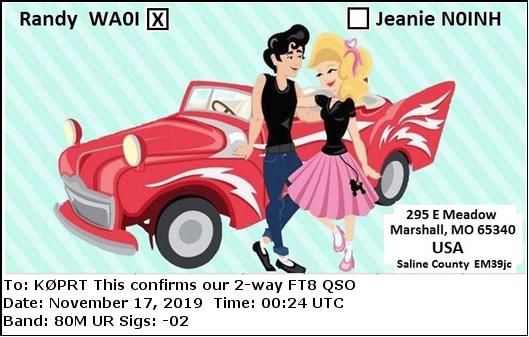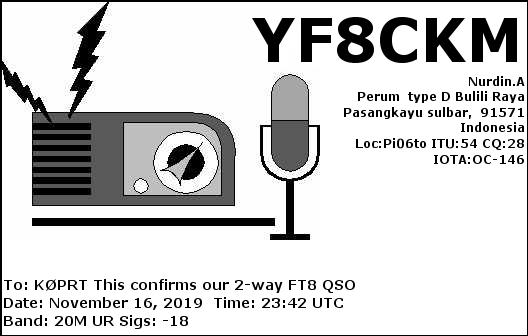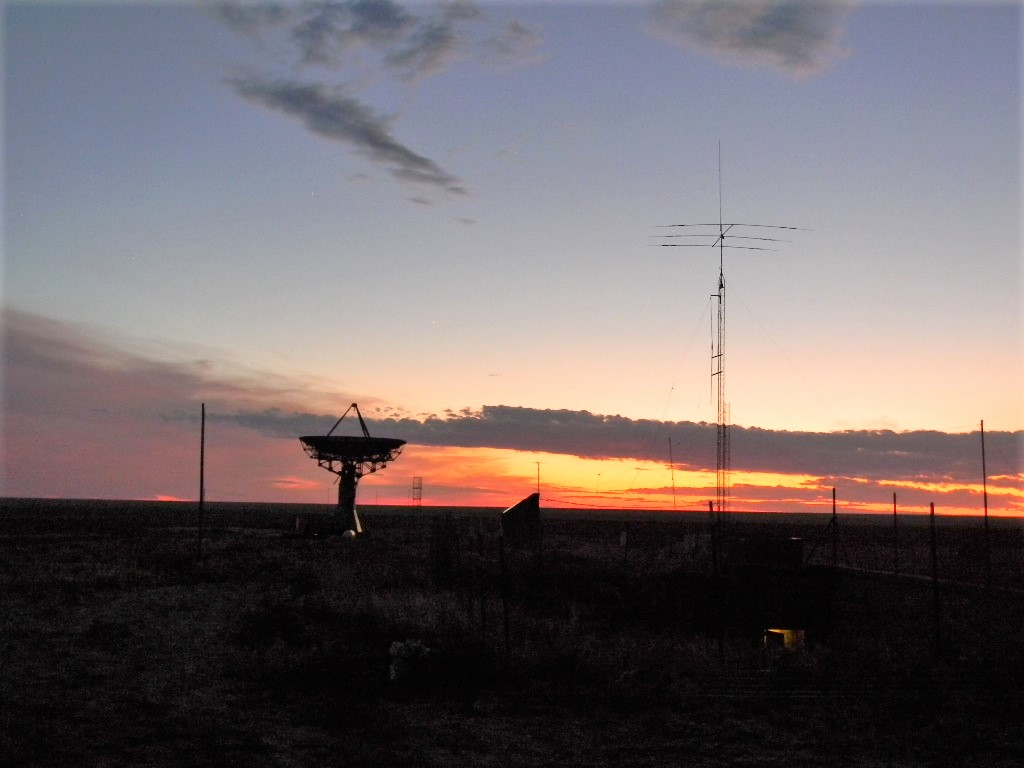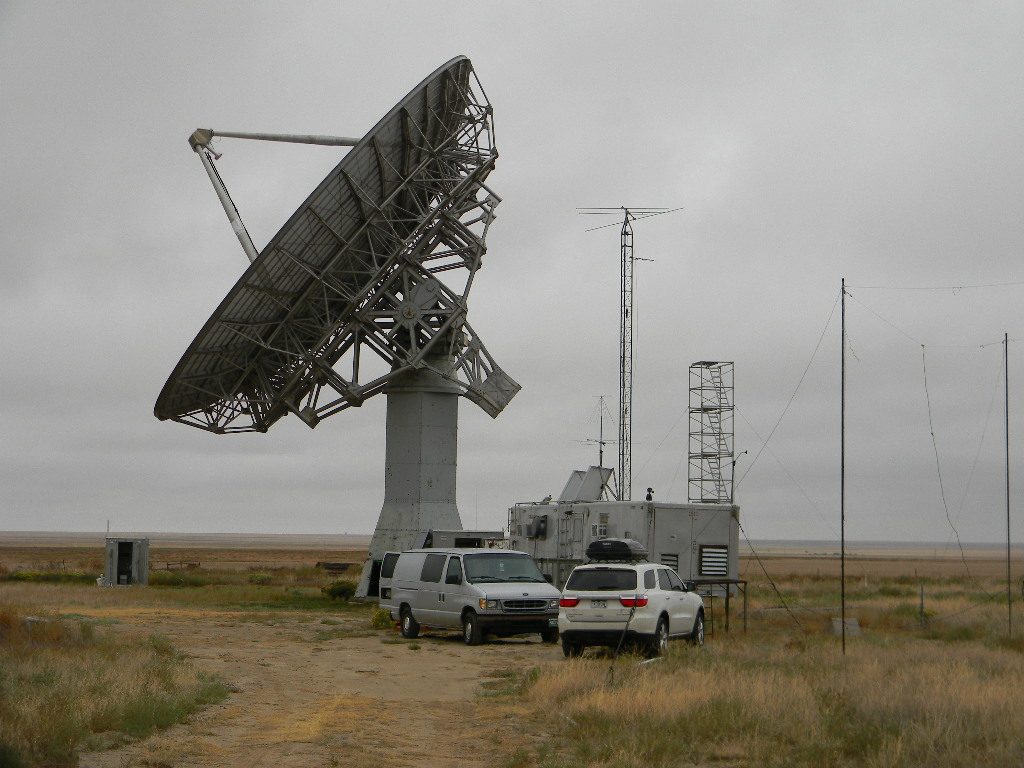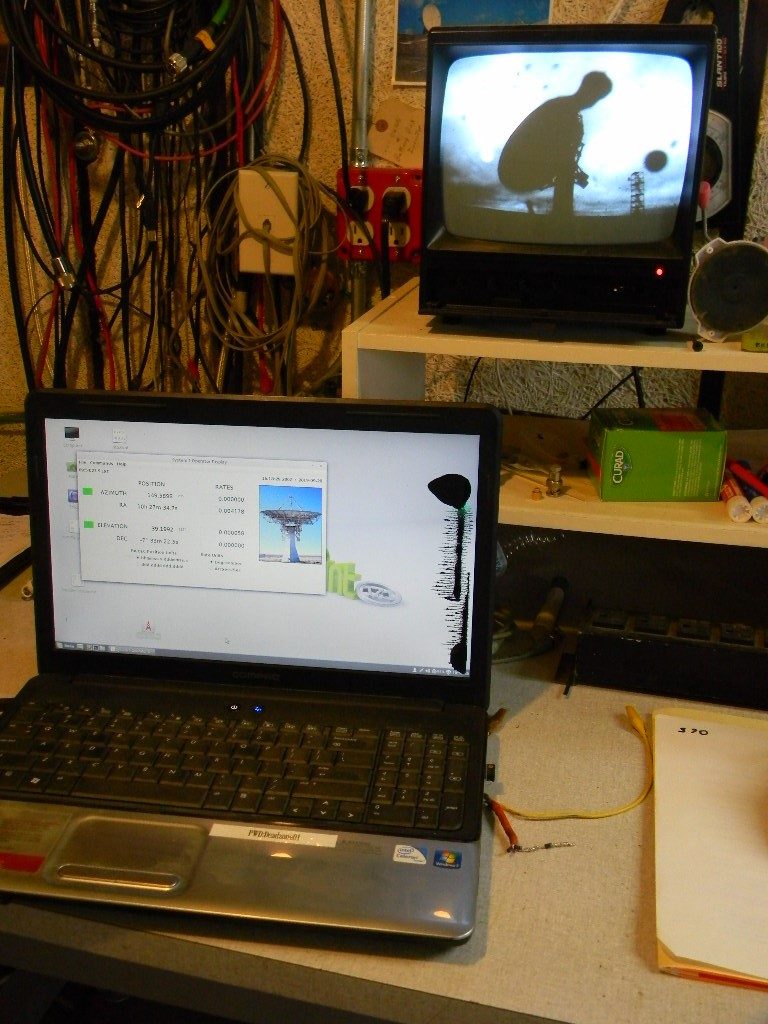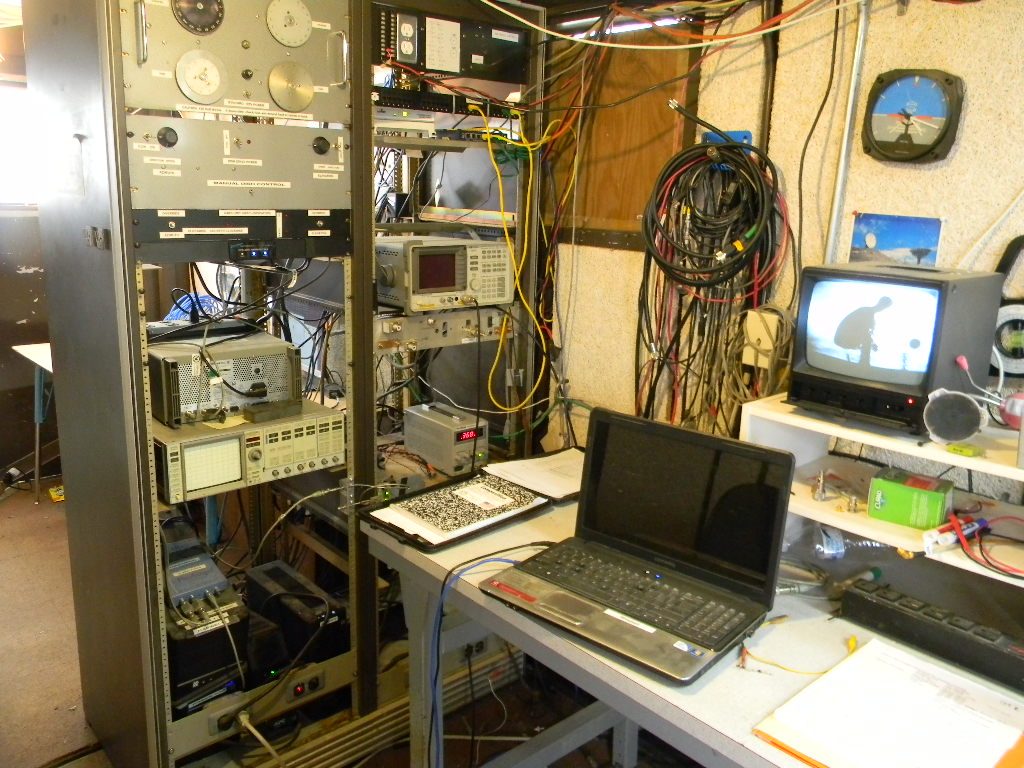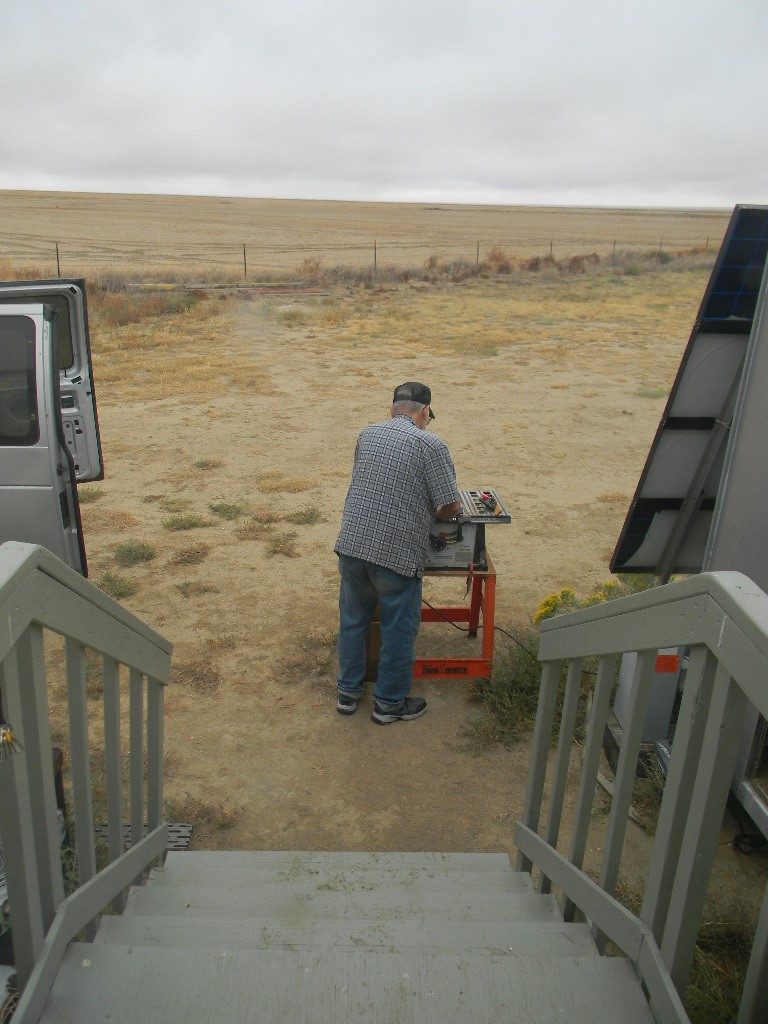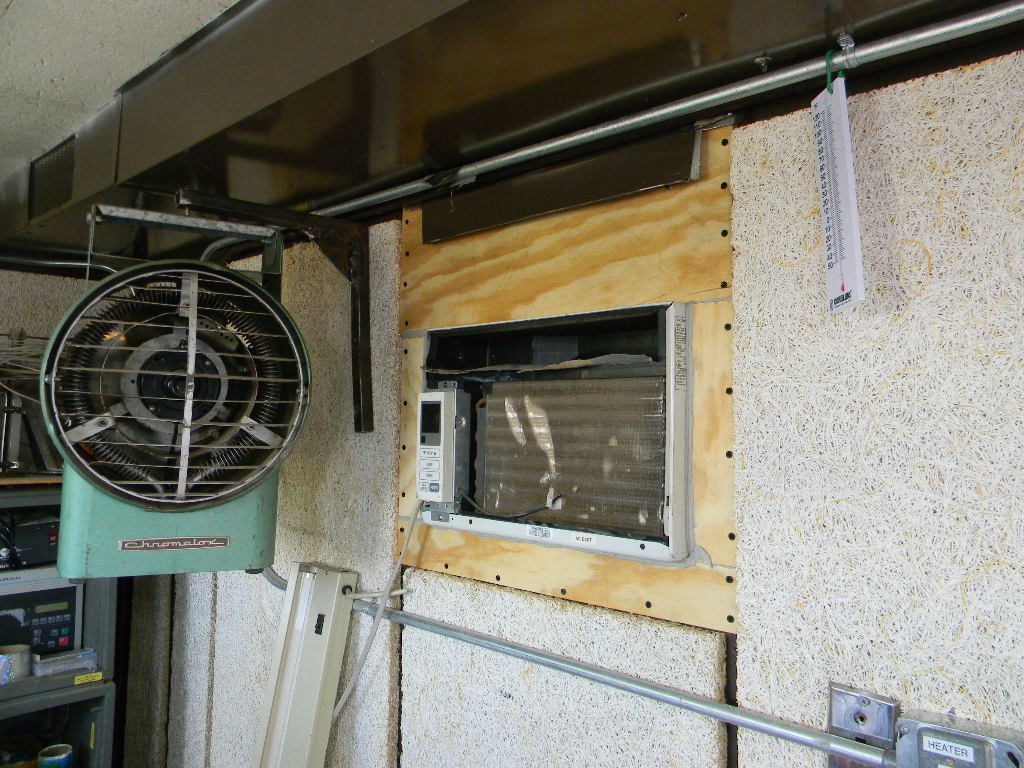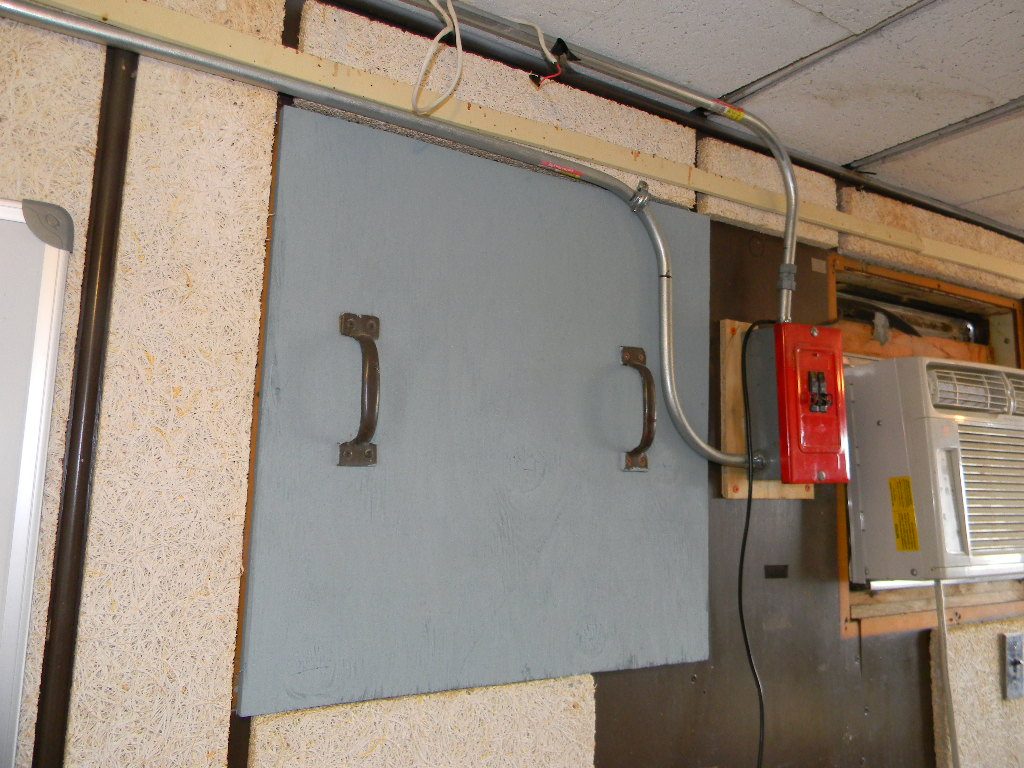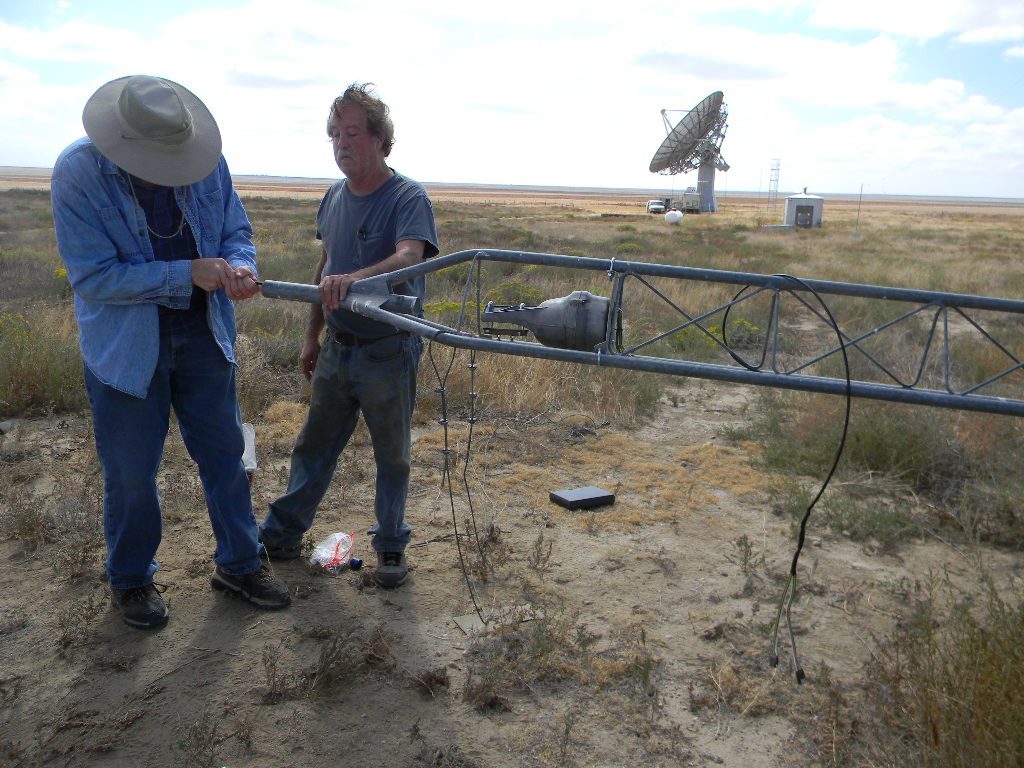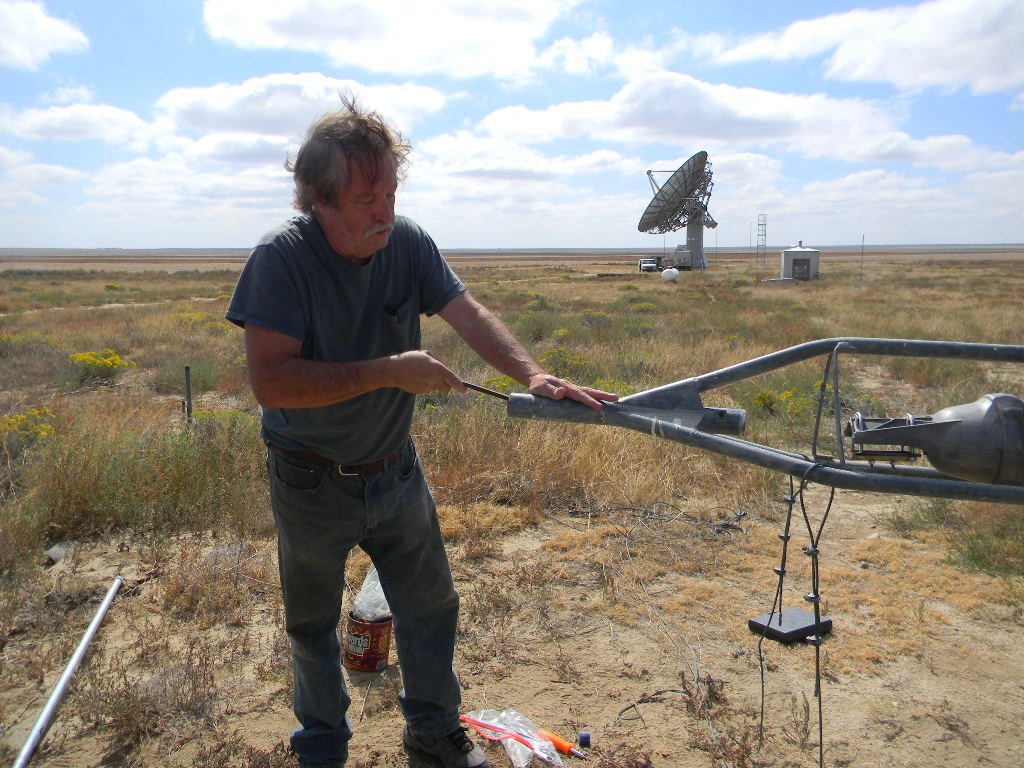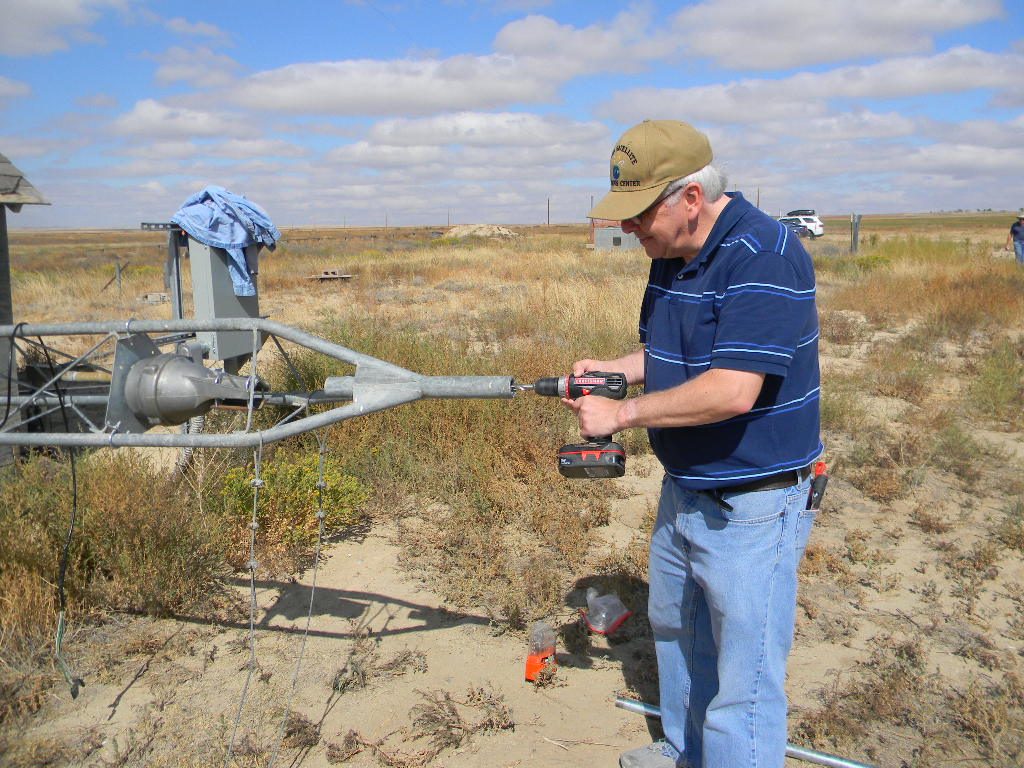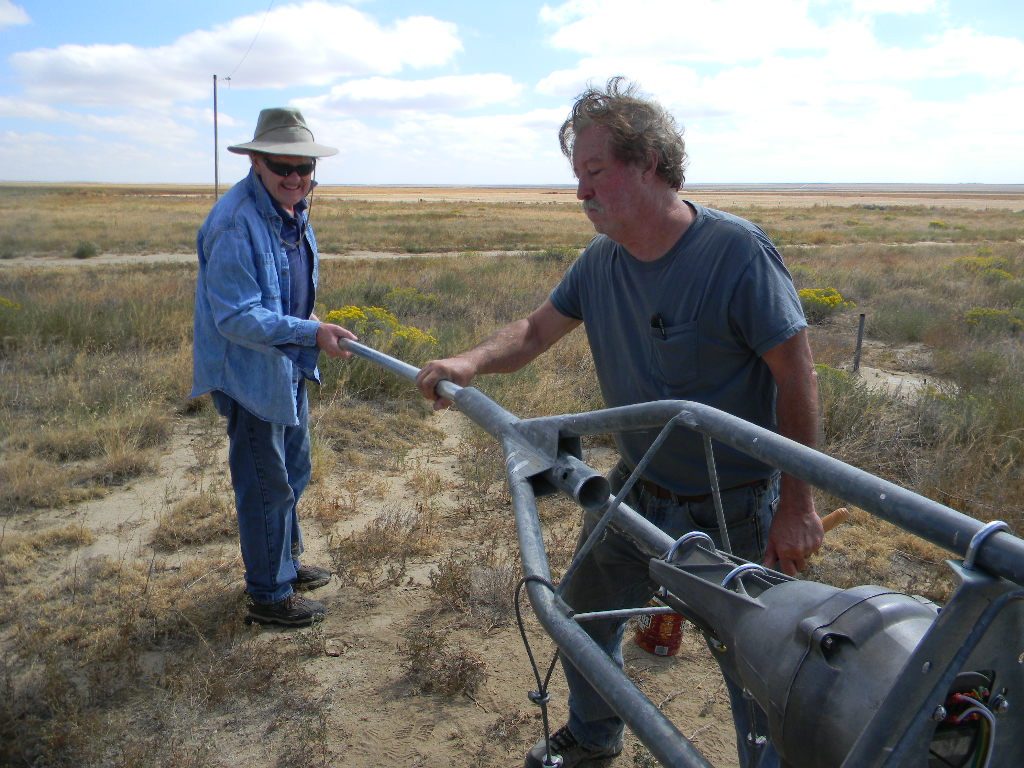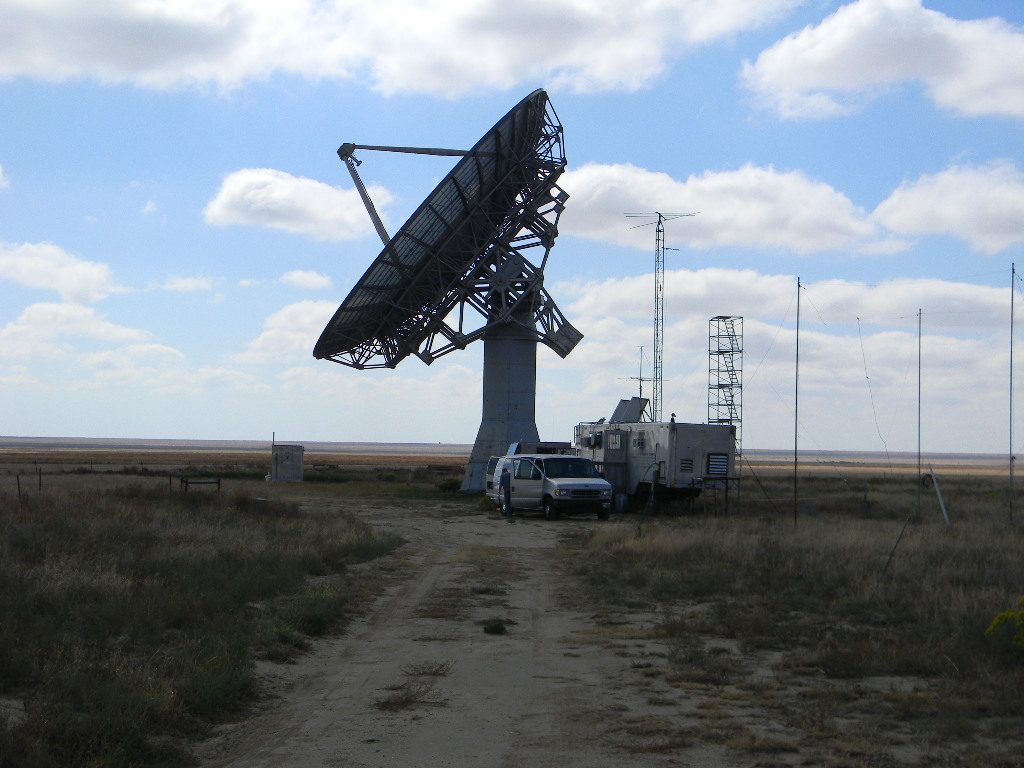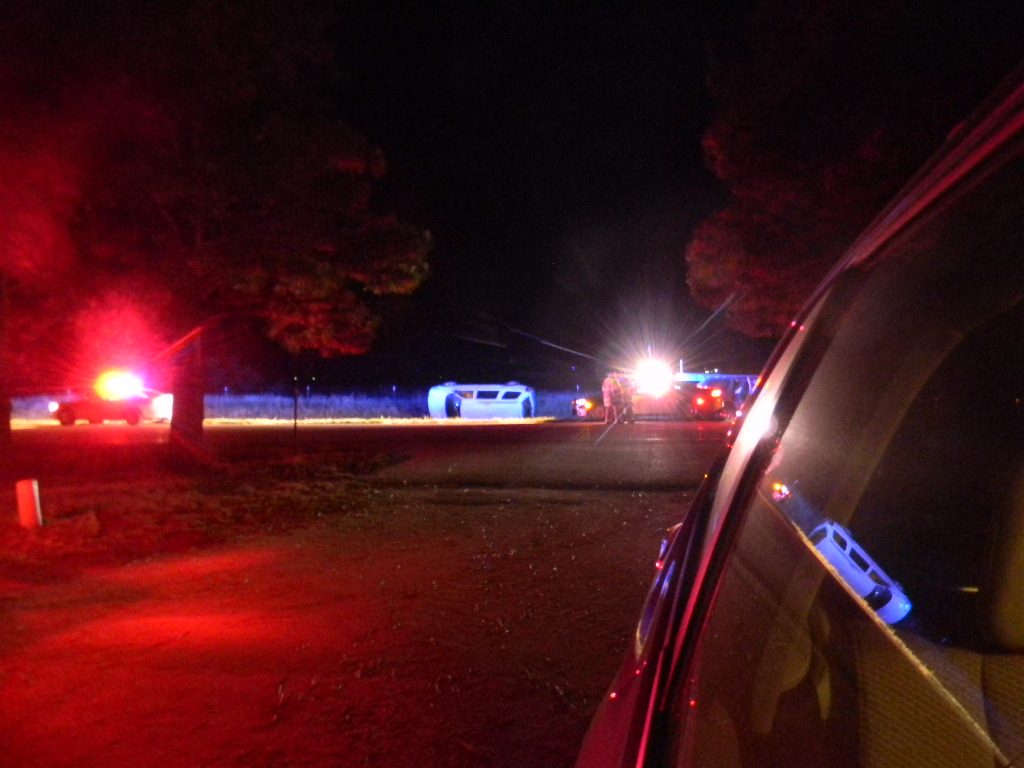By Gary Agranat (WA2JQZ)
This past weekend our radio telescope group DSES successfully operated EME (Earth Moon Earth) Moon bounce communications again. EME Moon bounce is transmitting and directing signals to reflect off of the Moon, about 240,000 miles away in space, and communicate with anyone else on Earth who has the Moon visible above their horizon and who has similarly capable equipment. As we did last year, we participated in the ARRL annual EME contest. We used our restored 60-foot dish antenna, operating at 1296 MHz, with our call sign K0PRT. This turned out to be our smoothest and most successful EME operation to date.
We can only communicate sending signals off of the Moon when the Moon is above our horizon. For this past weekend the Moon was just past full, which means the Moon rose just after sunset, and set shortly after sunrise. That means we could only operate during the night time — all-nighter operations.
Ray Uberecken (AA0L) and Gary Agranat (WA2JQZ) were the primary team on the site operating for the full weekend. Marc Stover was on site all of Friday night, taking time-lapse night photography of the dish antenna as it tracked the Moon, with the starry sky moving as the Earth rotated. Our science lead Dan Layne (AD0CY) was on site on Saturday afternoon and evening. He particularly helped us properly configure our digital mode, and he succeeded in making Q65 digital contacts to South American and Europe. Both Marc and Dan also got some experience calling CQ on SSB voice, and they heard their voice signals traveling at the speed of light reflected back about 2 seconds later.
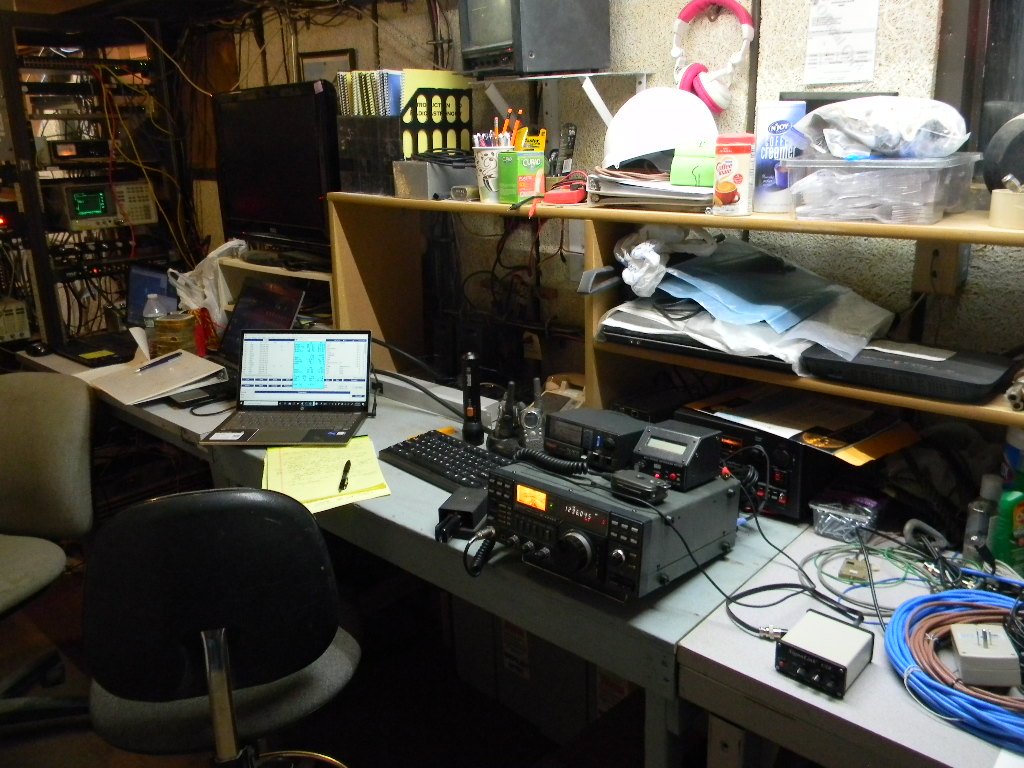
This was our most successful weekend EME Moon bounce operation to date. We made 19 contacts the first night, and 26 contacts the second. (In comparison, last year for the first weekend of the contest we made about 25 contacts, and we operated then for just one night.) Just about all of our equipment worked perfectly and smoothly. 42 of our contacts were by using Morse Code. Dan made our two Q65 digital mode contacts: to IK7EZN in Italy and CX2SC in Uruguay (our only South American contact). Our other contact was using SSB voice (with DL6SH in Germany). EME voice communications requires better equipment capability and often also more power, so making EME voice contacts is generally rarer.
Almost all of our contacts were done between Moonrise and about 1 AM local time, on each of the two nights. We had a moon path to Europe until about that time. By then Ray and I (Gary) were feeling tired enough, and the European signals were becoming sparse. We were aware that in another hour or so Japan should have moonrise and give us a communications path to us. But we decided getting some sleep was more important, and we chose to sleep. We woke again around sunrise and went back on the air, with the Moon then to the west over the Pacific Ocean. On Saturday that enabled us to work DU3T in the Philippines, and VA7MM in British Columbia, Canada. We heard DU3T work an Australian station, but we didn’t hear the Australian station ourselves. We tried calling CQ ourselves, but didn’t hear anyone else. On Sunday morning we didn’t succeed in contacting anyone — we suspected we might not find anyone by then, but we believed the try was still worth it. (By comparison, last year once the Moon gave us a path across the Pacific, we were able to work 2 stations in Japan and one in Australia.)
On our second night we made contact with our DSES member VE6BGT Skip Macaulay in Alberta, Canada.
With our 60-foot antenna we are probably one of the stronger and more capable stations on the air. We consistently got strong signal reports from other stations. I typically got RST reports of 579. Most of the stations I gave signal reports to had much lower values, from 219 to 569. We were outputting about 150 Watts.
As an indication of our good signal, on Saturday night I had a run of 18 Morse Code (CW) contacts in a row, in a period of about an hour and a half. That is, after I completed one contact, I heard someone else trying to contact me, and I then continued with them. This kept happening for 18 contacts straight. In ham radio terminology this is called a “pile up”. This is fun and uplifting when it happens. But it also takes endurance and energy and patience.
Often the signals we heard were extremely weak. And so there is definitely some skill to bring to bear. Depending on conditions, I may need to repeat key parts of the message many times. For Morse Code CW I may need to adjust the speed of my sending to a rate and pattern that I think the other person can copy. By choosing how I send, I indicate to the other person how I am hearing him or her, and that person can then adjust to my conditions too. It helps to be mindful too, so that one doesn’t make the other person feel intimidated. We are trying to make successful contacts, we also are part of a community.
Of our total 45 contacts, 28 (the majority) were with Europe. Those were with Germany (DG5CST, DL6SH, DL7UDA, DF3RU, and DL0SHF), Poland (SP6JLW, SP7DCS, SP9VFD, SP6ITF, and SP3XBO), Sweden (SK0CT, SM5DGX, SM6FHZ, SM7FWZ, and SM4IVE), Czech Republic (OK1KKD, OK1CA, OK1CS, and OK2DL), Italy (IK2DDR, IK3COJ, and IK7EZN), France (F5KUG and F6KRK), England (G4CCH and G3LTF), Finland (OH2DG), and European Russia (RA3EC). 12 contacts were with the continental US: WA9FWD (WI), N8CQ (NC), NQ7B twice (AZ), WK9P (IN), N5BF (CA), WA6PY (CA), WB8HRW (OH), W2BYP(NY), K2UYH (NJ), K3WM (PA), and W6YX (Stanford University, CA), plus one with Alaska (KL6M). 2 were with Canada: VE6BGT (AB), and VA7MM (BC). Plus we had the digital contact with Uruguay CX2SC. And DU3T in the Philippines.
***
I’ll mention, during the daylight hours on Saturday, while we had some quiet time in between Moon passes, Ray and I each spent some time with other activities. Ray did some autumn cleaning of the operations trailer. That included reorganizing the rack equipment, to make it easier for our current needs, and removing cables not in use. Ray also switched our cable for receiving GPS to an antenna on the roof, from the portable antenna we had been using inside.
Meanwhile I went to operate our HF (High Frequency) ham radio station at the bunker. I had not been on site for over a year. I wanted to check that our HF equipment and antennas were still functioning Okay. Starting around 1 PM local time I made some casual SSB contacts with our multiband vertical antenna and our directional 3-element Yagi antenna on the 50-foot tower, on the 20 and 15 meter bands. Most of those contacts were Parks on the Air stations around the country. I contacted NB6GC as well, the USS Hornet Museum ship in Alameda, CA (Bay Area) for a special event commemorating the splashdown of Apollo 12. The operator there noticed our callsign for DSES, and he told me he would be operating EME that evening too, though I think on a lower frequency. I also tried going on the 40 meter band with the vertical, but I mostly heard regular weekend nets, and I didn’t want to interfere with those. Starting at 2 PM local I then operated on the ARRL November Sweepstakes SSB contest. I chose to stay mostly on the 15 meter band with the Yagi, as 15 meters seemed more relaxed than 20 meters, and we had good propagation to the US northeast. I also swung the antenna around to contact stations I heard in California and Washington State. I sometimes searched around the band, I sometimes held a frequency and called CQ. Later I did try 20 meters too. In all I made 57 contacts, to 32 of the 84 ARRL sections in the US and Canada. Besides getting on the air and testing our equipment, I was interested to have our club station with our callsign participate with the rest of the ham community, so that other hams get to know us and to feel us as part of their community. I operated on HF for about 2 hours, though not all at once.
The one maintenance issue I had for the HF station is that the Yagi antenna direction was offset from the indication on the rotator control by about 80 degrees. I compensated for this while I operated. I remember that when we last had the tower lowered for maintenance over a year ago, the rotator didn’t seem able to lock.
***
As I mentioned, this was our most successful EME event to date, with 45 contacts and with no major equipment problems to troubleshoot. The automatic tracking system worked flawlessly, allowing us to concentrate on the signals we heard and making contacts.
This past weekend’s operation was the first of two parts of the ARRL EME contest in which one can use 1296 MHz. We plan to operate for the second part too, which will be on the weekend of December 18 & 19, 2021. Several more of our members, and at least one local ham, plan to come for that.
***
EME has been a major strategic goal of DSES since we started restoration of our 60-foot antenna in 2009. An immense amount of work was done in our group to achieve the capability we have now. The most visible aspect now is in making the operation work, and in developing our experiences to make the operation work well. Yet behind the scenes there have been many people, and much work in many more aspects — for example, the infrastructure repair and modernizing, restoring full electric power, developing from scratch the automatic tracking, to name just a few. To my mind this is a lot like having our own Moon mission.
And at the same time we’ve been developing our science capability and doing science too.
To me as well, hearing one’s signal come back 2 seconds later at the speed of light from the Moon and communicating with others around the world this way still takes my breath away. I really am doing something physical with the Moon, a celestial object out there in space, and the Moon physically responds back. To me the Moon is no longer something in the sky I just see, it is a physical object in space I have touched in some way and it has responded. And the speed of light and the wave-nature of light are no longer something just theoretical — I have to deal with those practically. I think something has changed and grown, for each one of us in DSES who have had the opportunity to work with EME.



